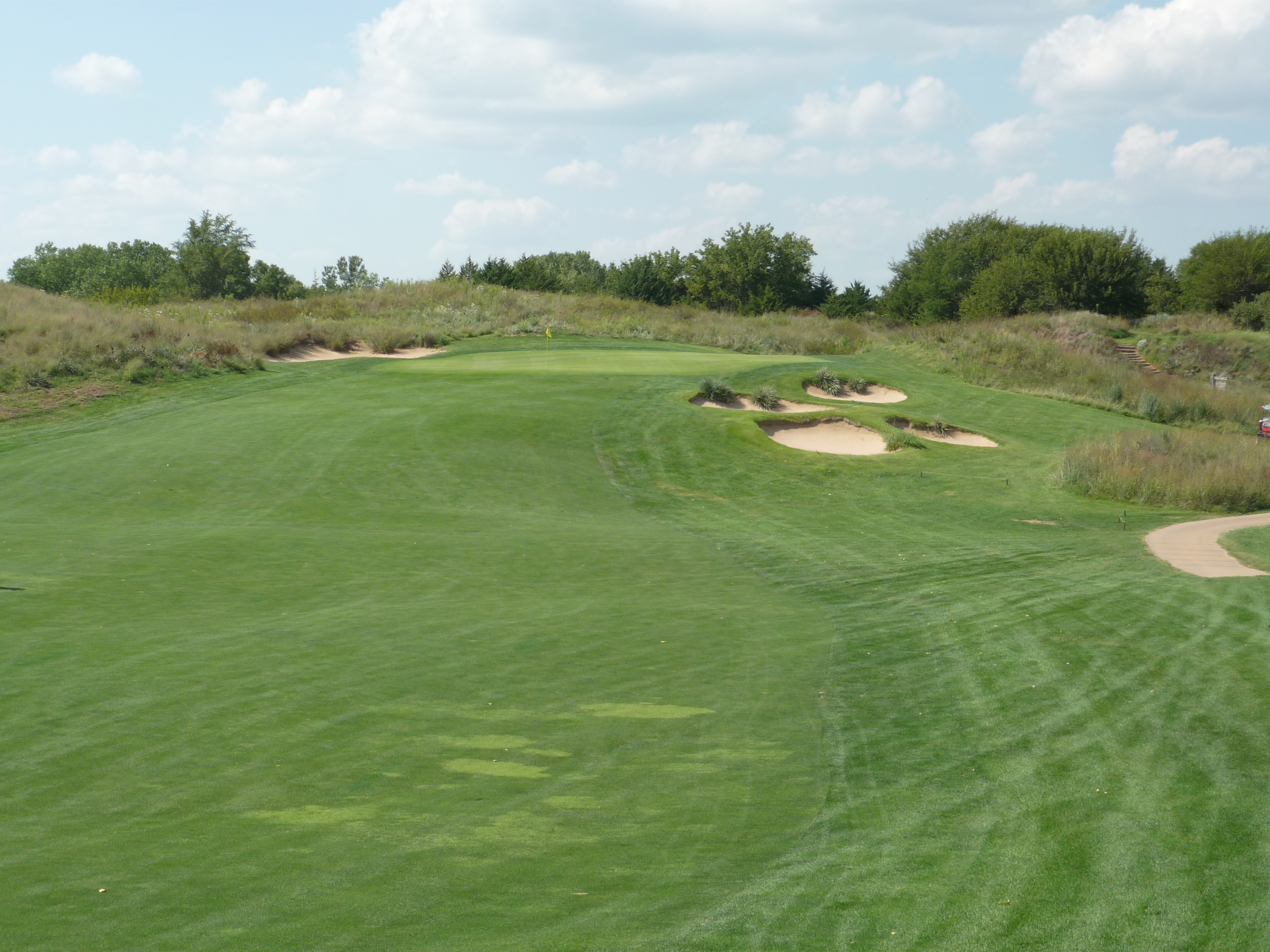
Prairie Dunes Country Club – Played August 2015
- Rankings: Golf Digest #25, Golf Magazine #17
- Location: 4812 East 30th Avenue, Hutchinson, Kansas
- Year: 1937
- Architects: Perry Maxwell & Press Maxwell
- Course Access: Private
- Walking Rules: Carts & Caddies Available
Score Card Information:
- Gold: 6,940 yards, Par 70, 75.5 Rating/146 Slope
- Blue: 6,535 yards, Par 70, 74.1 Rating/139 Slope
- White: 6,119 yards, Par 70 (Men’s), 72 (Women’s), 72.3 Rating/136 Slope (Men’s), 77.1 Rating/138 Slope (Women’s)
- Silver: 5,462 yards, Par 70 (Men’s), 72 (Women’s), 69.2 Rating/135 Slope (Men’s), 72.9 Rating/132 Slope (Women’s)
- Bronze: 5,035 yards, Par 70 (Men’s), 72 (Women’s), 67.4 Rating/132 Slope (Men’s), 70.5 Rating/126 Slope (Women’s)
This was a real treat! Due to a friend that is a nonresident member, a group of seven of us would be teeing it up at this masterpiece. The town that is home to Prairie Dunes is not very big and I believe that driving in you would be surprised to know that it has a Top 25 golf course. Don’t judge a book by its cover! The club is home to tennis, golf, swimming pool, clubhouse/restaurant, and guest cottages. We stayed in the cottages and they were awesome! A few pictures of those can be seen below.

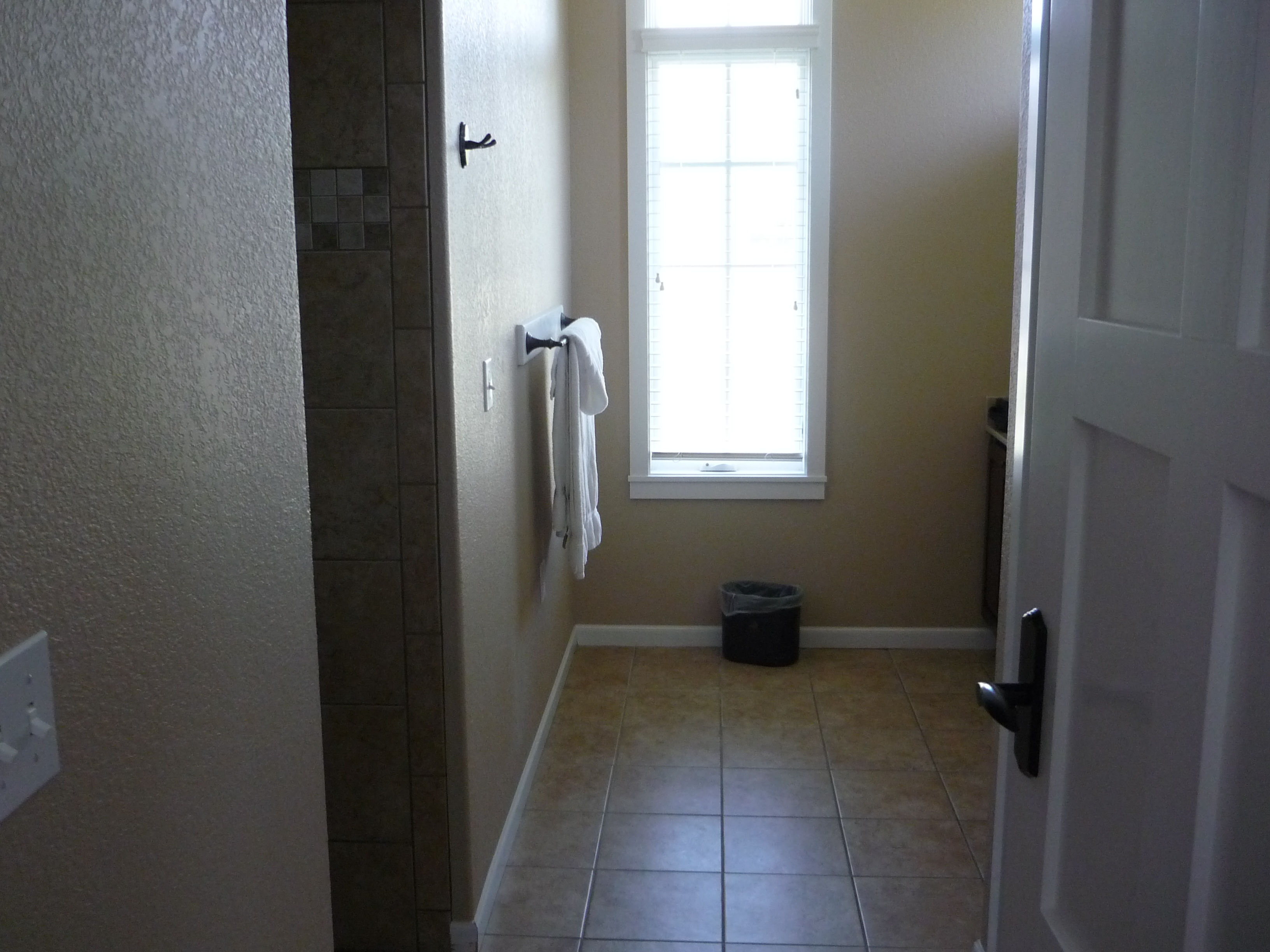
Once we all got to the course, we unloaded our things and made our way to the men’s card room. We had a great lunch there and we were all filled with anticipation of our rounds. I must say that the wait staff was very attentive and knew exactly what you wanted after you ordered it once. It was quite an experience.
According to our host, there are quite a few non-resident members on the roll. This makes Prairie Dunes a regular host to semiannual treks from various parts of the country. You never know who you might meet.
The course is quite unique. I don’t believe you would confuse it with many other places in the US. As you will see in the following pictures, there is a lot of variance in the terrain which I was not expecting to see in Kansas.
Prairie Dunes was founded by Emerson Carey, the founder of a salt company. He enlisted Perry Maxwell to design the course. Per the club’s website, they used 18 horses and mules, Fresno scrapers, and wheelbarrows to mold the land! The first nine holes were completed in 1937 and in 1957 Perry’s son Press added nine more. There is some debate as to whether or not Perry already had plans drawn for the new nine holes, but we will leave that discussion for another day.
The course has a wonderful tournament history. It has hosted the 1964, 1980, and 1991 US Women’s Amateurs, 1986 Curtis Cup, 1988 US Mid Amateur, 1995 US Senior Amateur, 2002 US Women’s Open, 2006 US Senior Open, and 2014 Men’s NCAA Championship. In addition, it hosted the Trans-Miss Men’s Amateur in 1958, 1973, 1987, 1996, and 2005.
Let’s get into the course tour. We played multiple rounds, but I took the pictures from the white tees. All yardages will be from there. Believe me, just because the yardage is short doesn’t mean you won’t get all the golf course you can handle. I have gotten into the habit of taking pictures of the big clocks a lot of top courses seem to like to install. Check out the one at Prairie Dunes below.
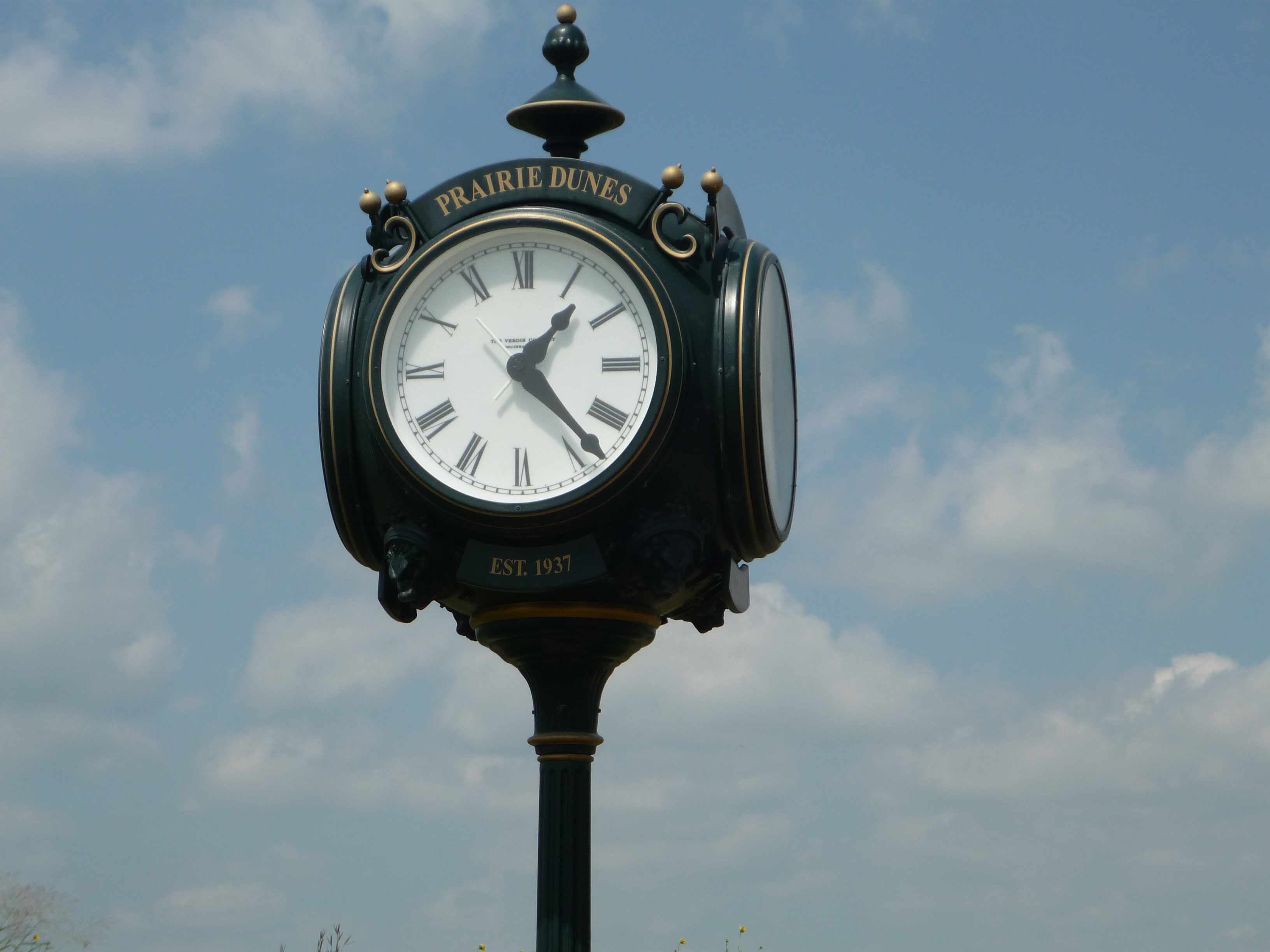
The clubhouse sits right next to the first tee. It contained a dining room, locker rooms, card room, and pro shop among other things. It fit very well with the club.
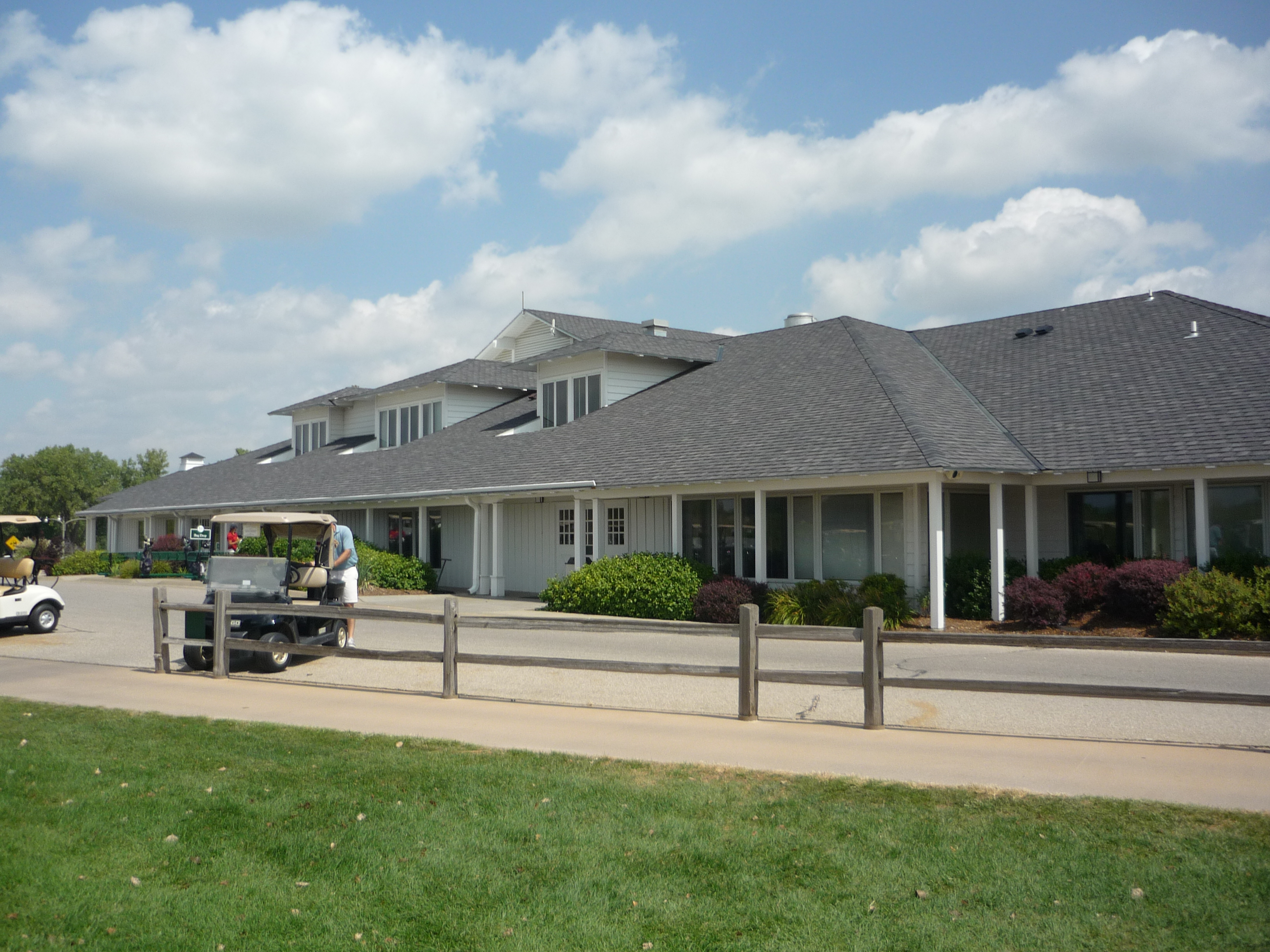
Hole 1 – 435 yards – Par 4 – Carey Lane
The holes at Prairie Dunes all have names. That is always a nice touch that I appreciate. The opening tee shot plays to a pretty large area. You can hit it through the fairway on the right side. The hole bends sharply to the left. A good line is at the bunker you can see on the left.
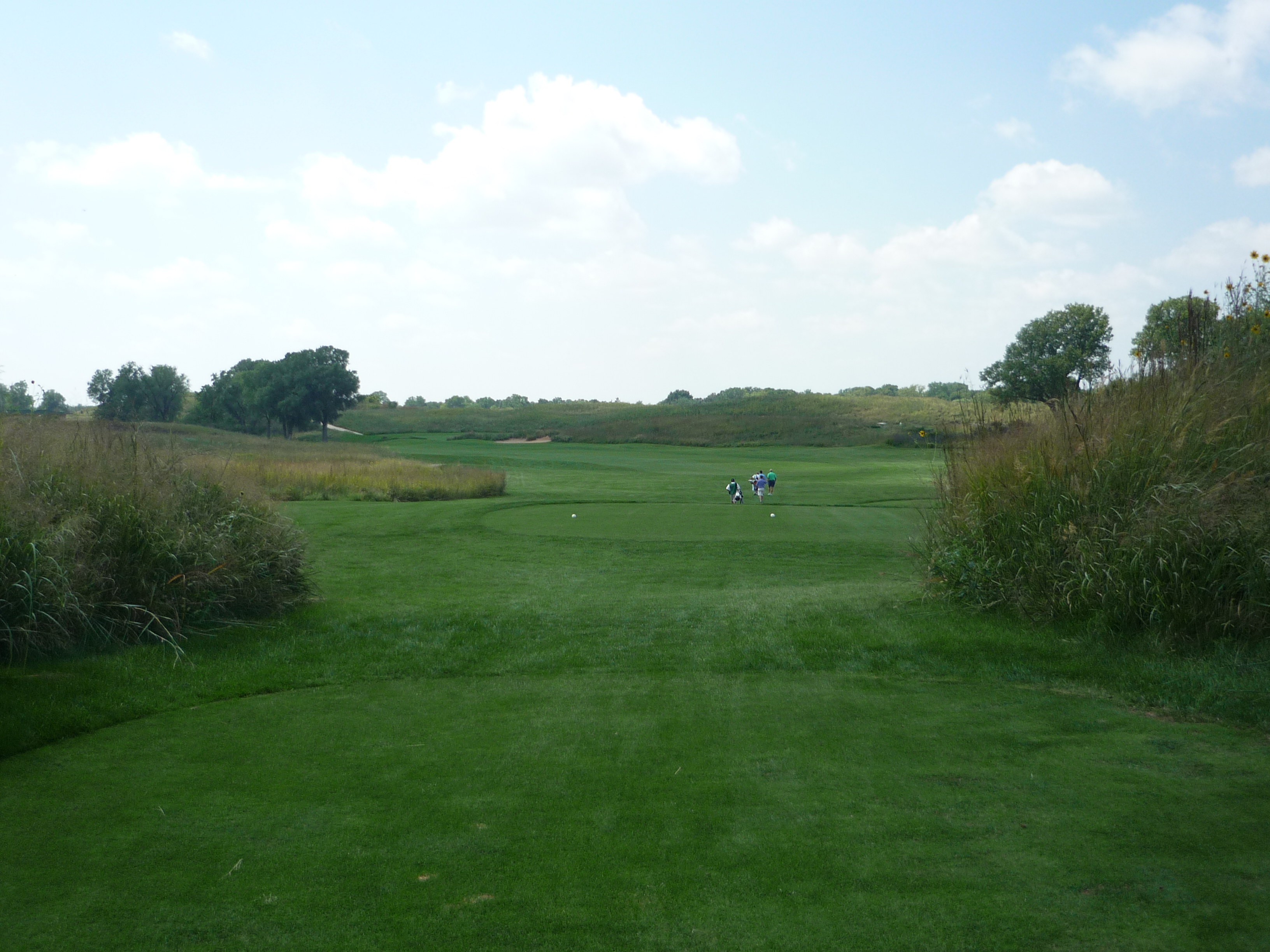
The approach plays to a green that is wide open in front. We saw multiple shots from our group hit well in front of the green and trundle up onto the putting surface.
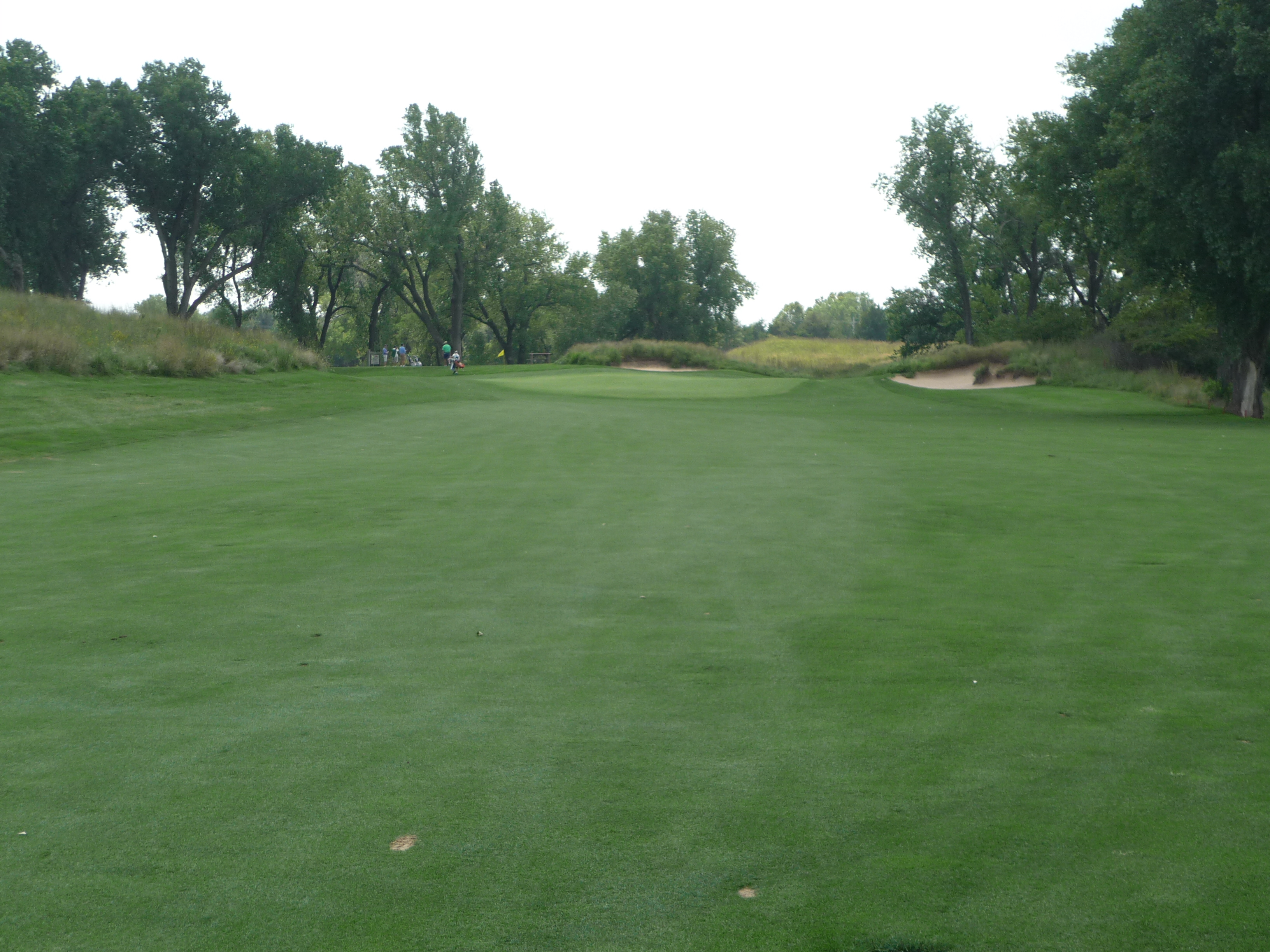
The green is quite sloped with the false front you can see below.
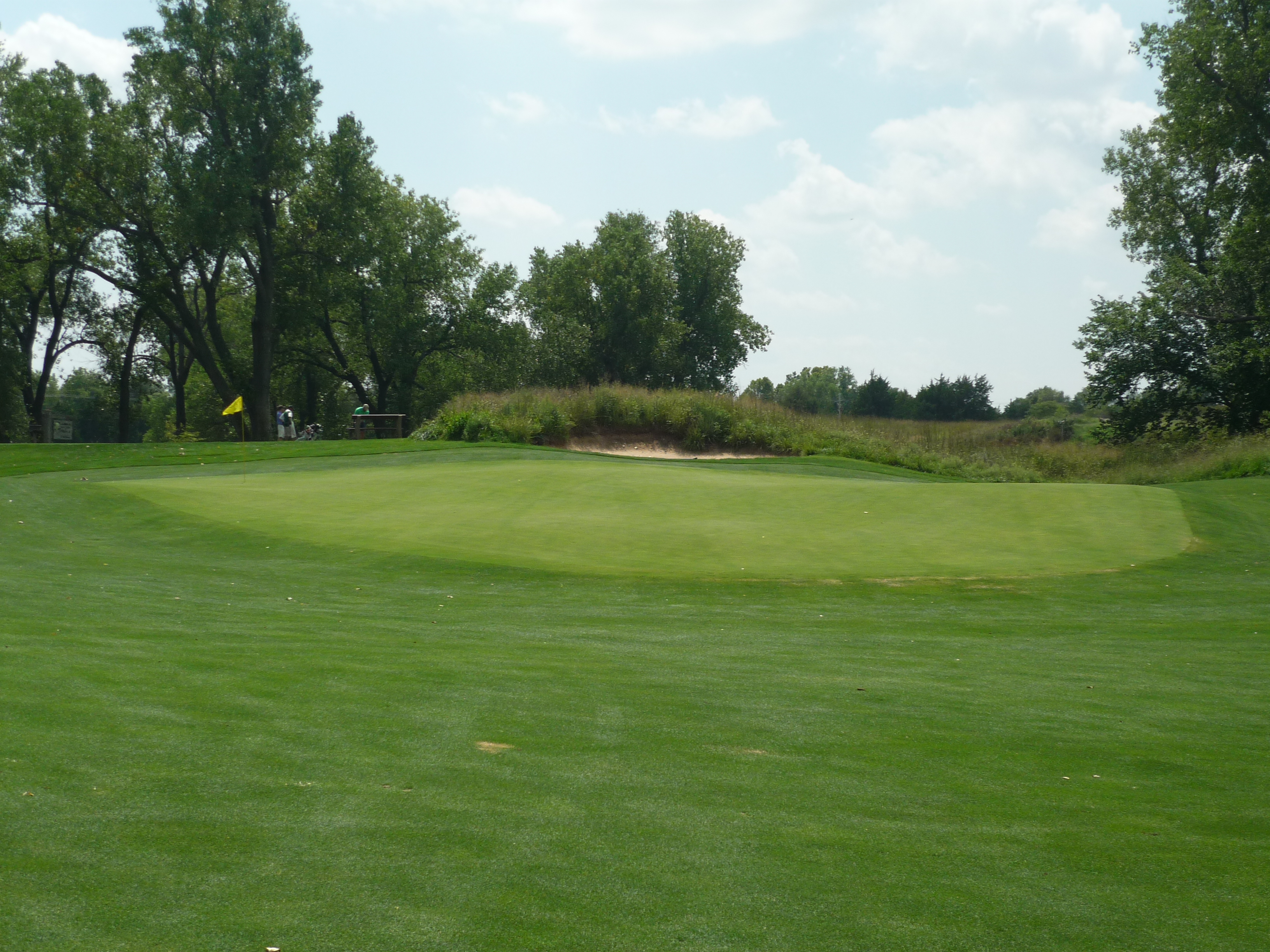
This photo from behind the green really accentuates the slopes.
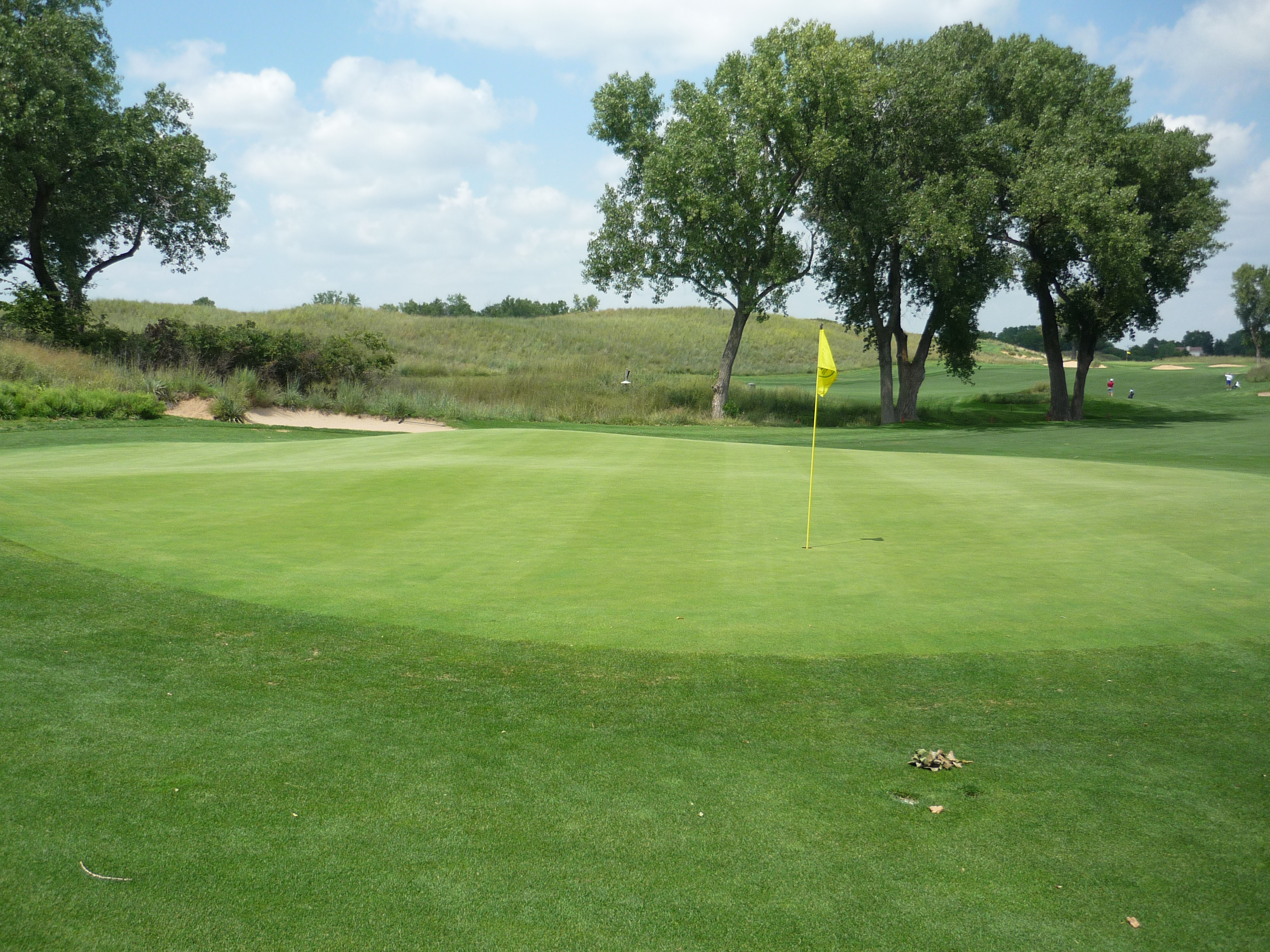
Hole 2 – 161 yards – Par 3 – Willow
Each hole at Prairie Dunes gives you a visual representation of what you will face. This is very helpful for your first time around the course.
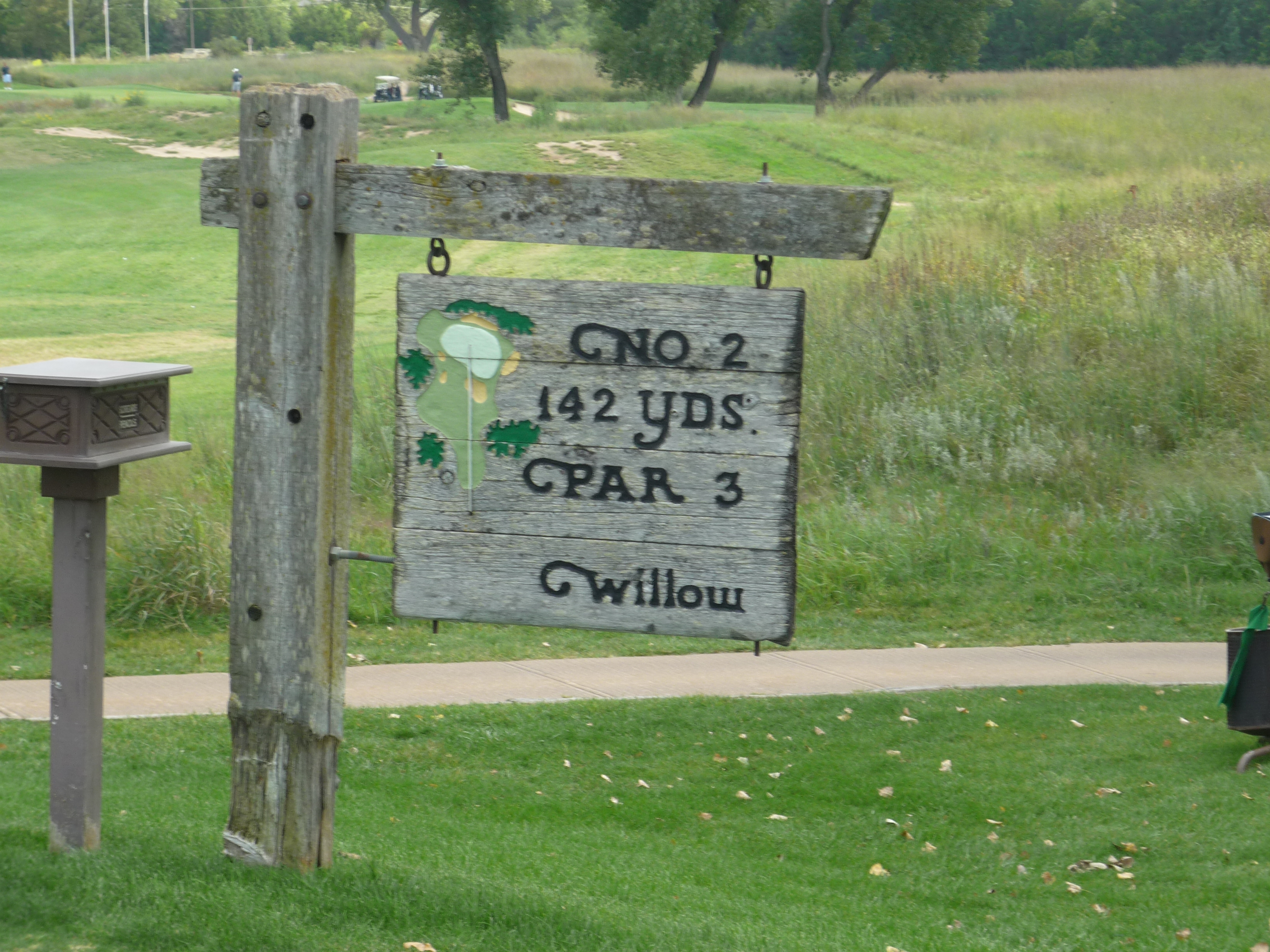
The shot here needs to be contemplated. You don’t want to come up short due to the rough and bunkers. There is also a false front on this green that needs to be carried.
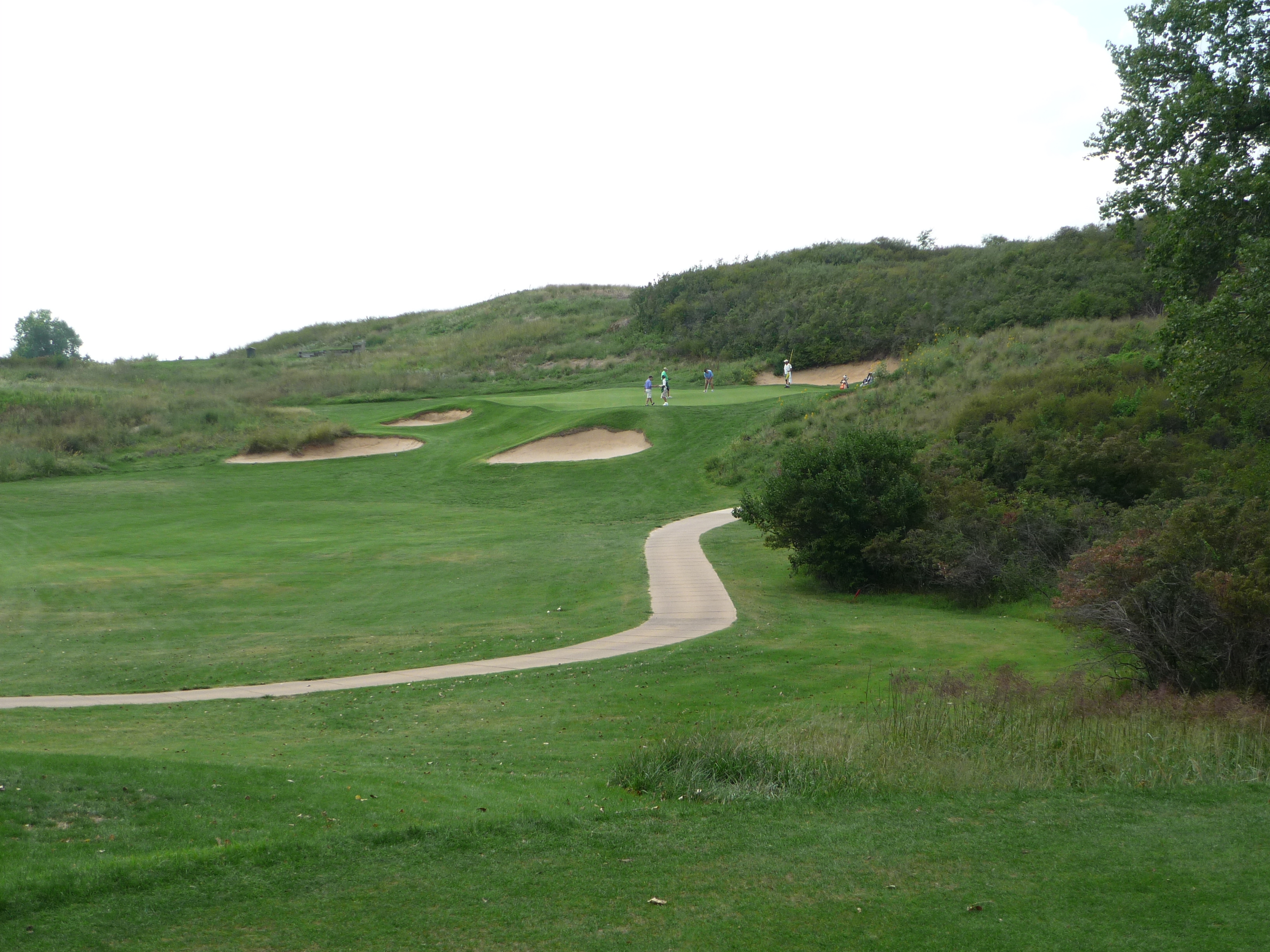
Here is a shot of the green showing the internal contouring.
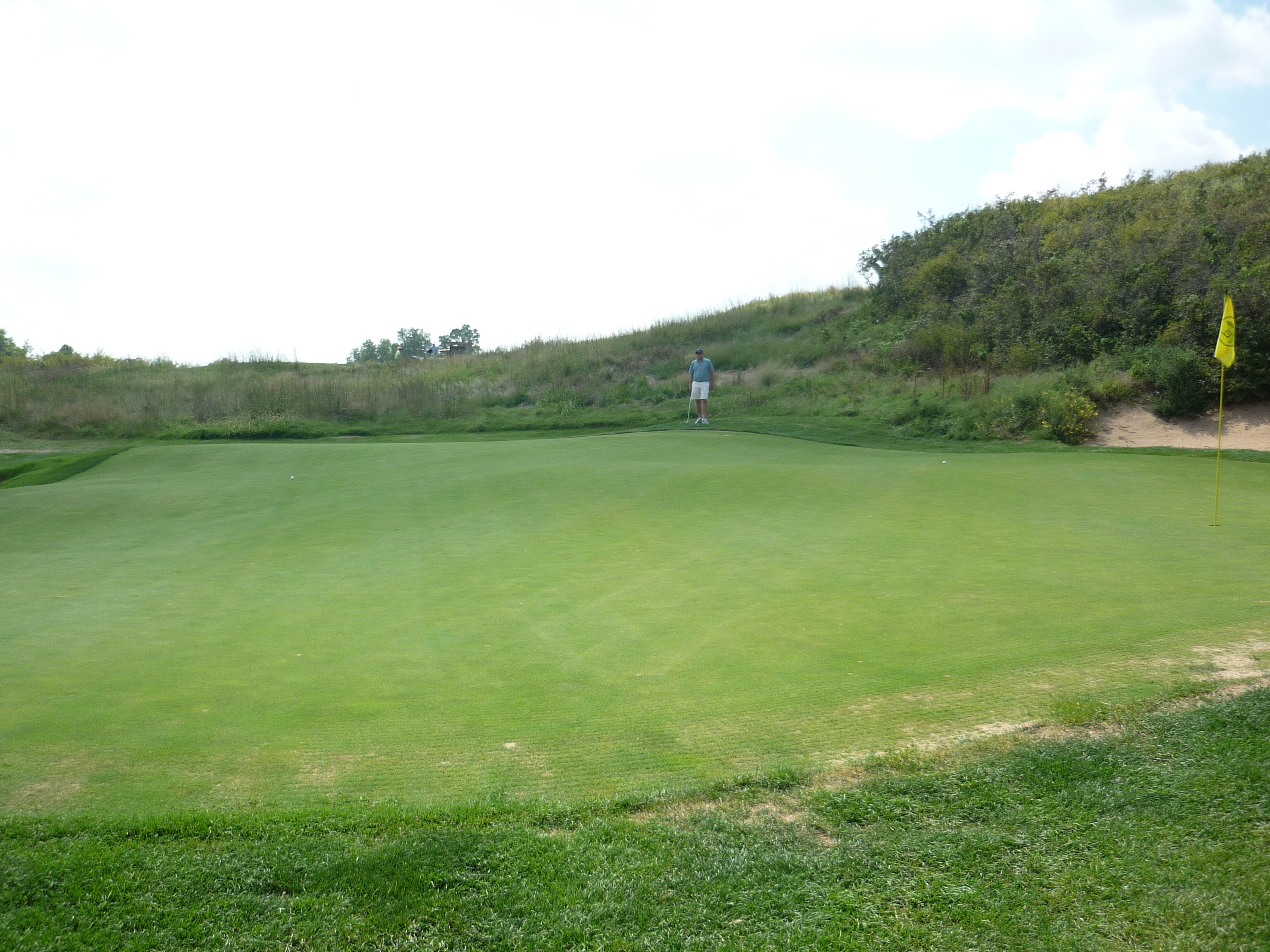
A shot from a little bit above the green shows the overall slope from back to front.
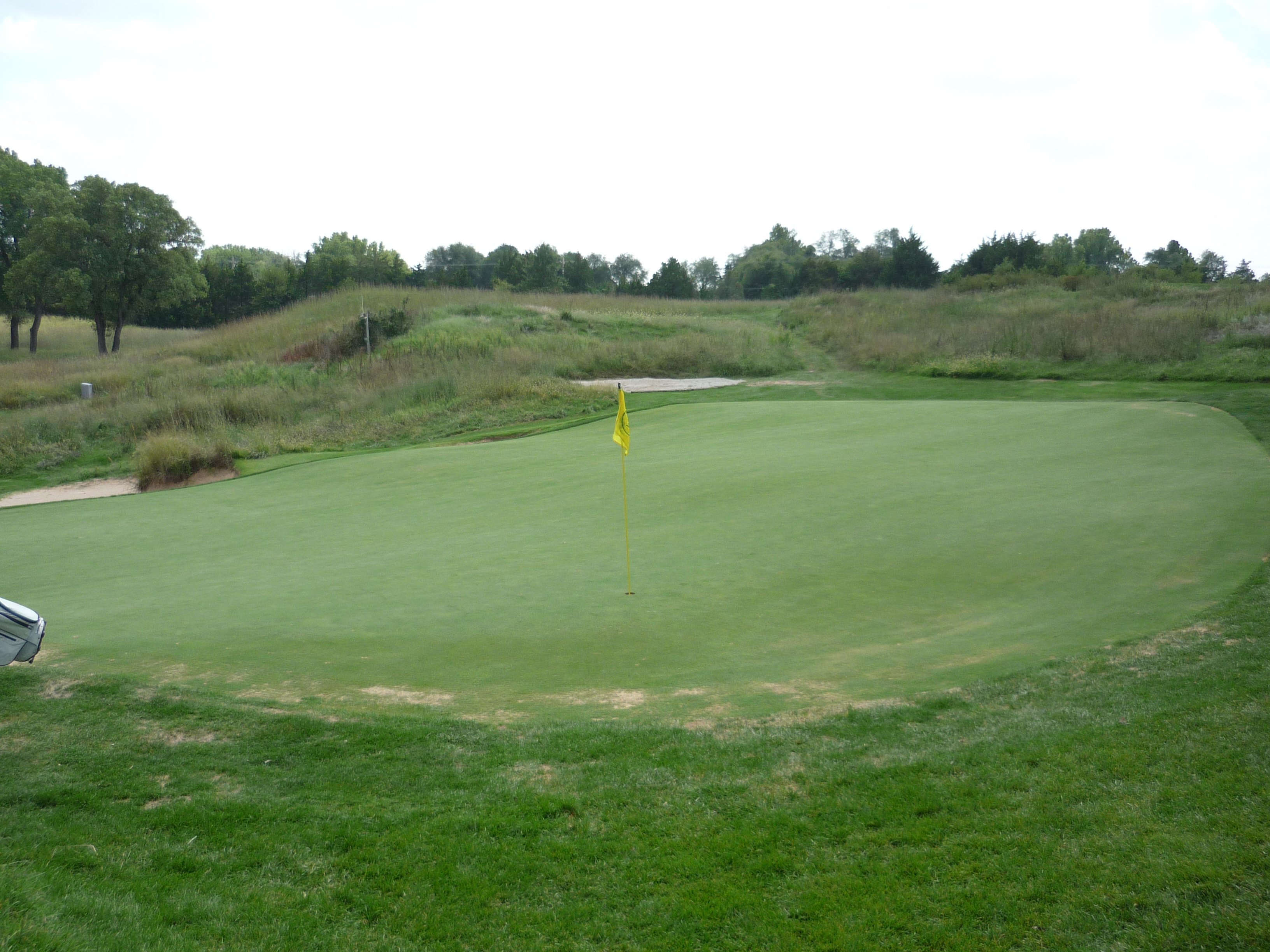
Hole 3 – 315 yards – Par 4 – Wild Plum
This a short hole that only really requires a 200-yard shot. Some members of our group took on the green with a driver. It is a risky play but can work out great if executed.
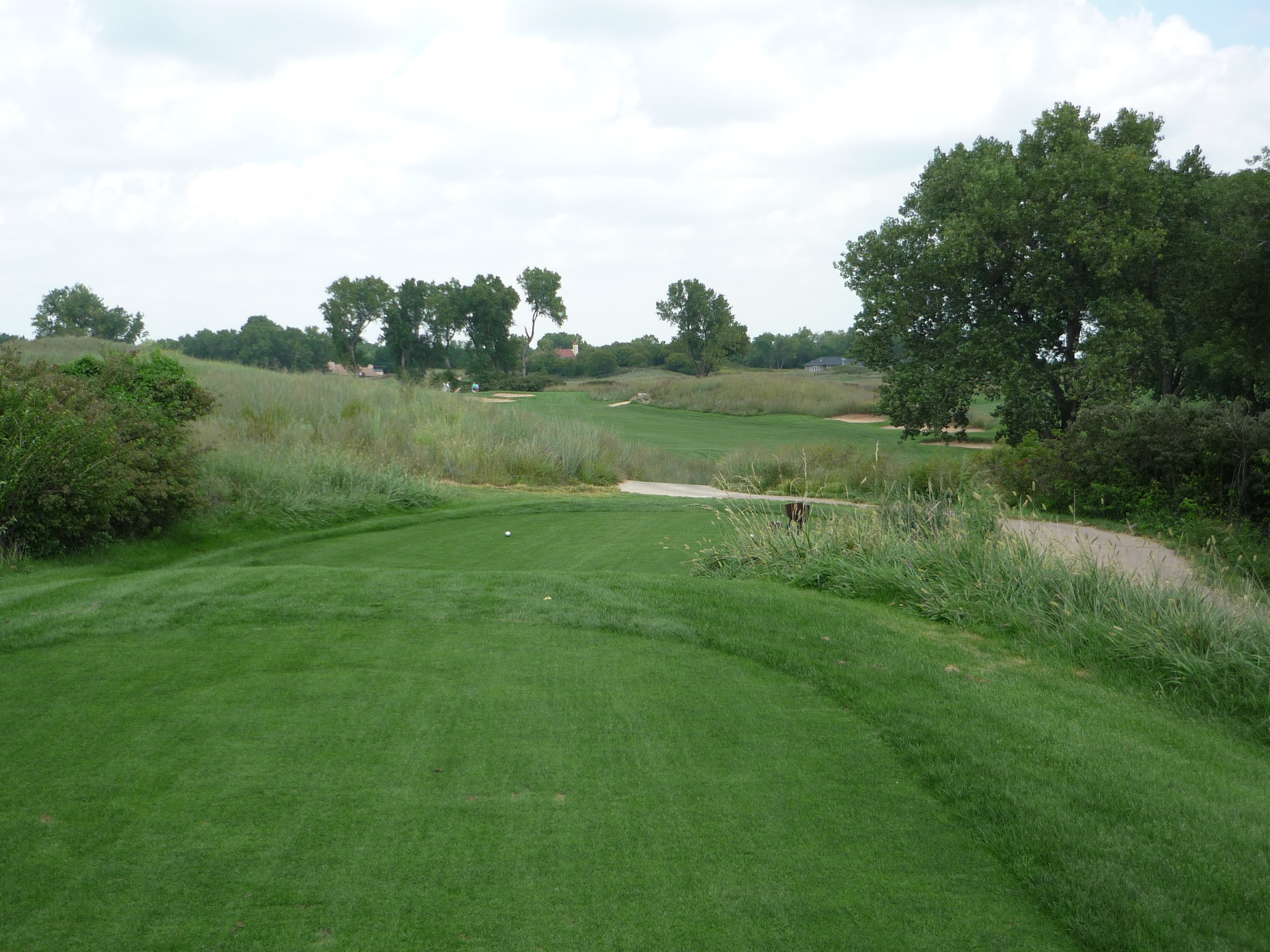
The second shot plays uphill to a heavily guarded green. With a short iron in your hand, this is a green light shot.
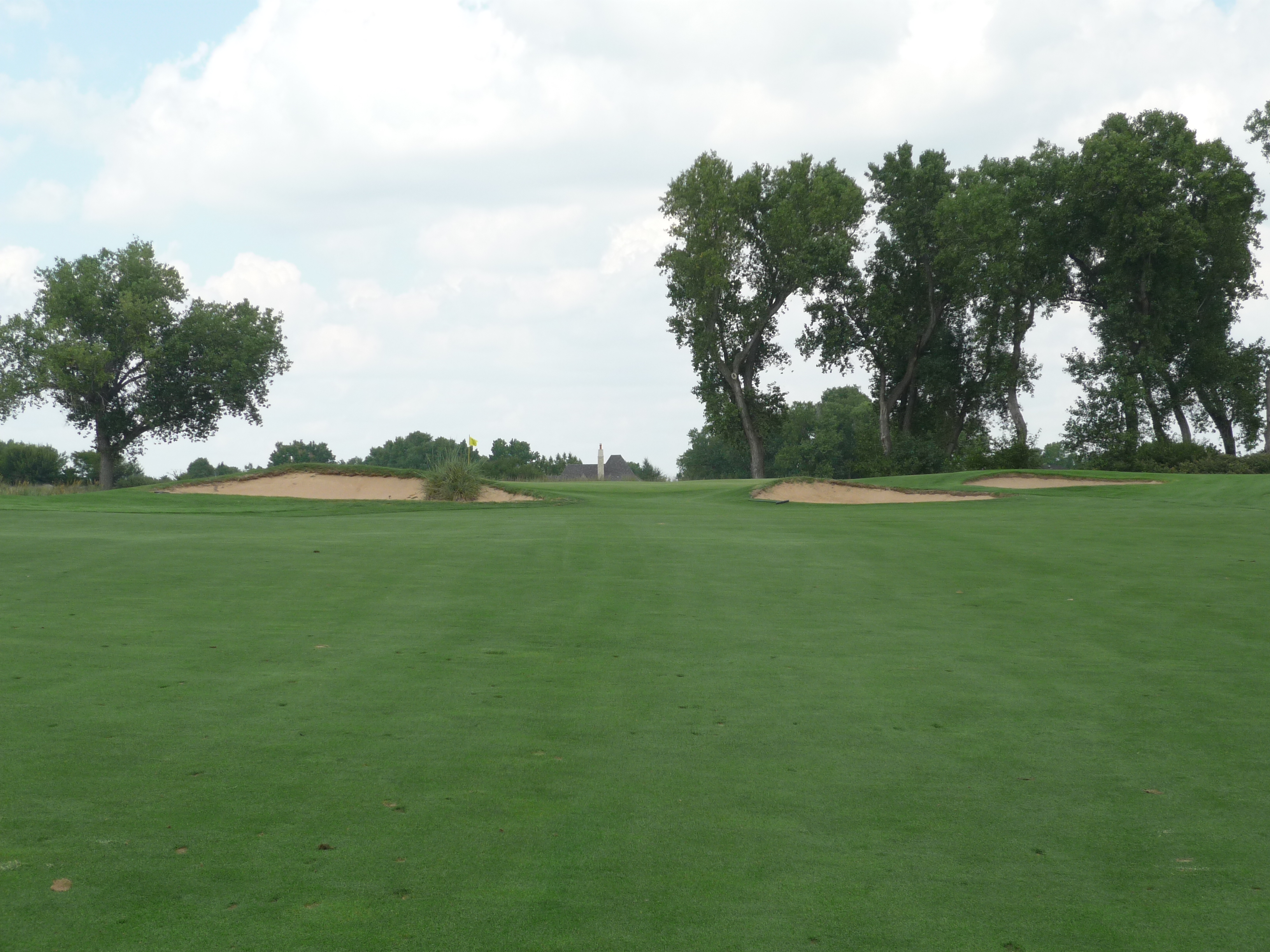
The green slopes off to the side on the right and has a ridge running through it.
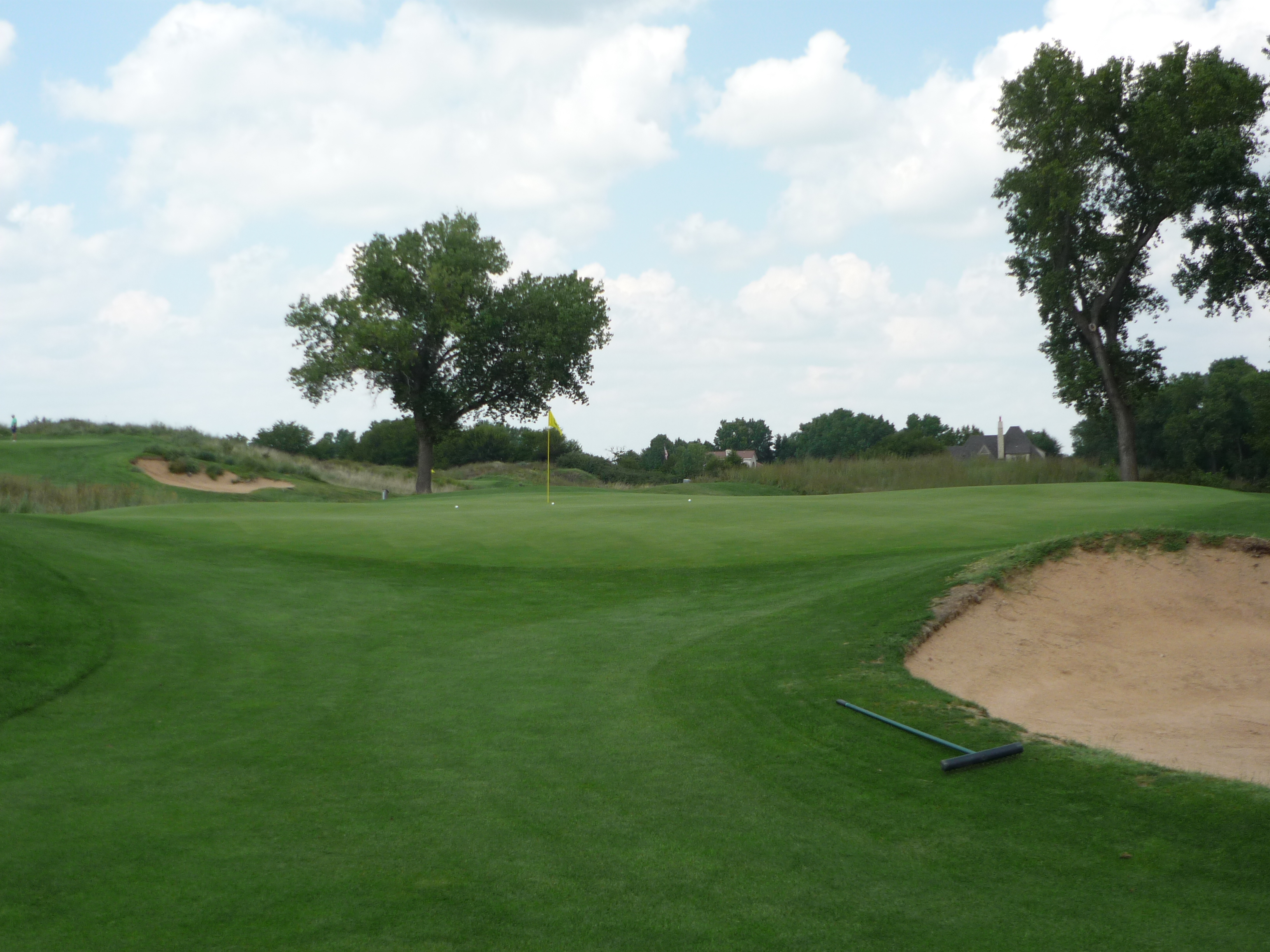
This other angle shows more of the slopes.
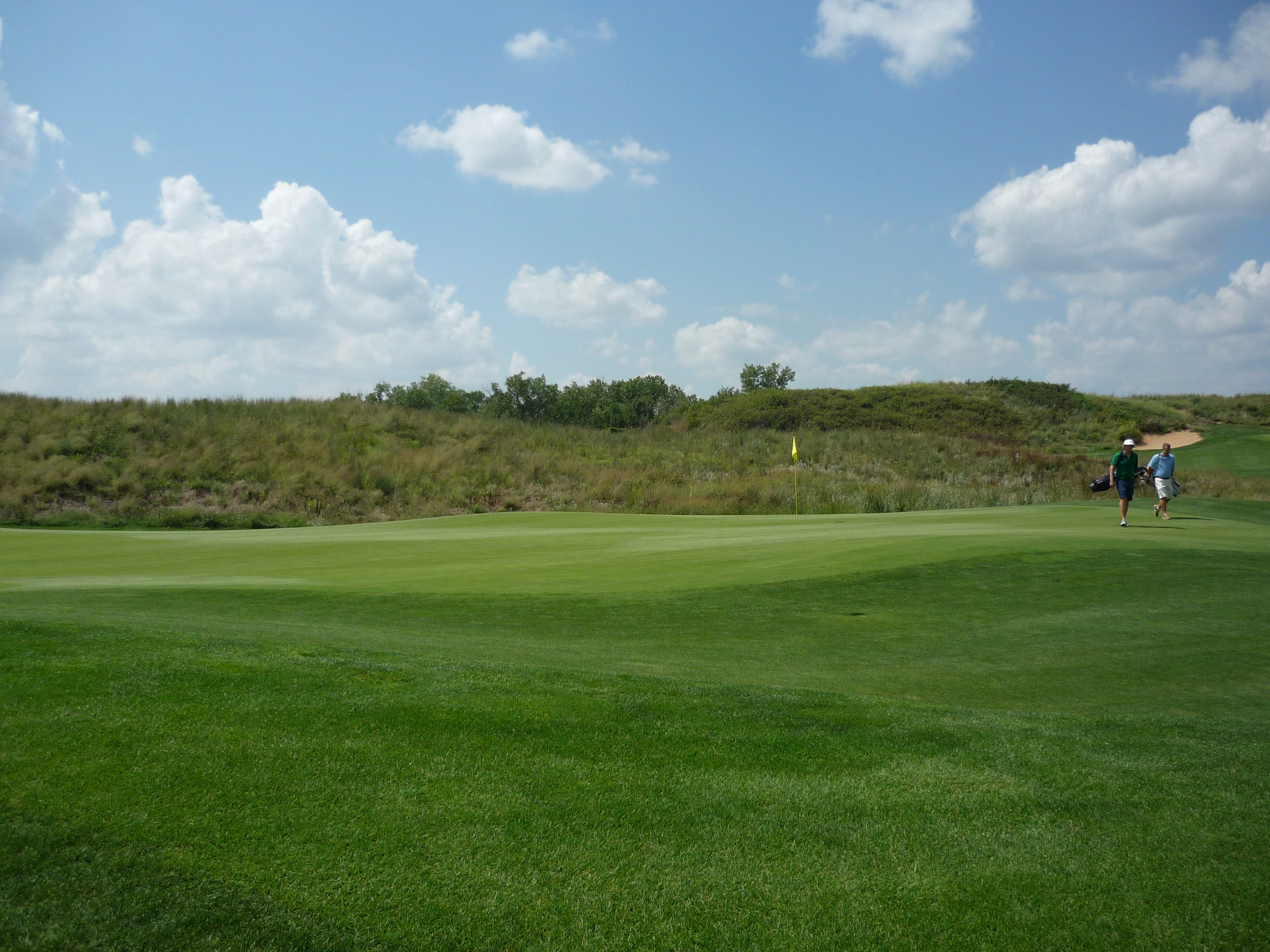
Hole 4 – 168 yards – Par 3 – Hill Top
Our second par three in three holes also plays uphill. Let me say that any of these bunkers is a no-go zone. Focus extra hard here to hit the green. It will pay serious dividends.
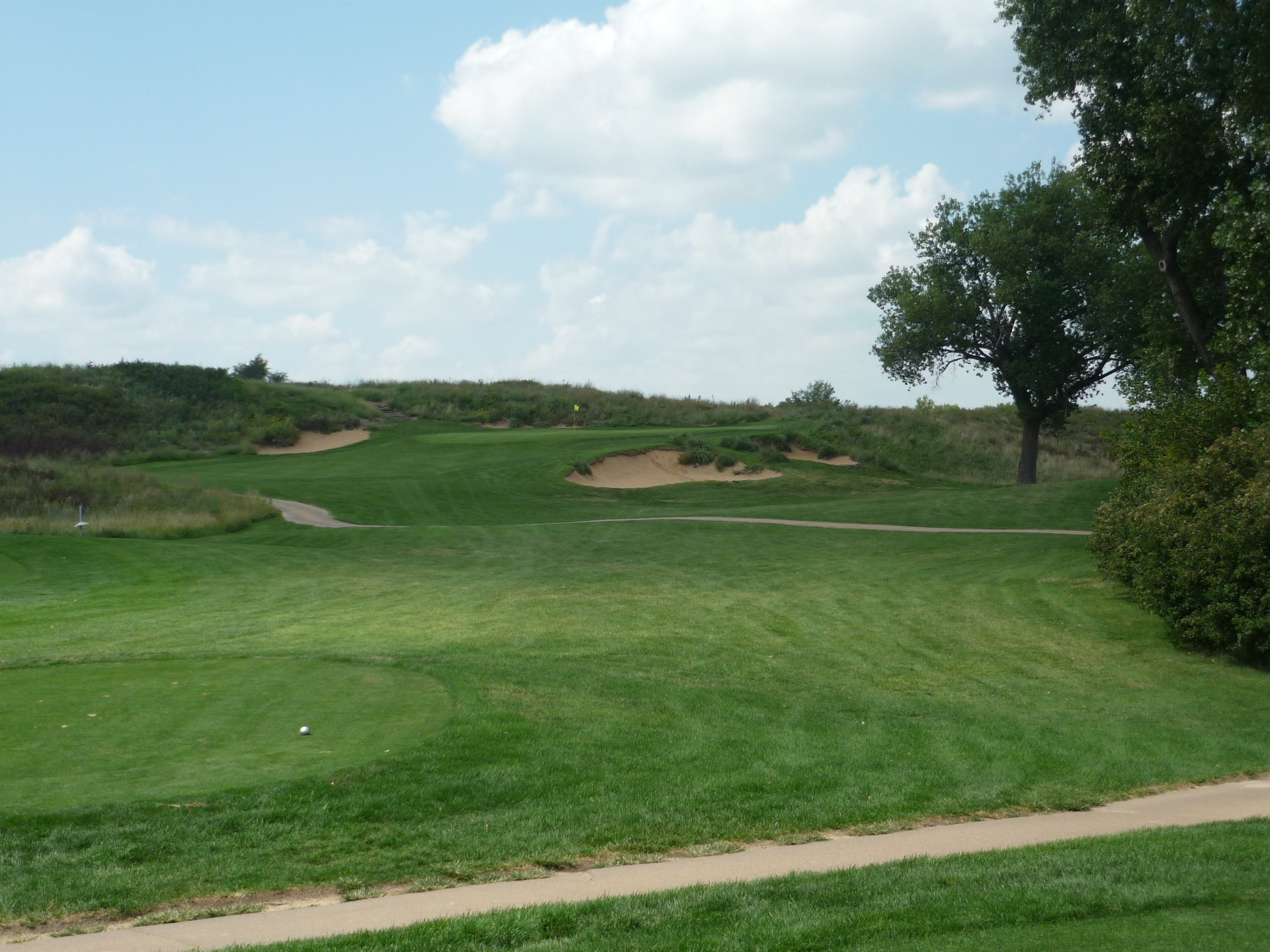
Here is a zoomed-in version.
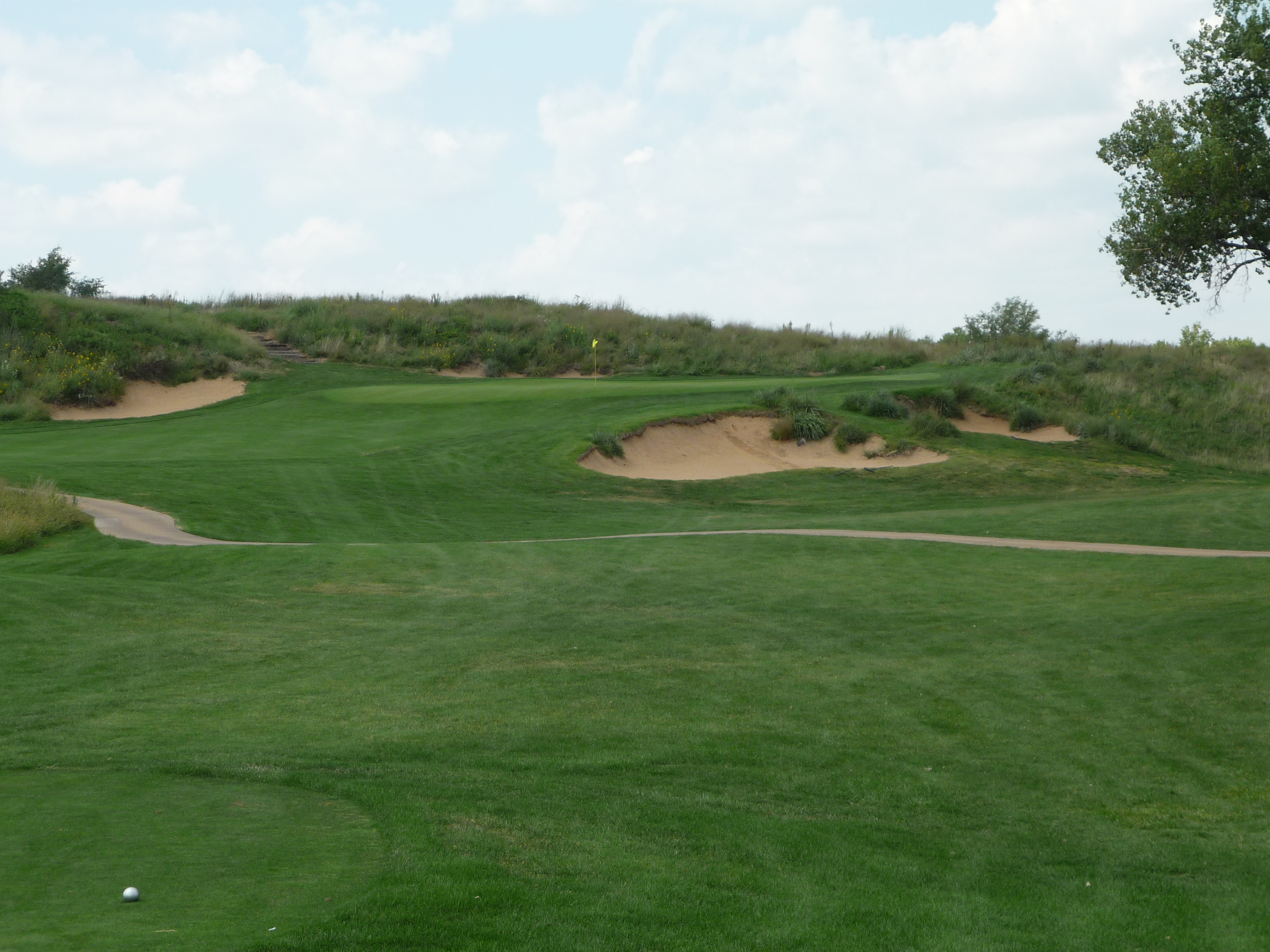
You can see that this green also has some good undulation. The Maxwells were known for their greens.
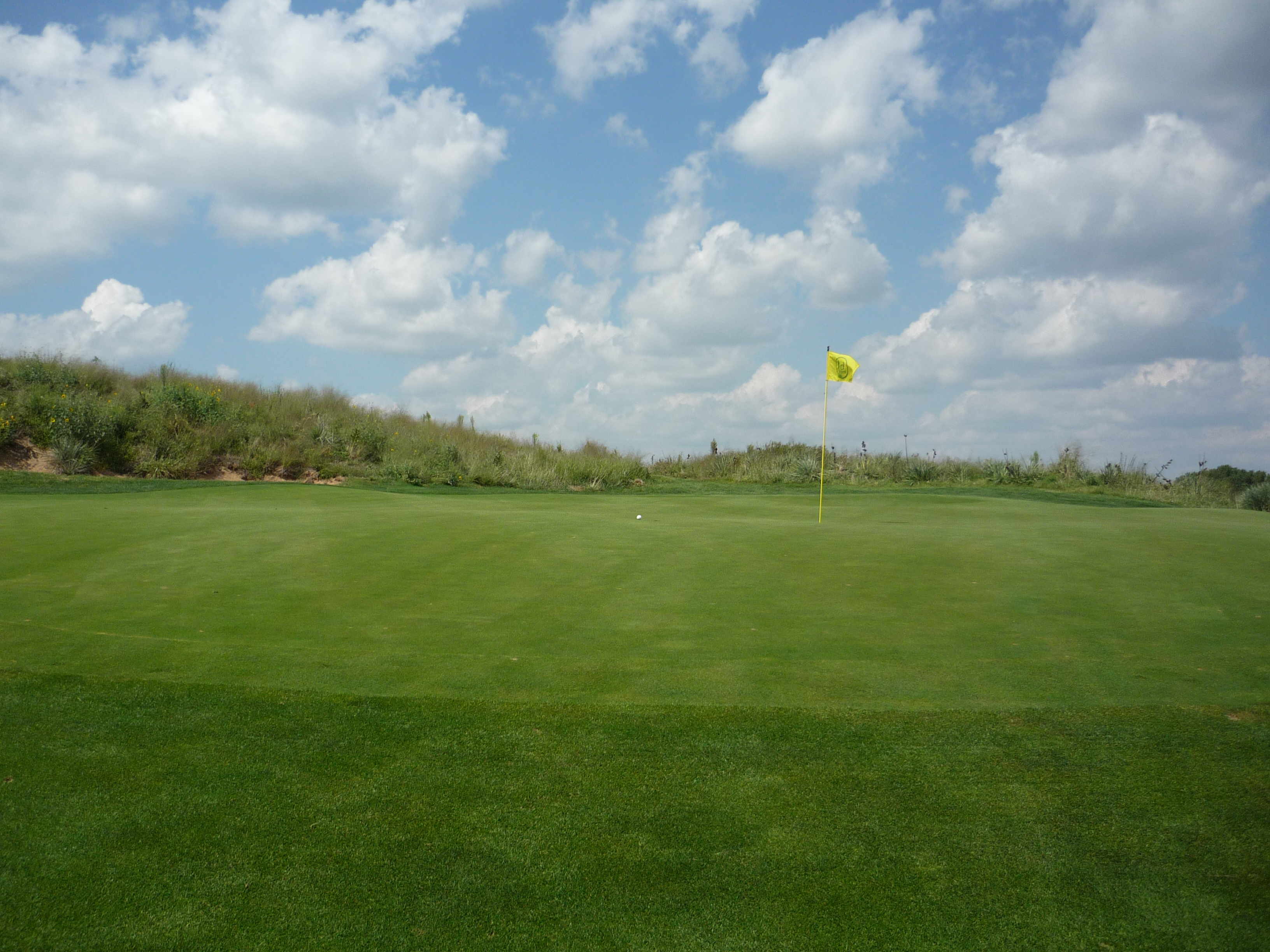
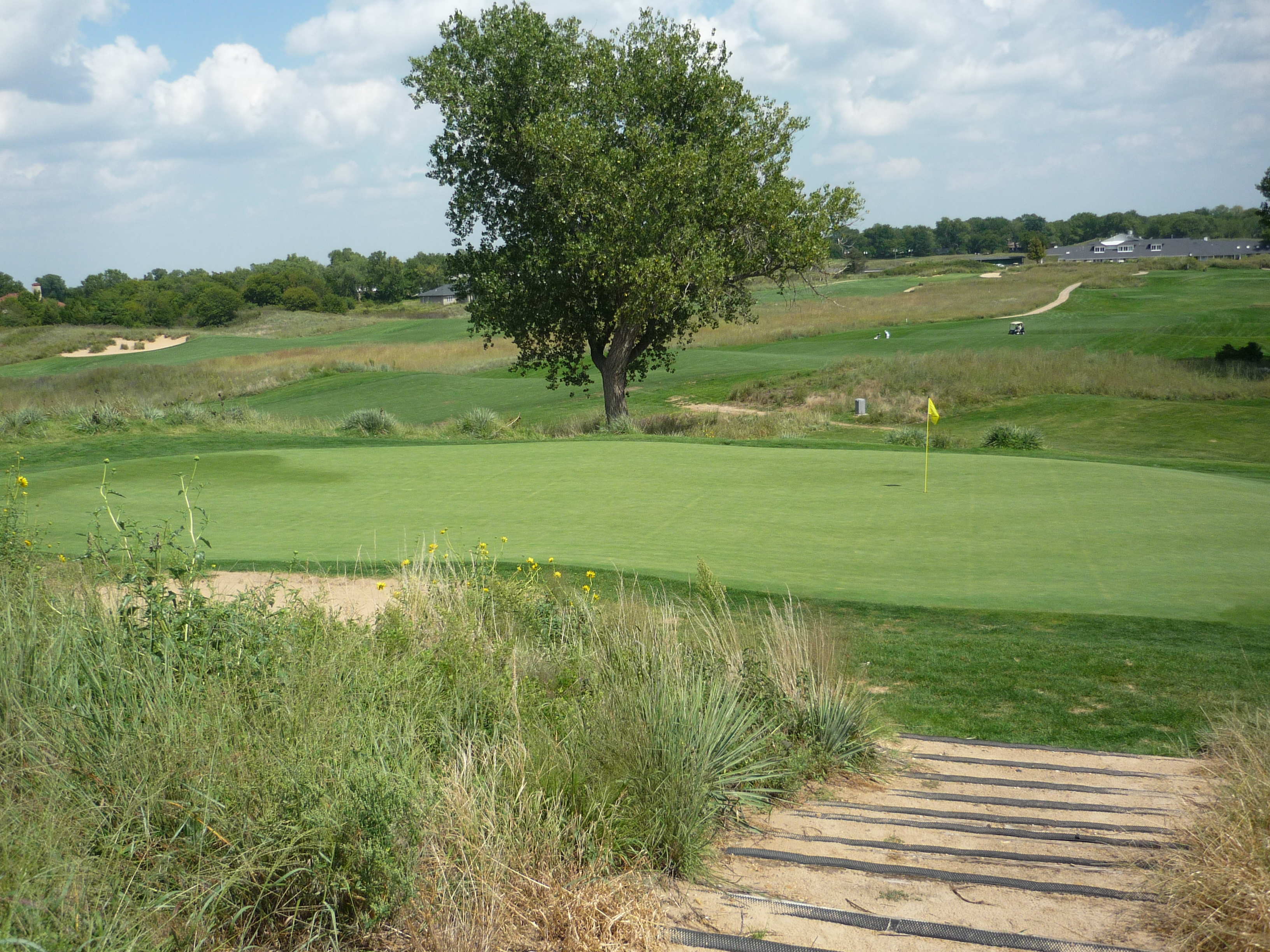
Hole 5 – 418 yards – Par 4 – Quail Ridge
I suppose now is a good time to mention the knee-high rough that lurks off of all the holes here. The locals call it gunsch. It is very thick and can make finding balls very difficult. They burn it out periodically throughout the year, which results in plenty of burned Titleists!
The tee shot here plays to a hole that cants to the right. If you can hit a nice draw it will leave you in a good position.
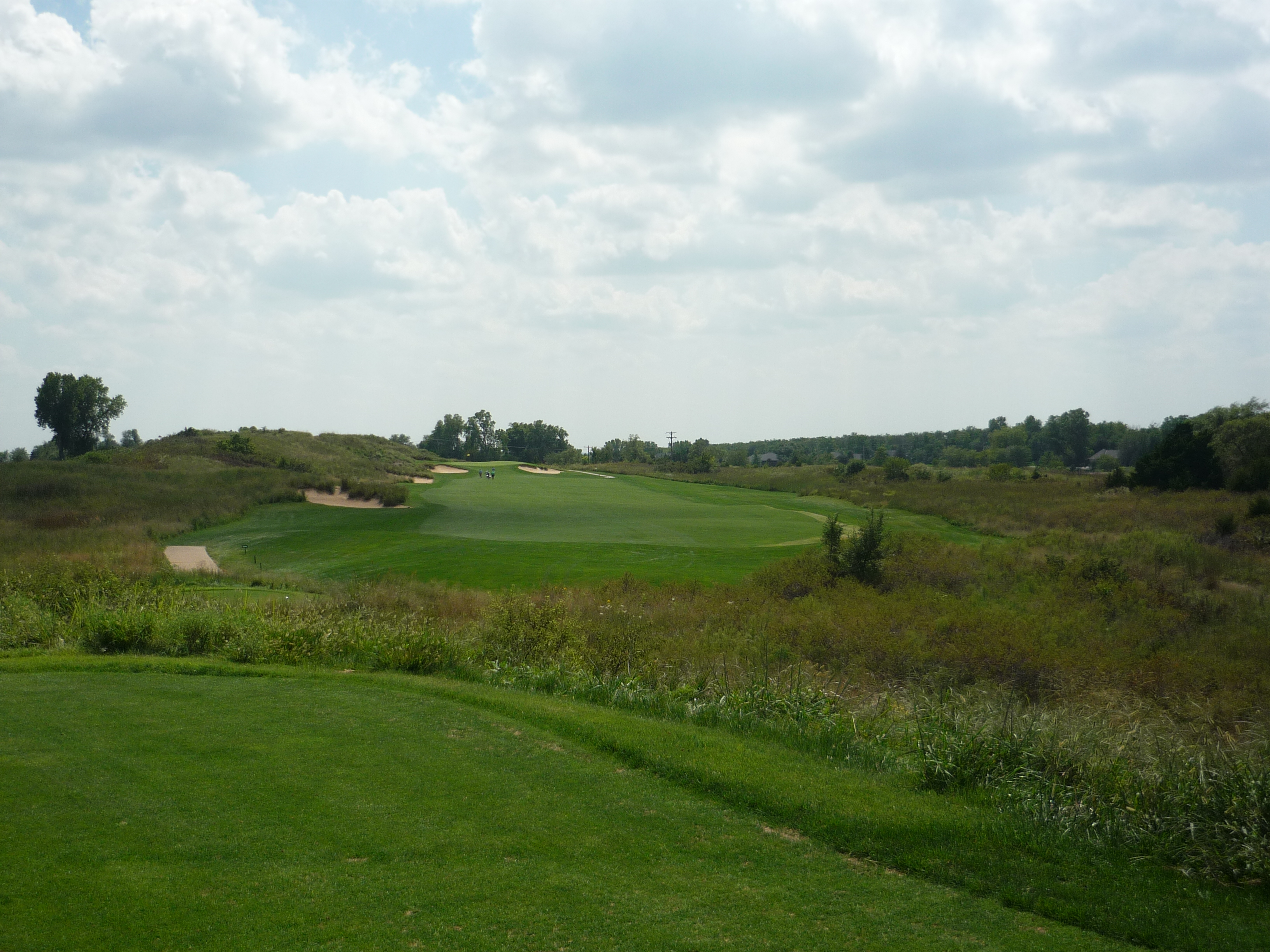
The approach plays longer due to the uphill slope. The bunker on the right is very deep. The green runs off on the backside.
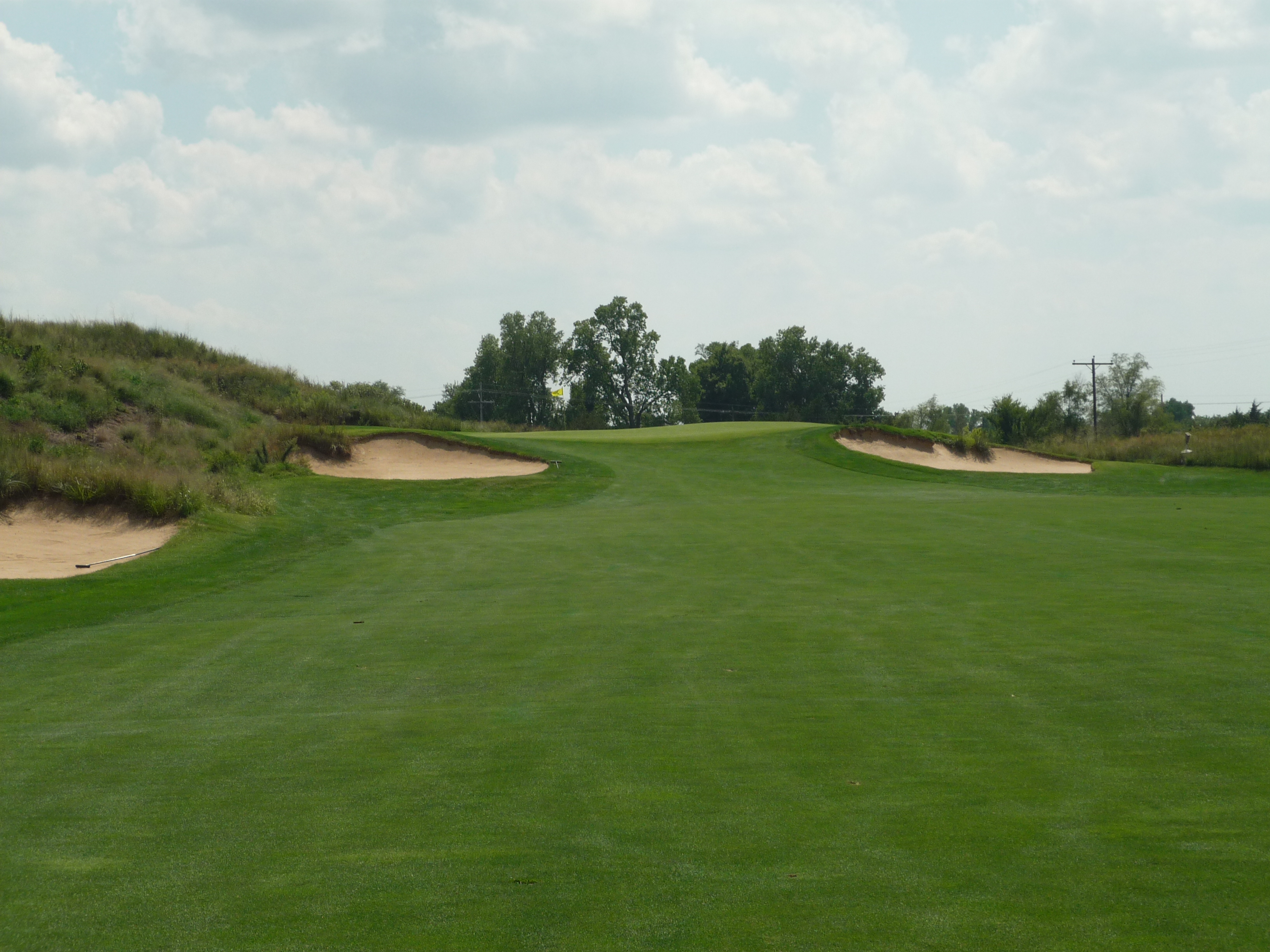
Here is the green from above.
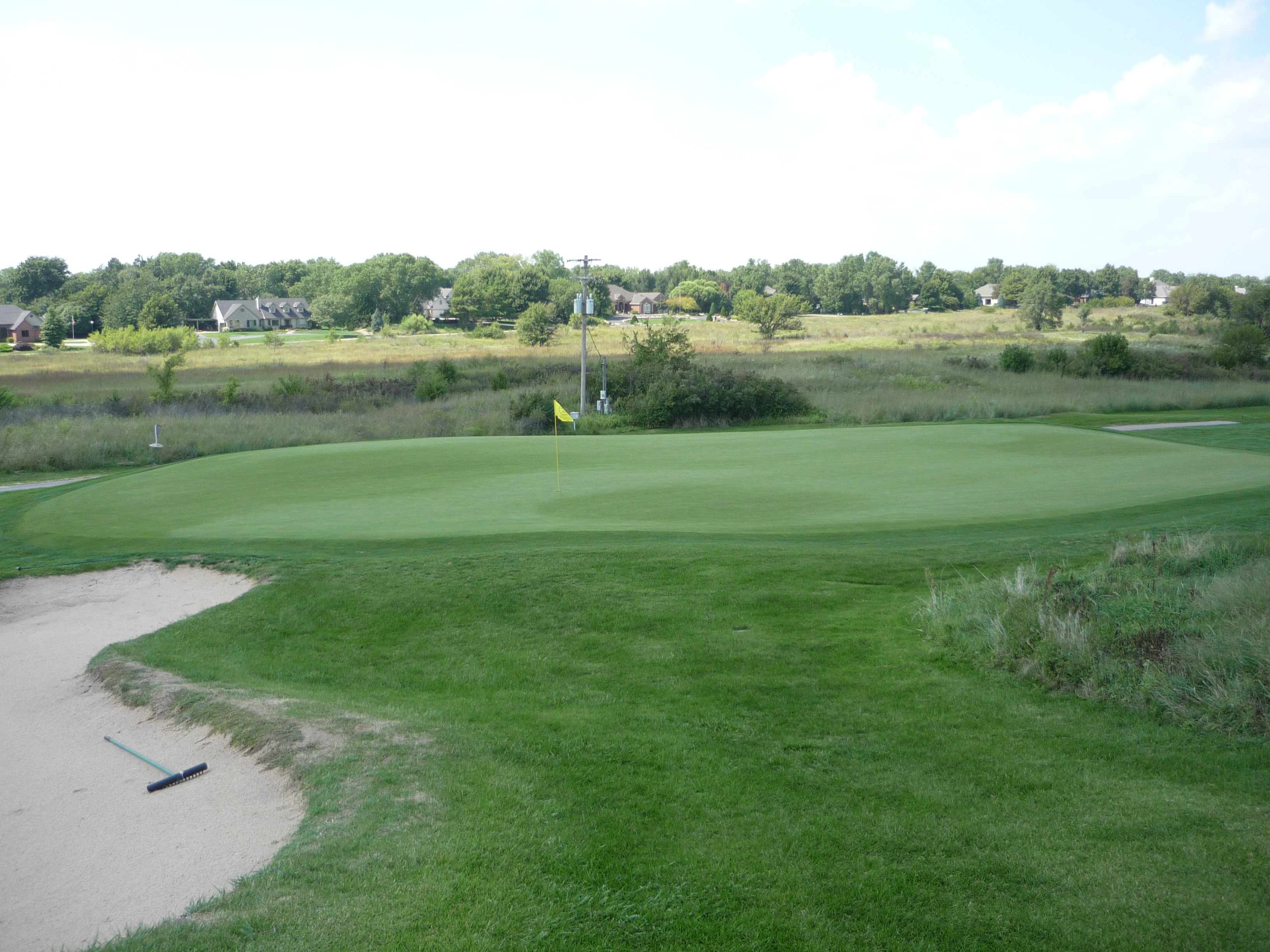
Hole 6 – 370 yards – Par 4 – Cedar
I found this hole easiest to play with a three wood. The tee is elevated so you should be able to get more distance. The best line is to split the first two bunkers you see.
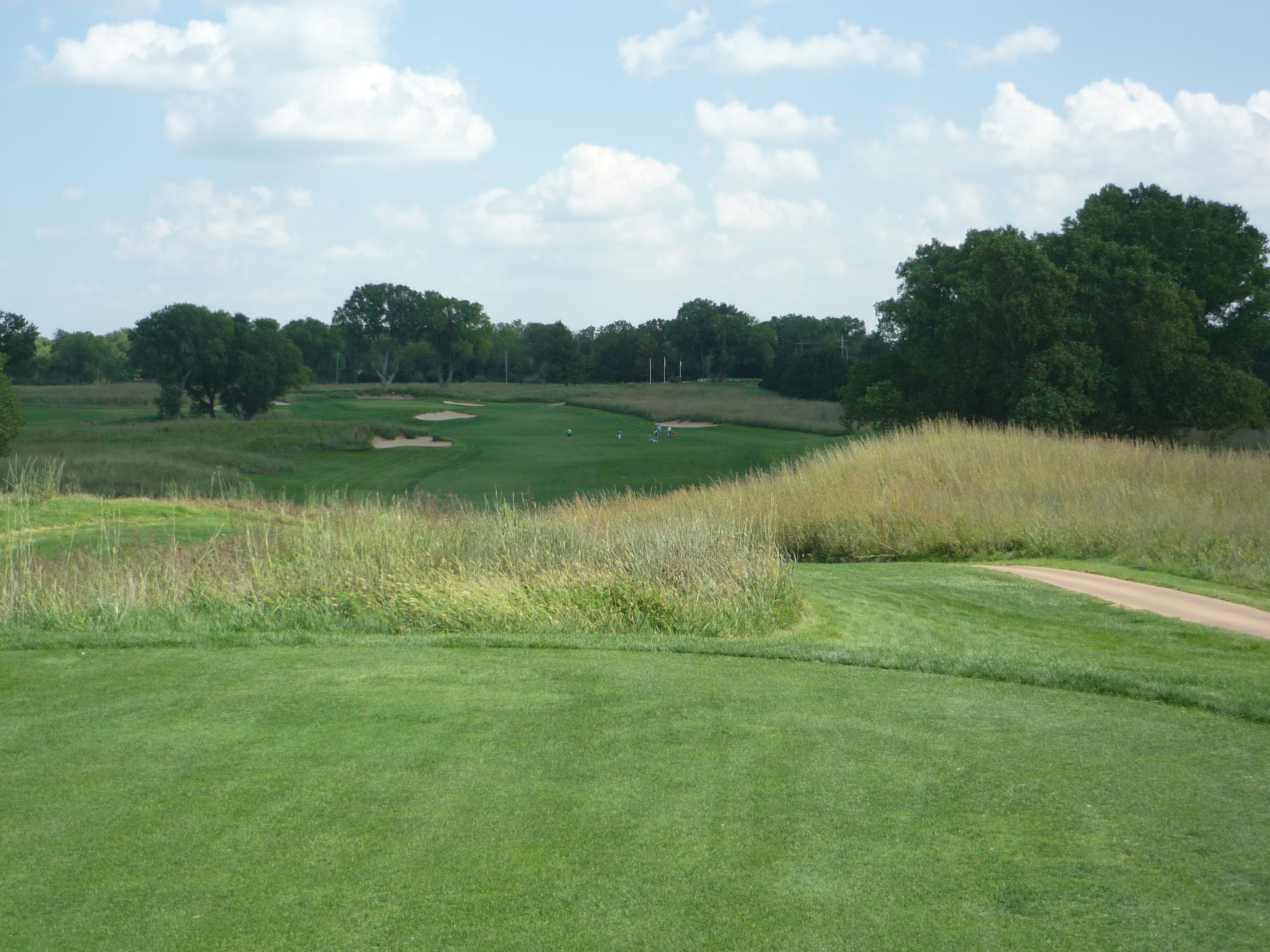
Like the last few holes, the second shot plays to a raised green. The left bunker is not quite next to the green.
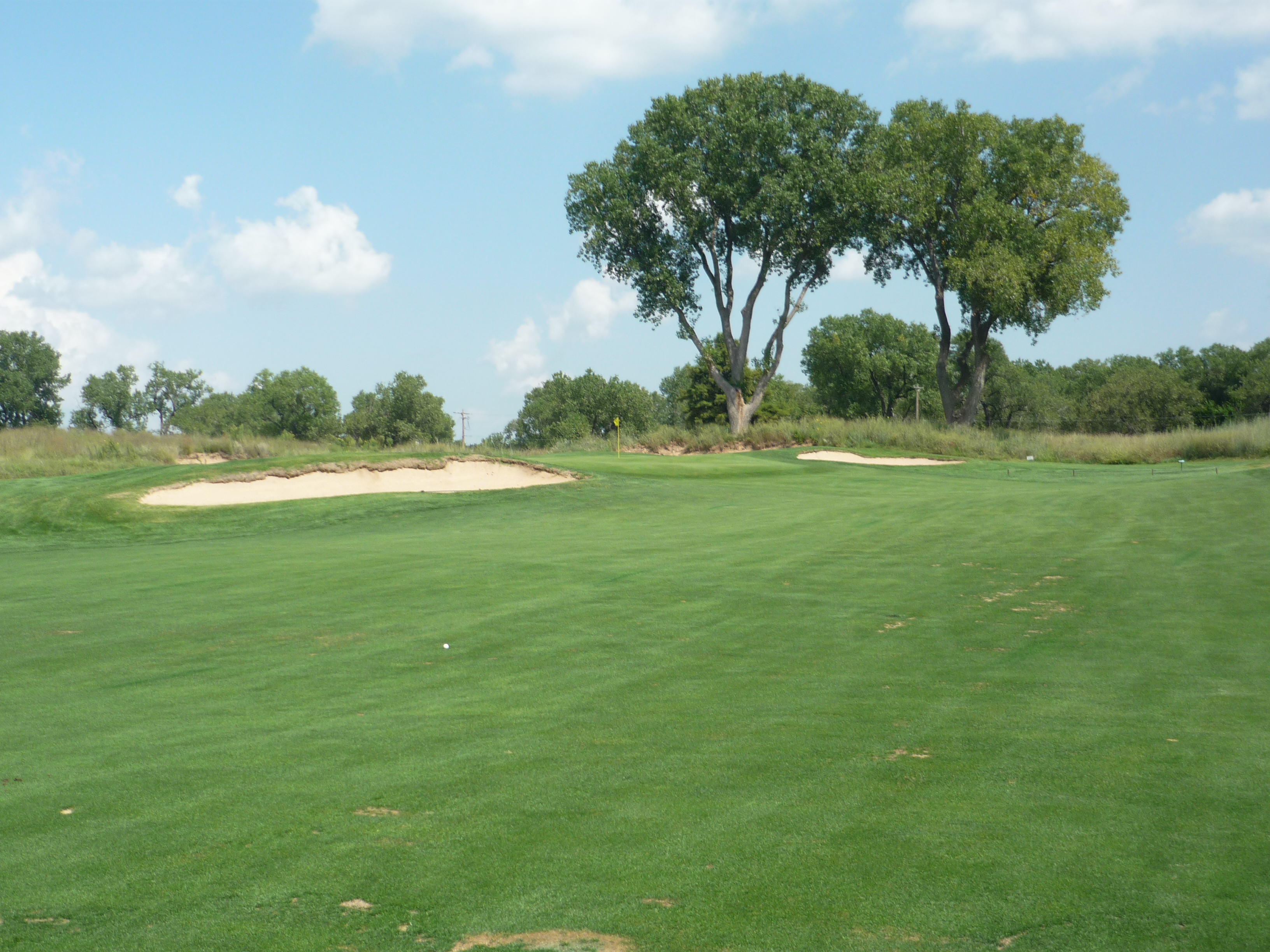
There is big-time sloping on the front right part of the green. You can see the hump in the left side of this picture. Distance control will really make putting easier here.
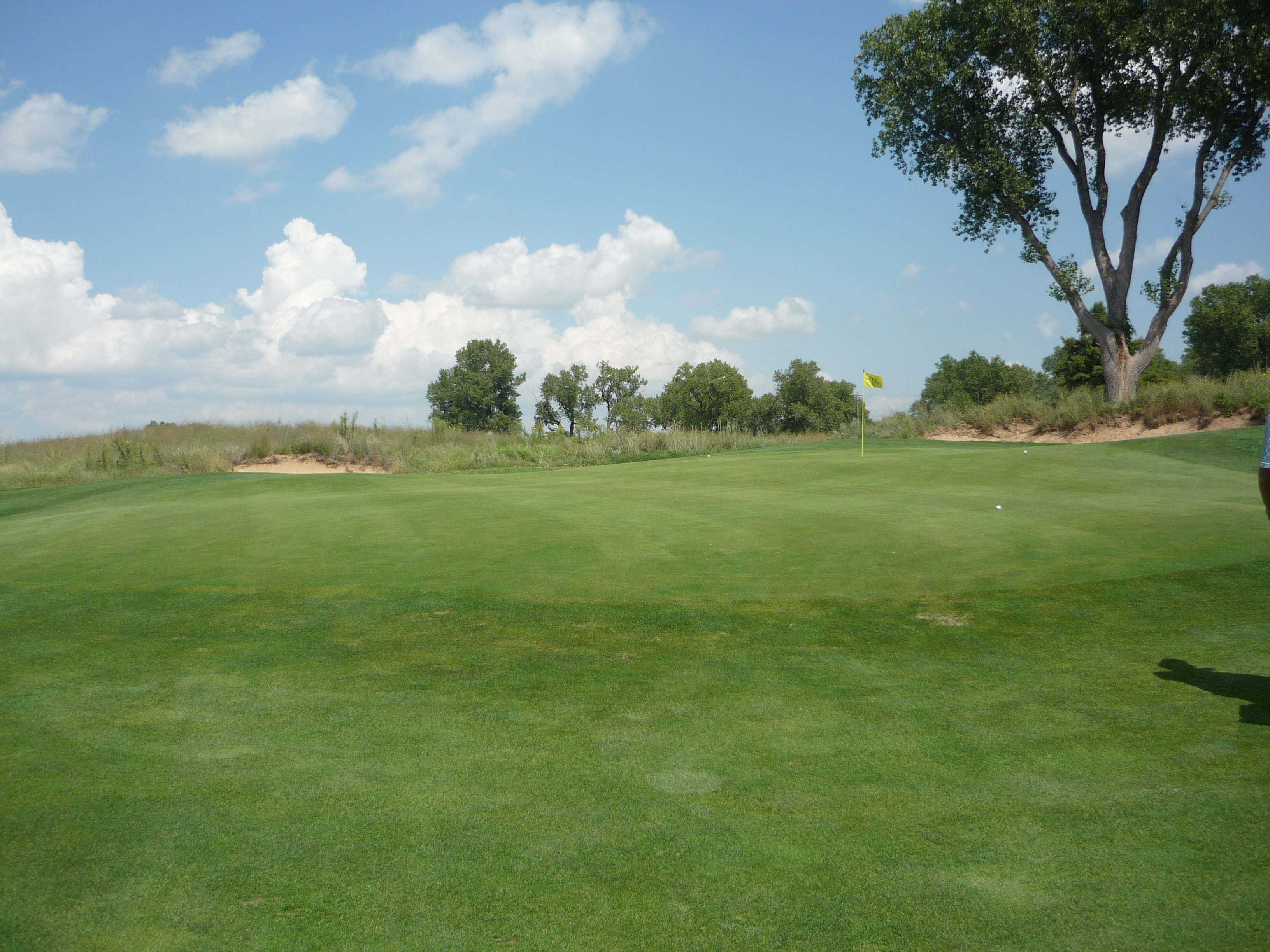
Another angle of the green shows the other slopes.
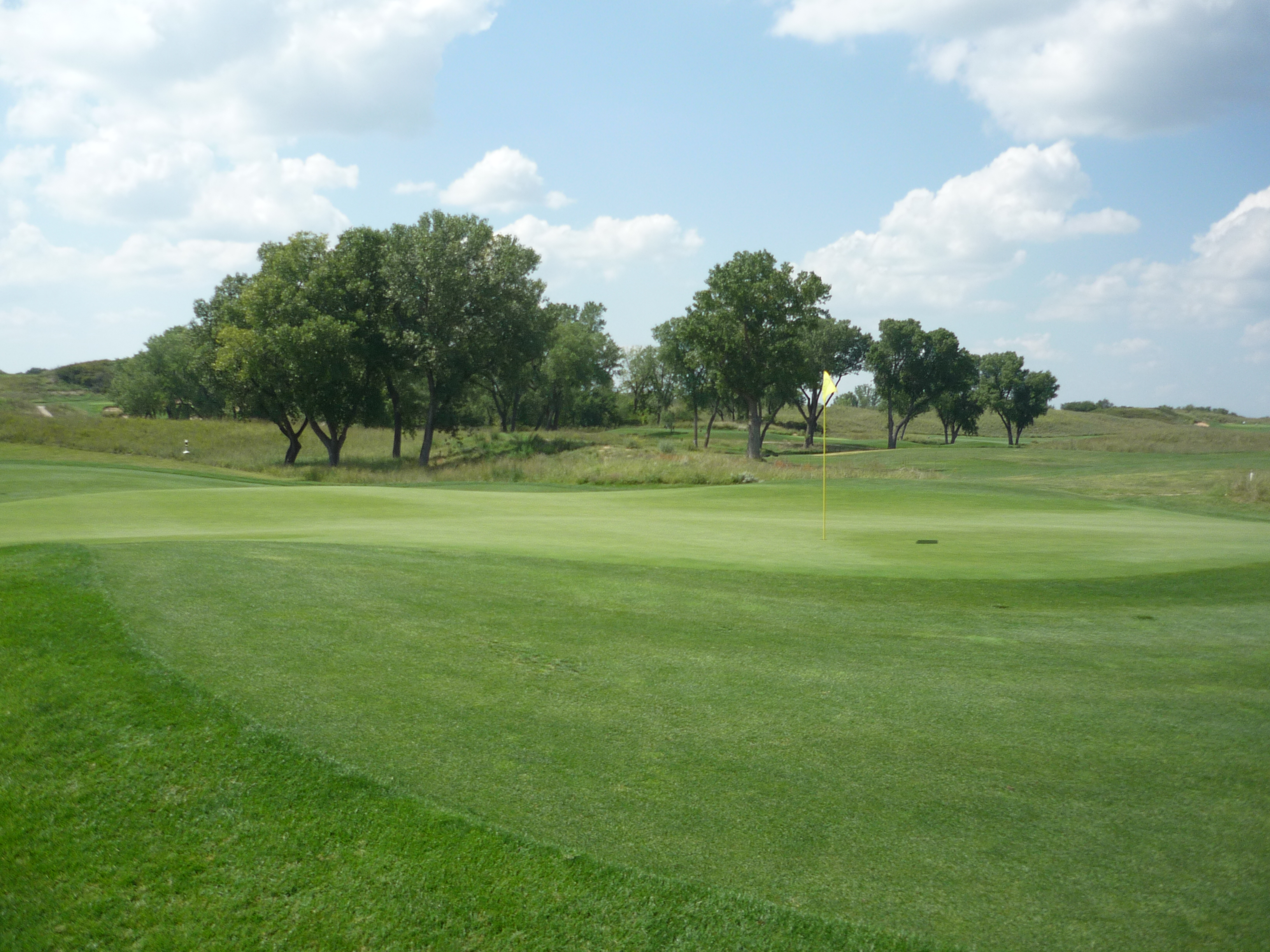
Hole 7 – 512 yards – Par 5 – South Wind
This par five gave me all kinds of trouble each time I played it. I could never seem to find the fairway, which is a must.
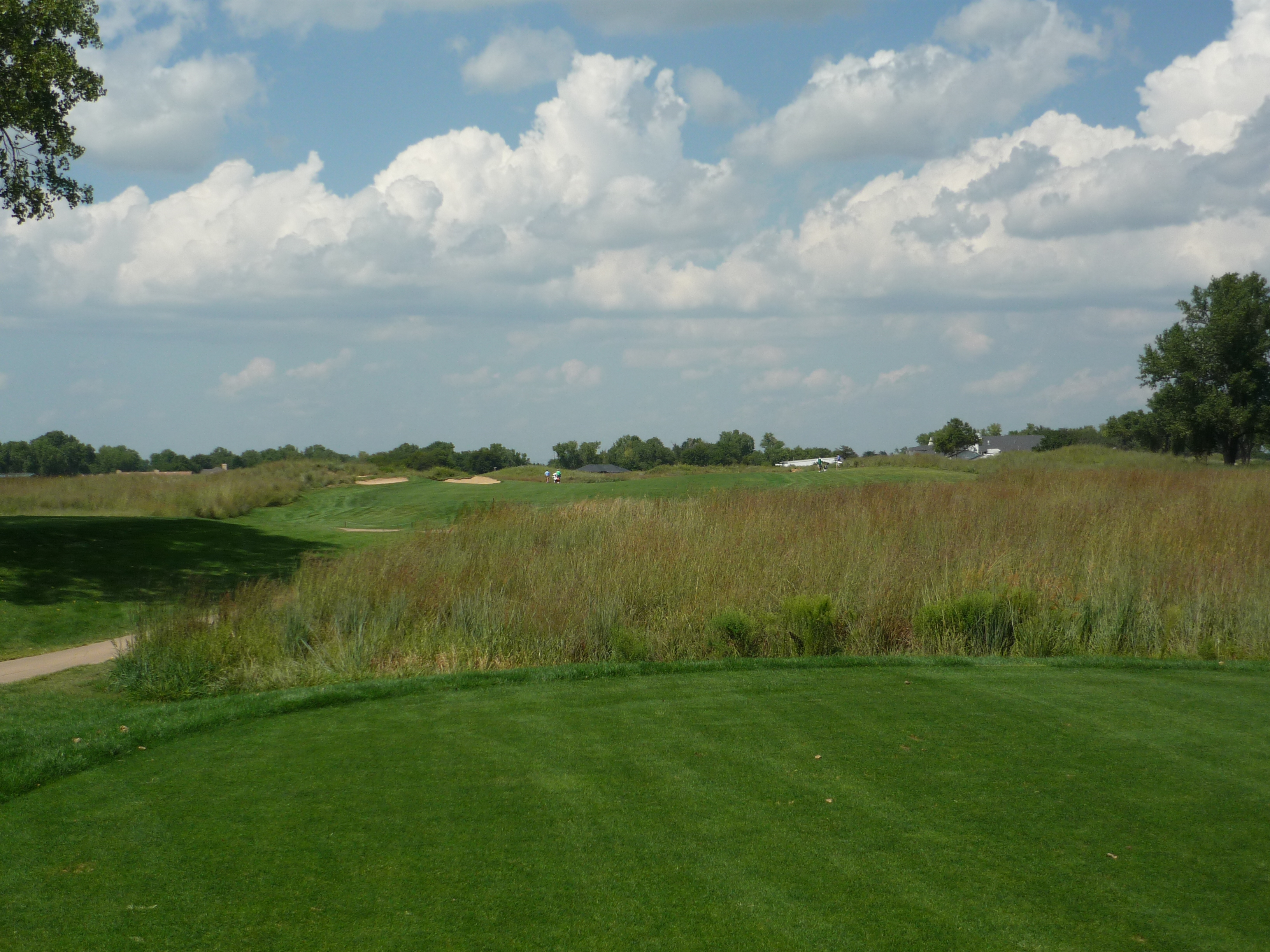
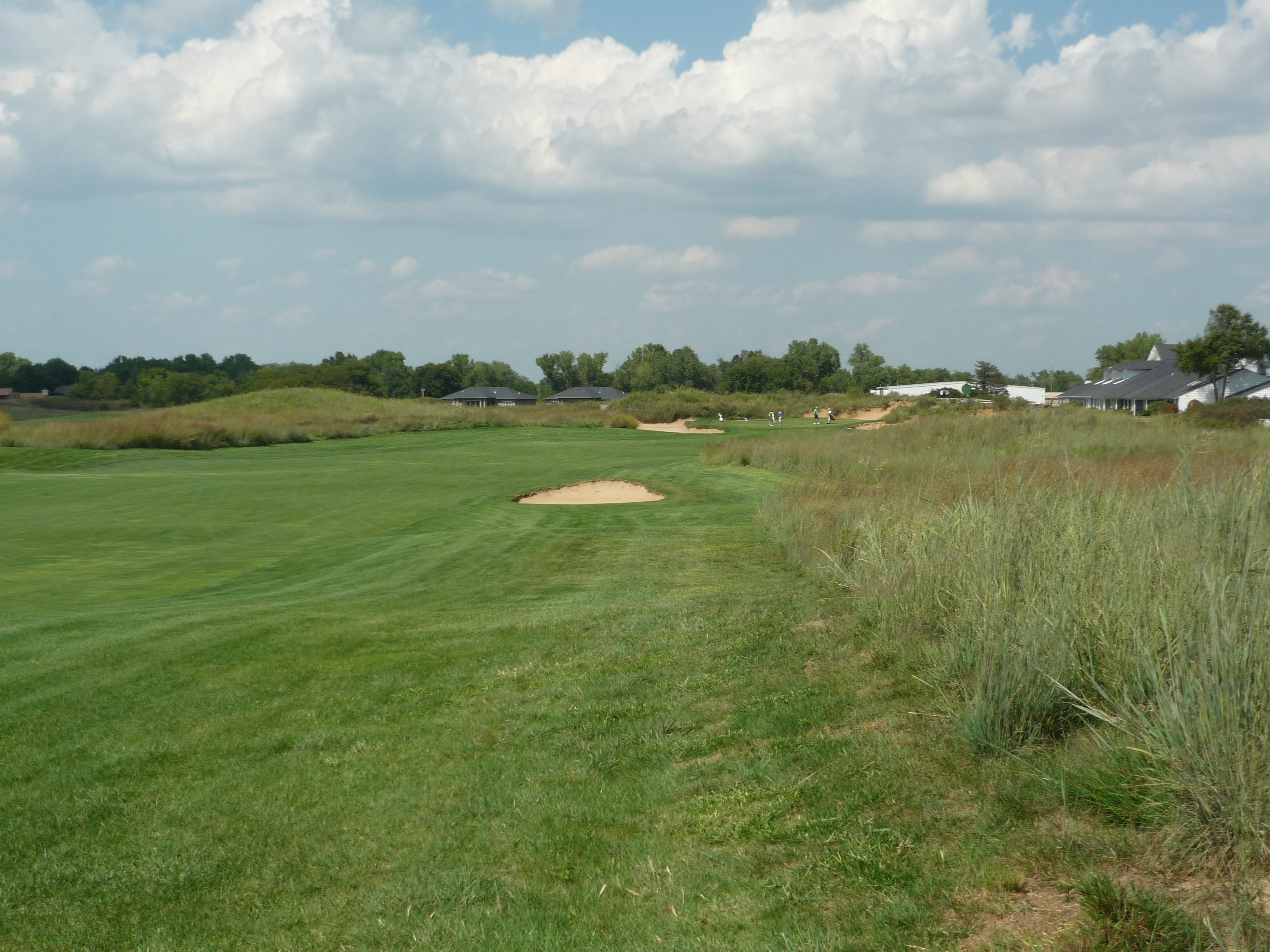
The green is guarded by a large front bunker and sand pretty much everywhere else. The slope in the green will funnel some shots towards the middle of the putting surface.
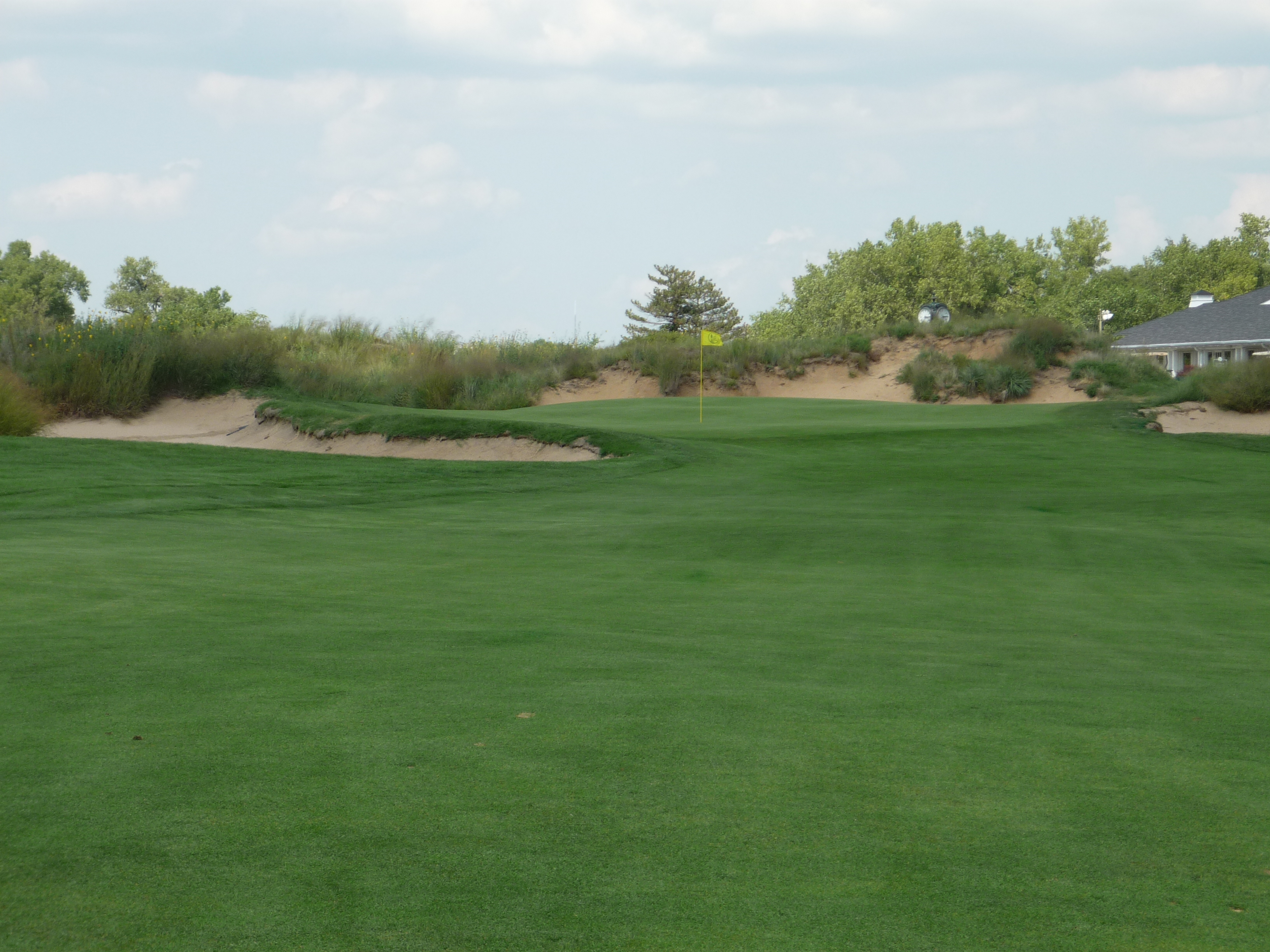
Here is a closer look at the green.
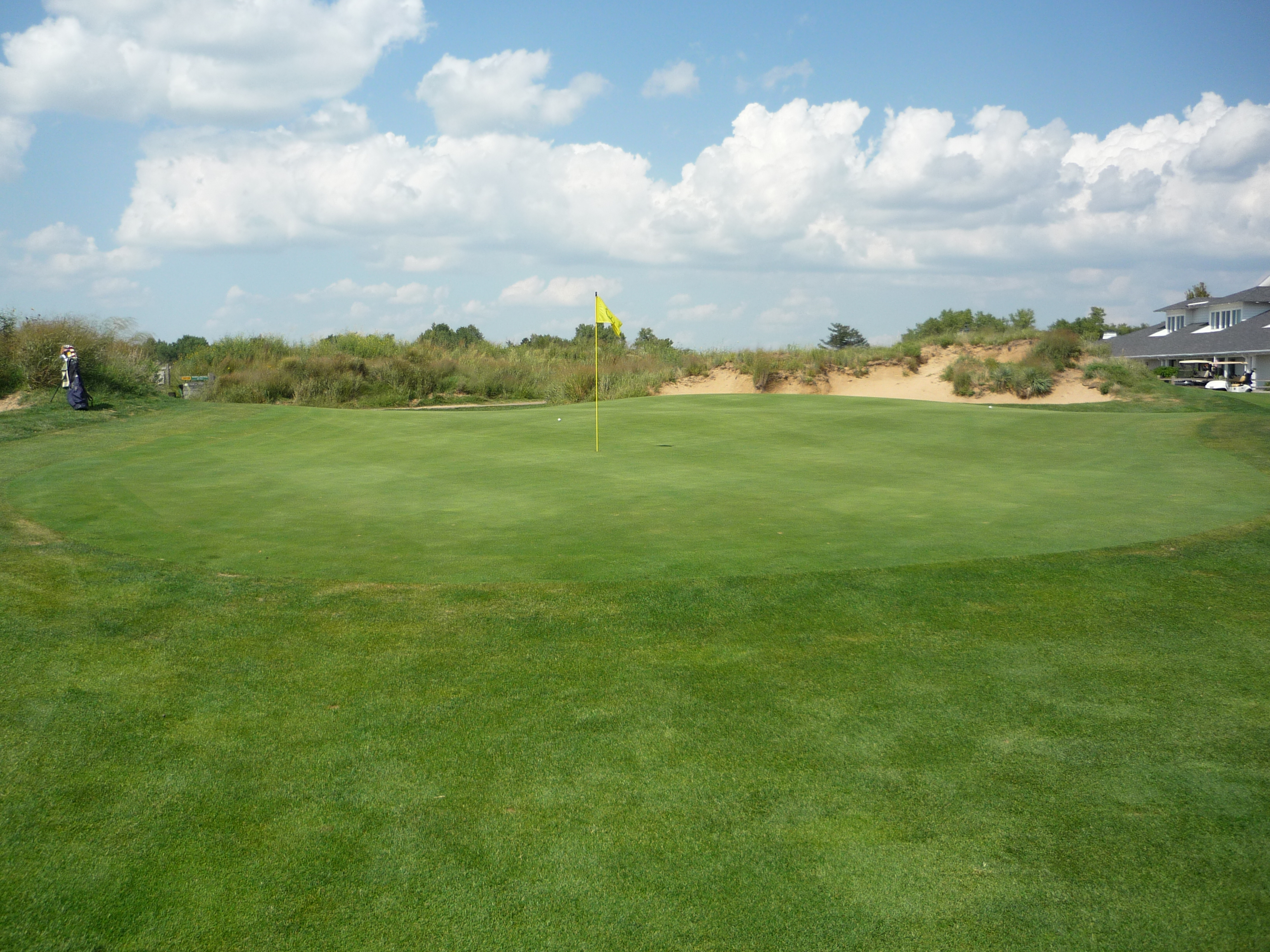
Hole 8 – 440 yards – Par 4 – Dunes
This is the best hole at Prairie Dunes, hands down in my opinion. It is demanding but will reward good shots. If you play a shot just to the right of the lone tree down the middle you will be in prime position.
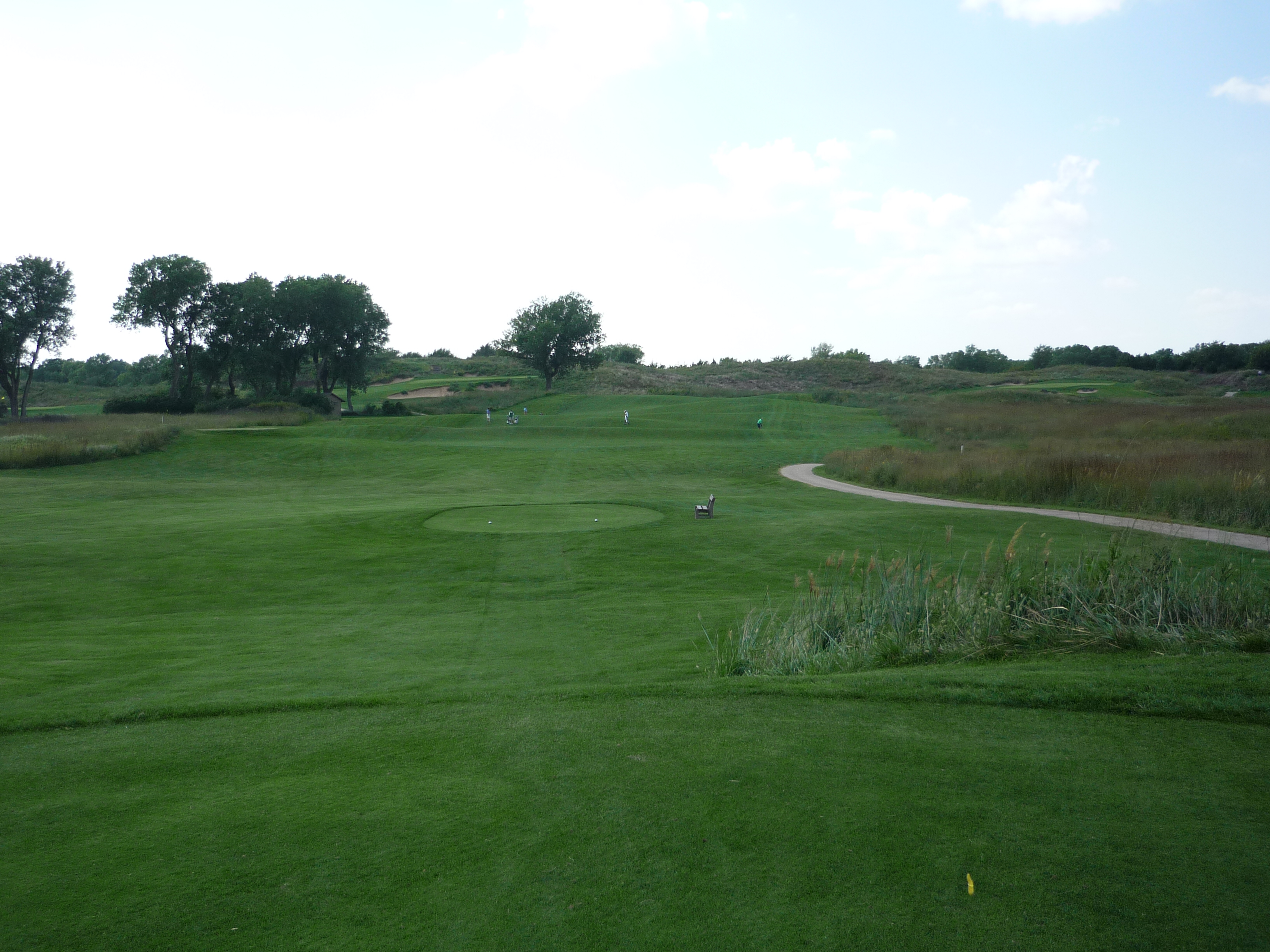
If you don’t hit your drive long enough the approach shot is partially blind. Due to the length of the shot, the architect left the green open in front. The bunkers on the right are well below the green and will make par difficult to come by.

The green is large and very undulating as you can see below. As I said, the Maxwells know greens.
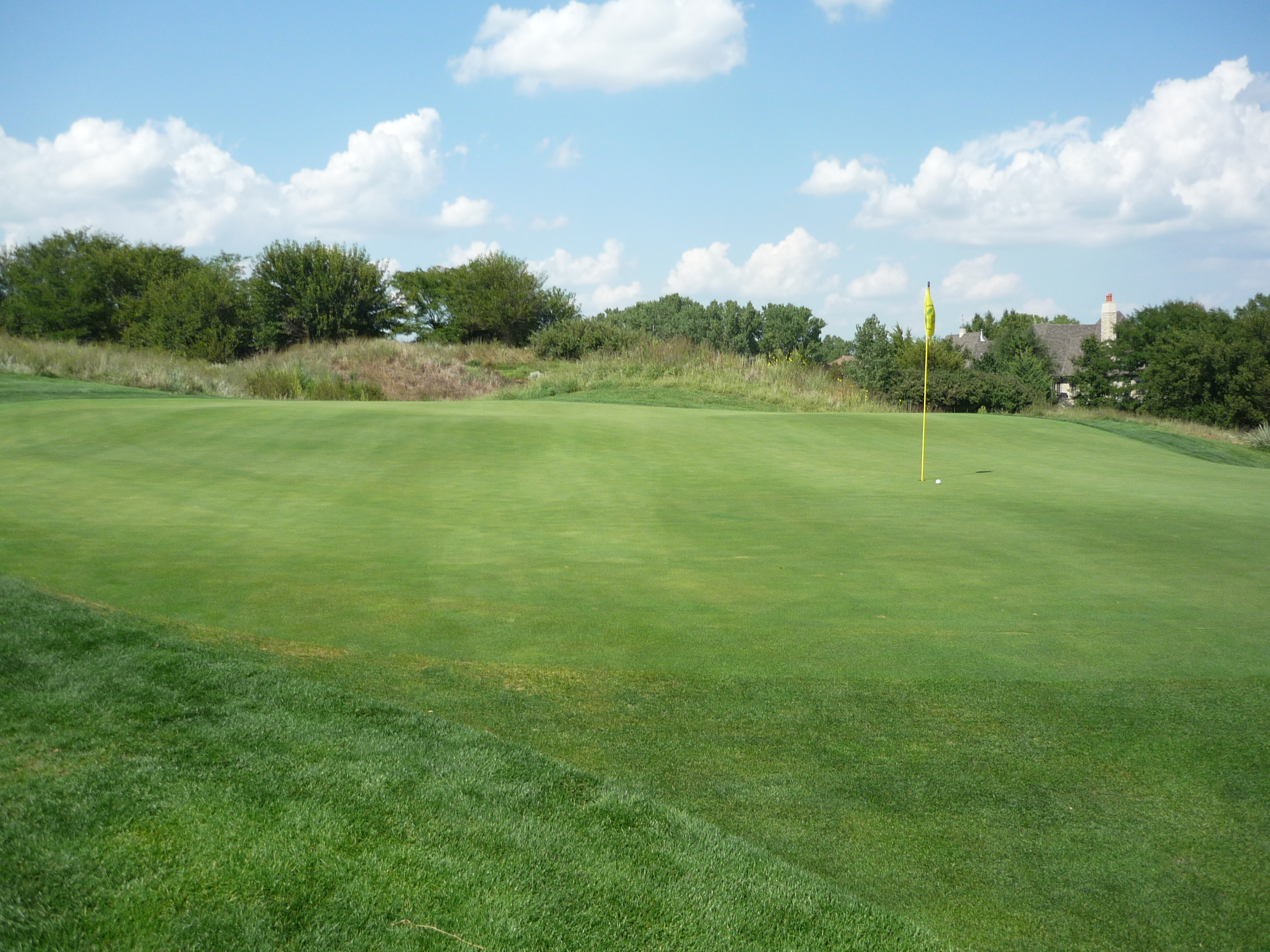
Hole 9 – 426 yards – Par 4 – Meadow Lark
The hole here is a long one, but you will get some extra carry from the elevated tee. The center of the fairway works well here.
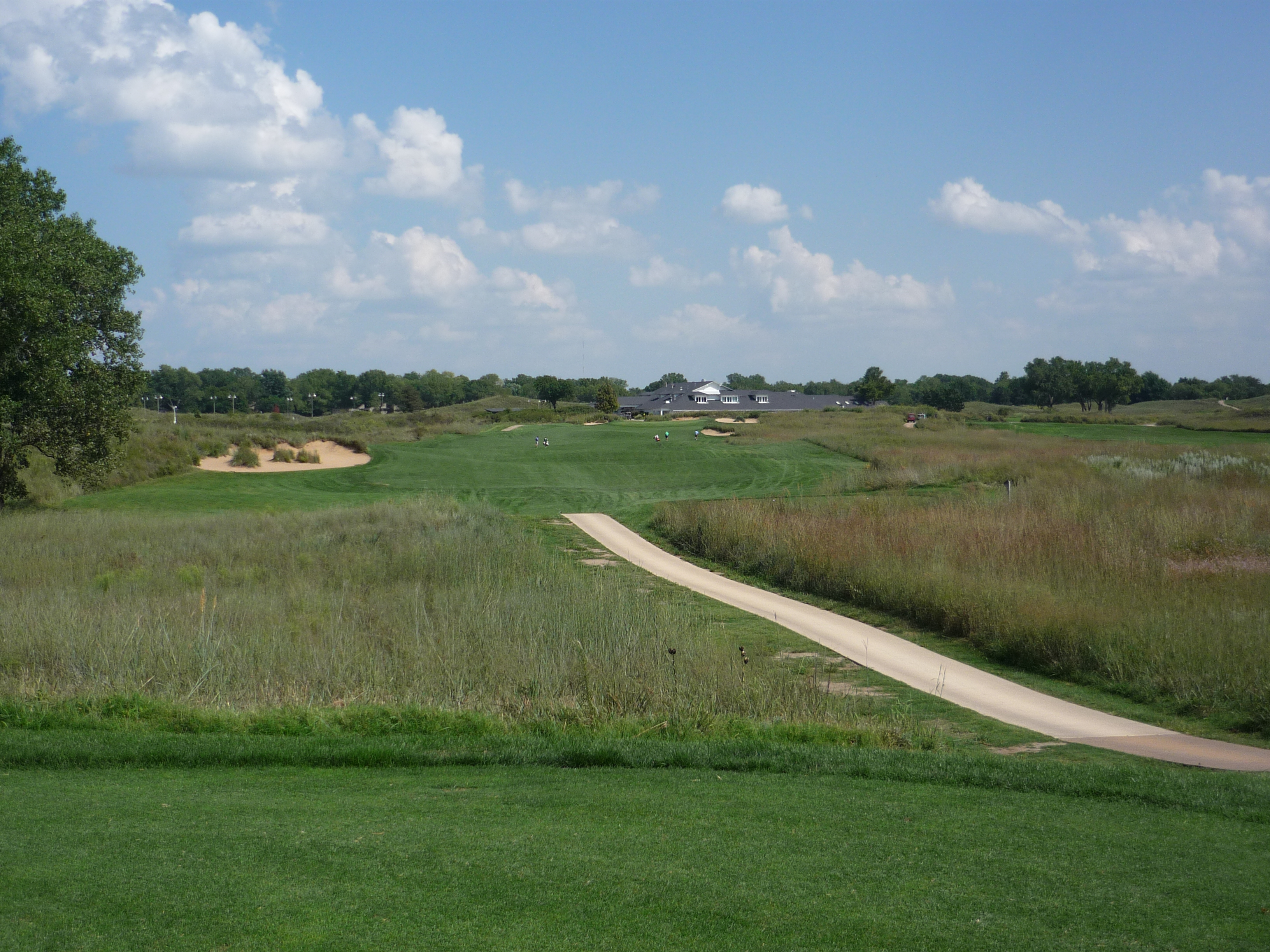
The second shot plays opposite the tee shot as it is all uphill. The green is slightly raised from the ground around it.
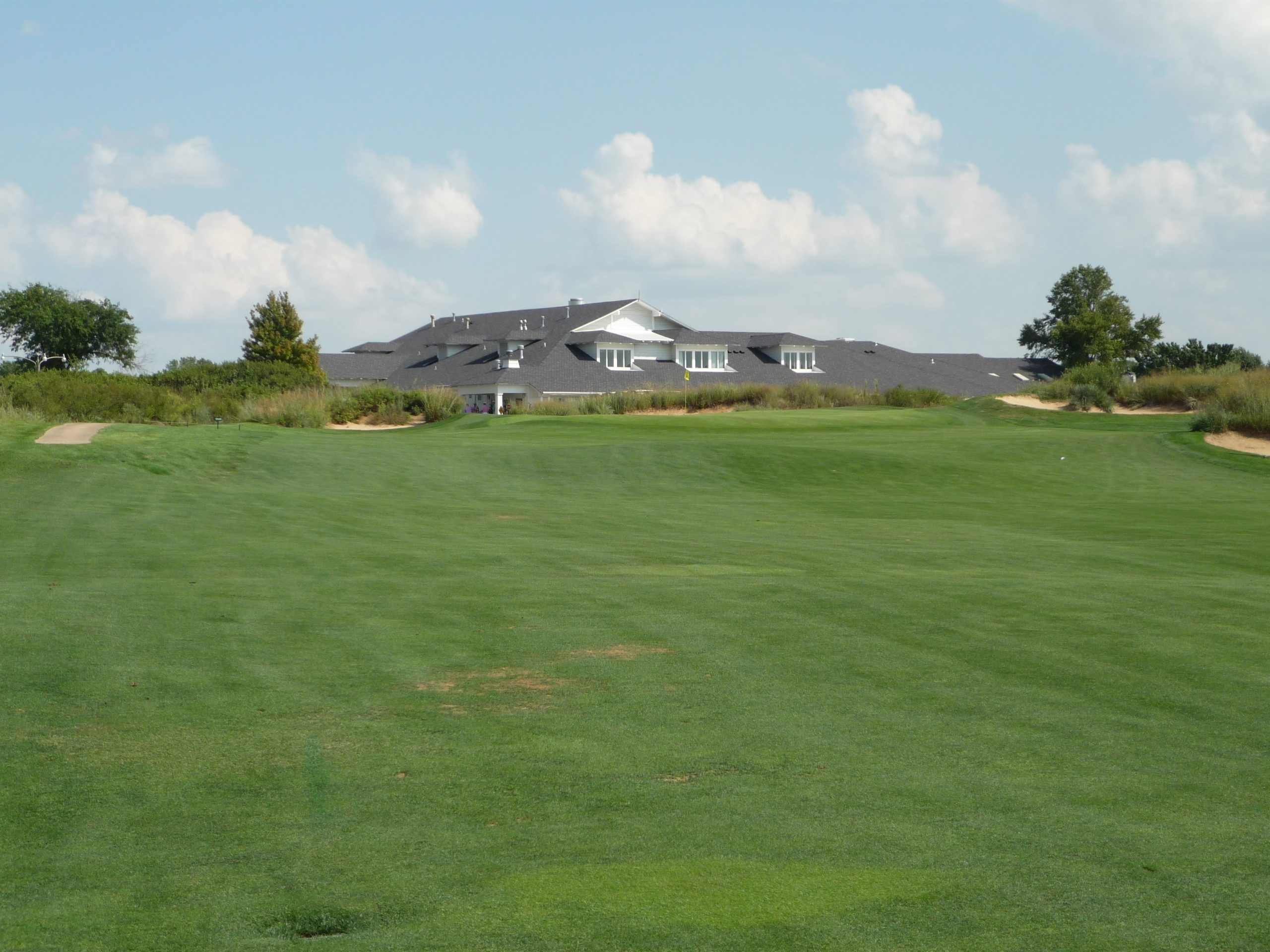
Hole 10 – 185 yards – Par 3 – Yucca
This tee is right off of the clubhouse and you may get an audience from the pool. It can be an intimidating shot when you see all the gunsch. In reality, the forced carry is not too far. The hole does slope uphill so more club may be required.
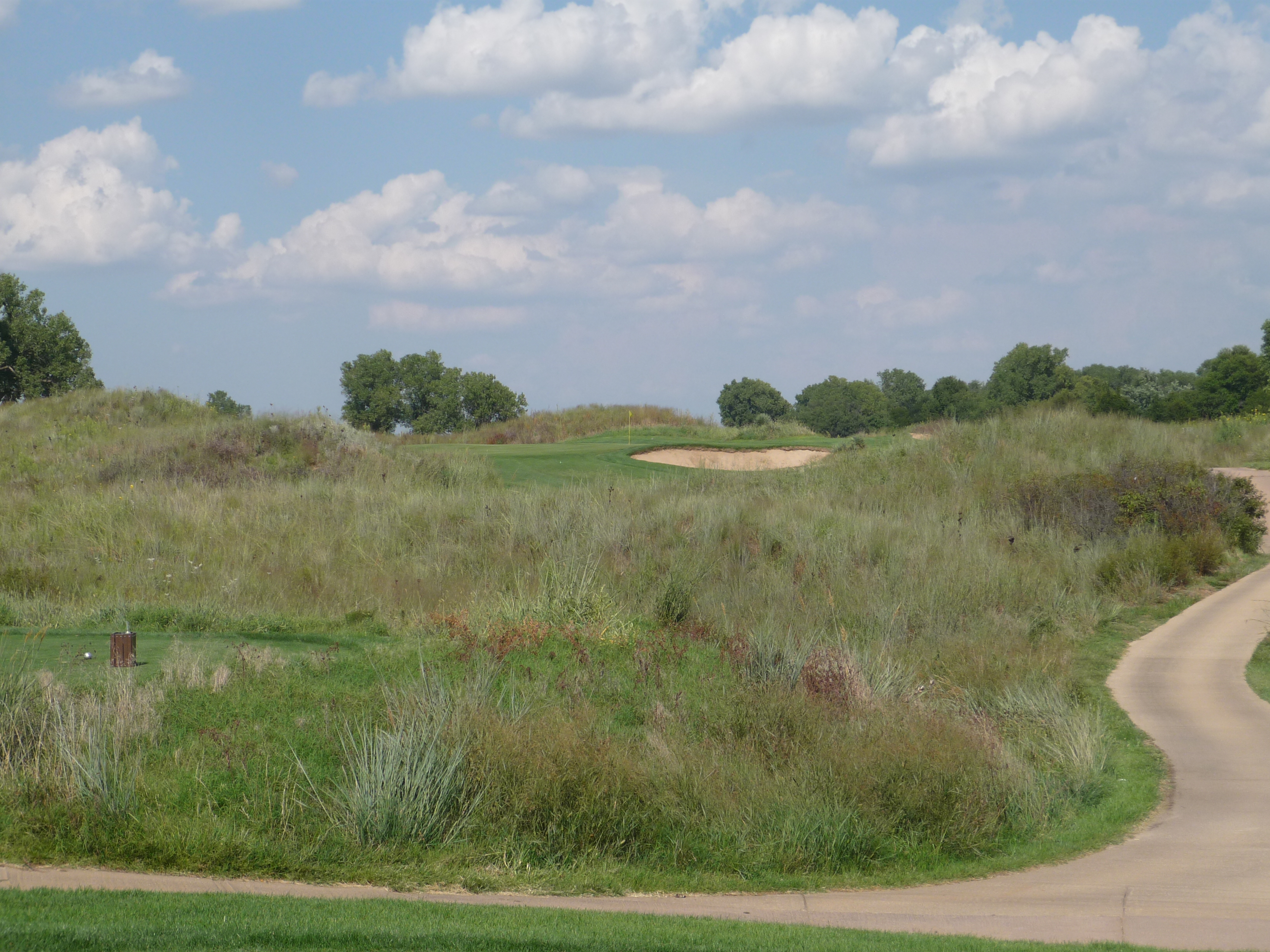
The green is pretty large and pin position can affect the club selection on the tee shot. You can see the contours in the photo below.
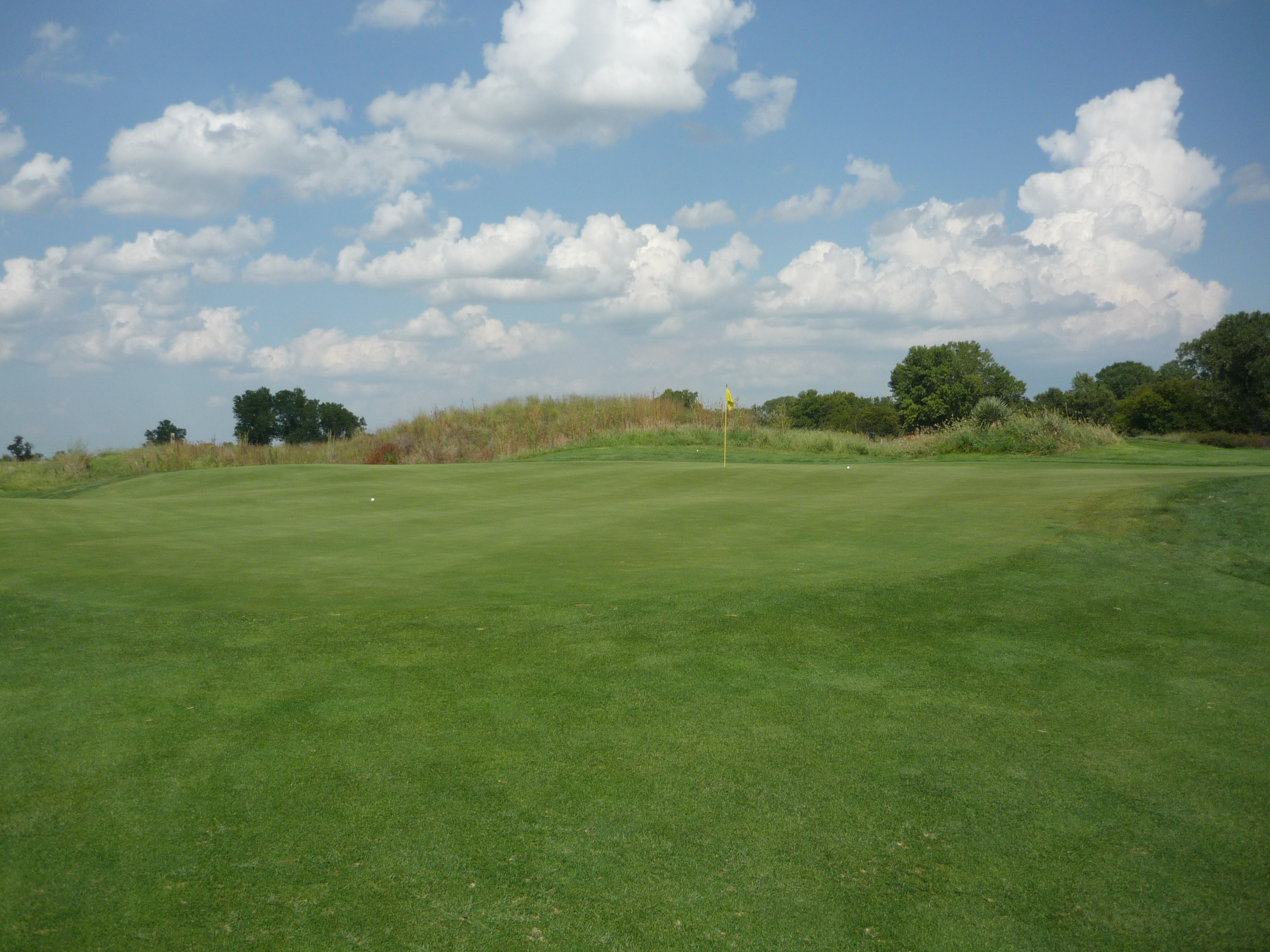
Hole 11 – 453 yards – Par 4 – Honey Locust
This is a brutally tough hole and can be even worse with the wind in your face. The water is not really in play, but you need a good drive. A good, aggressive line is at the people in the fairway.
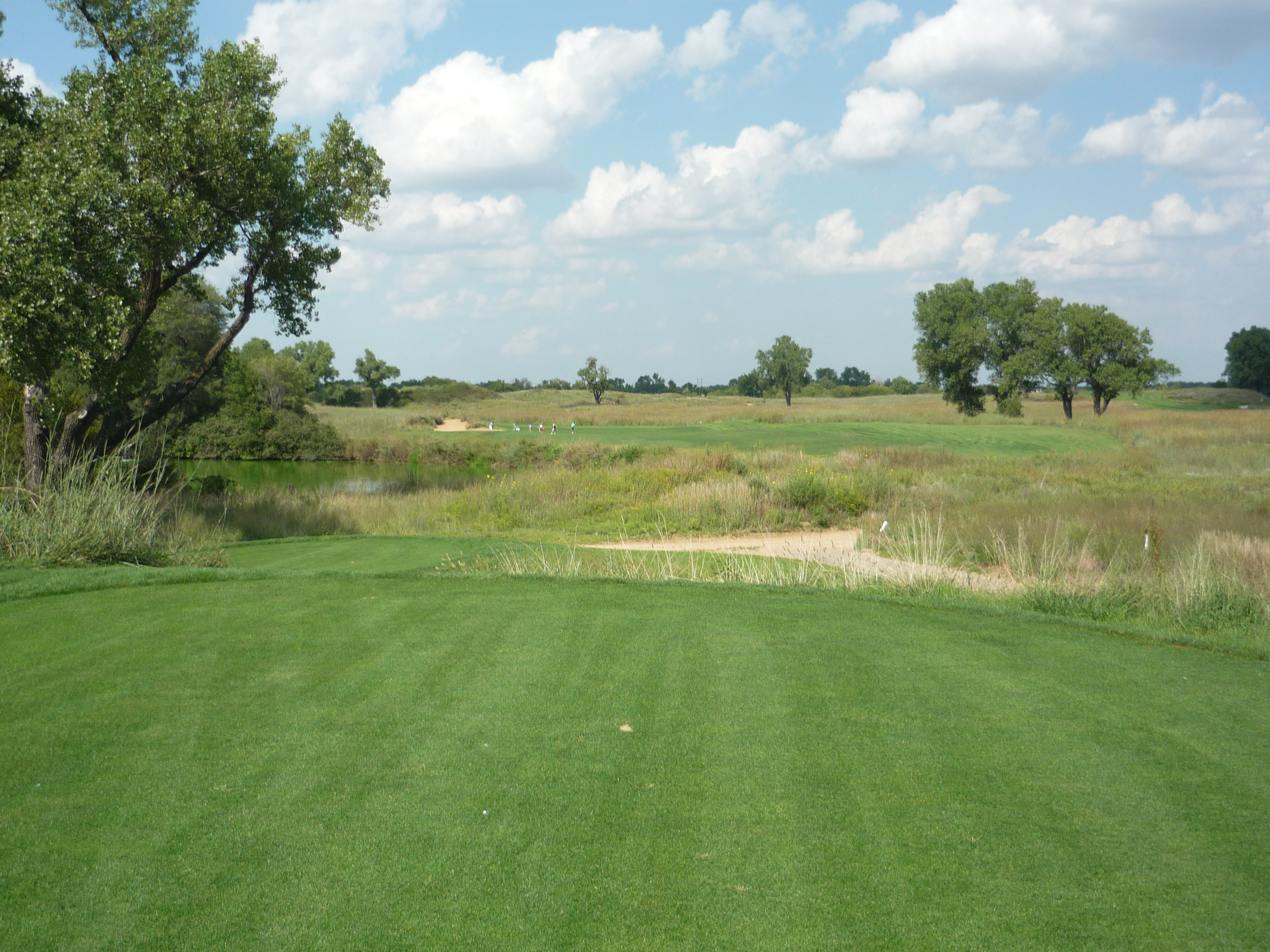
The second shot can be a long one, and it somewhat reminds me of the first approach. The green is more raised. The bunkers around the green make for difficult up and downs.
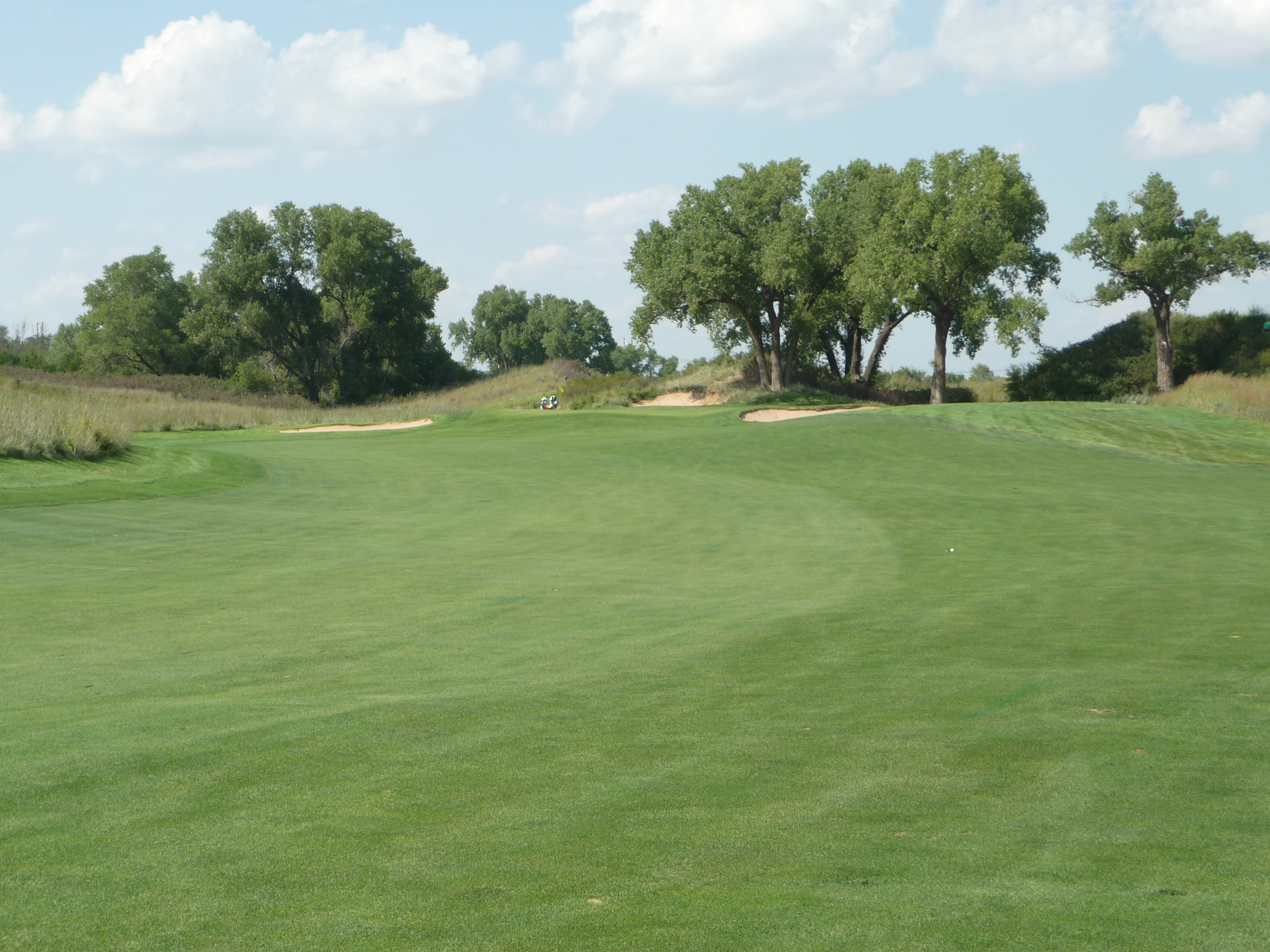
You can see the magnificent contouring on this green below.
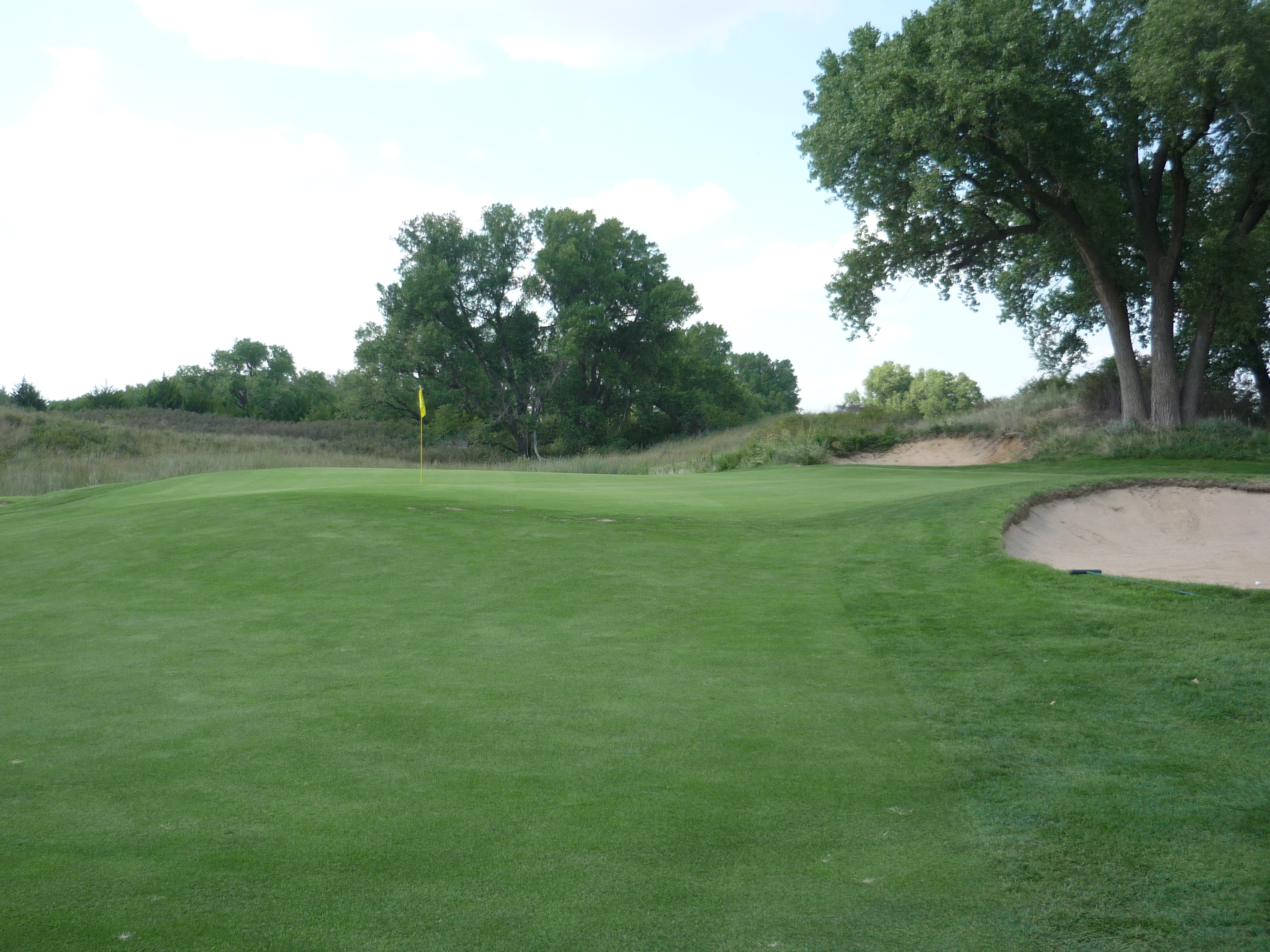
Here is another wide angle of the green. Just marvelous.
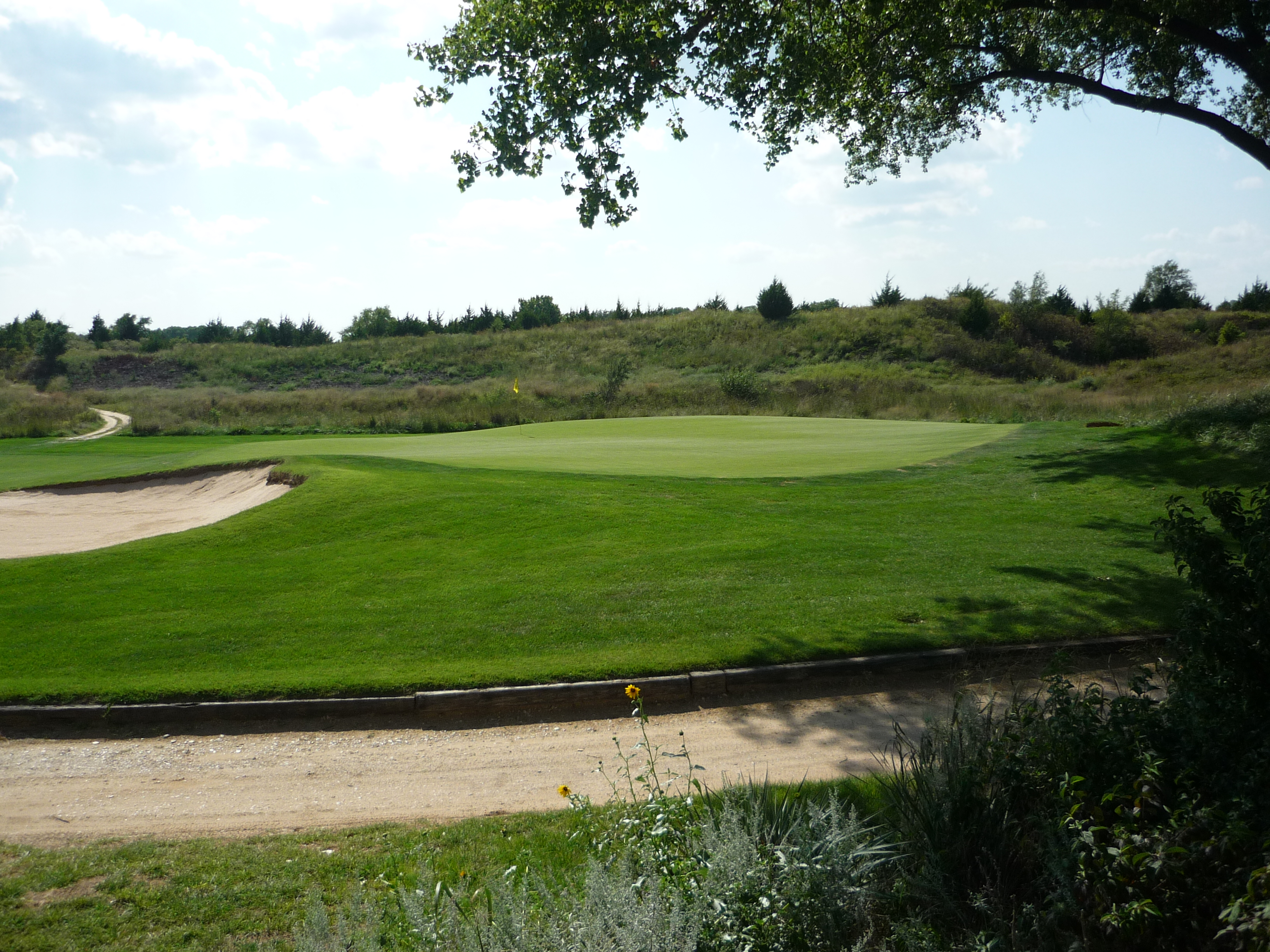
Hole 12 – 390 yards – Par 4 – Briar Patch
You will get your exercise in on the walk up to the 12th tee!
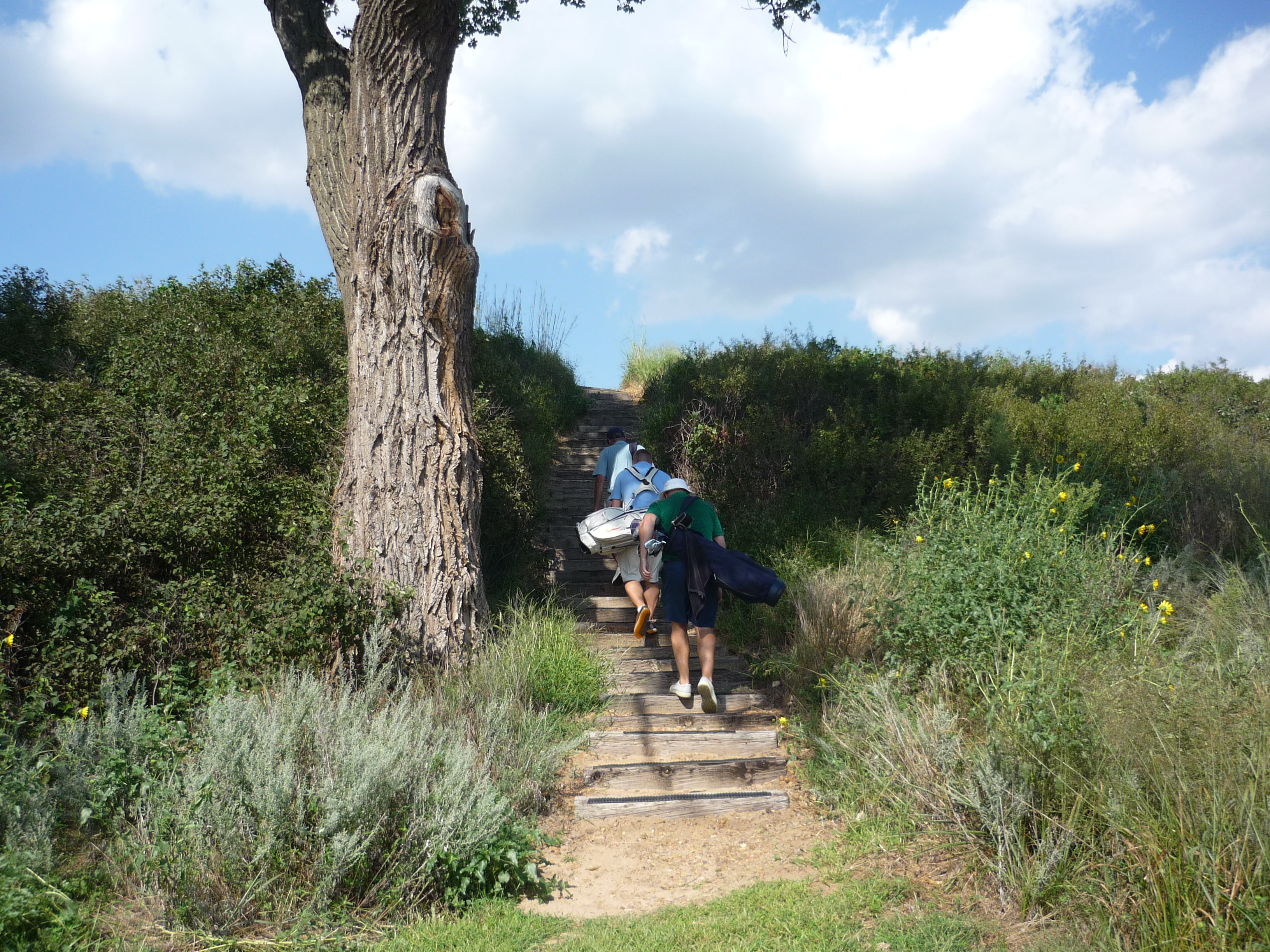
As you would expect the tee shot plays downhill. If you pound driver off the tee the trees that pinch the fairway will come into play. The bunkers are also well within reach.
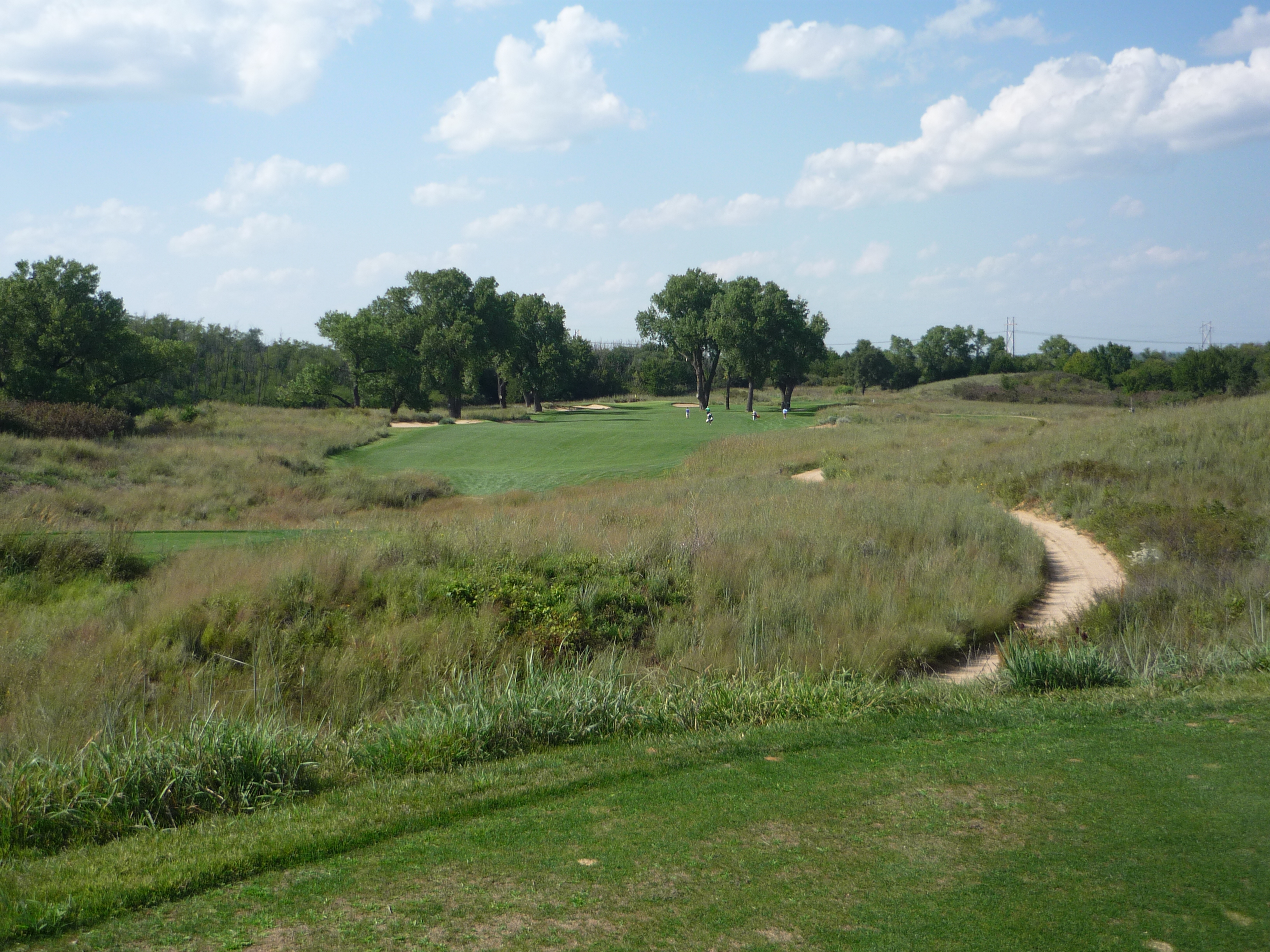
The approach is straightforward but beware of going long. There is some drop-off behind the green.
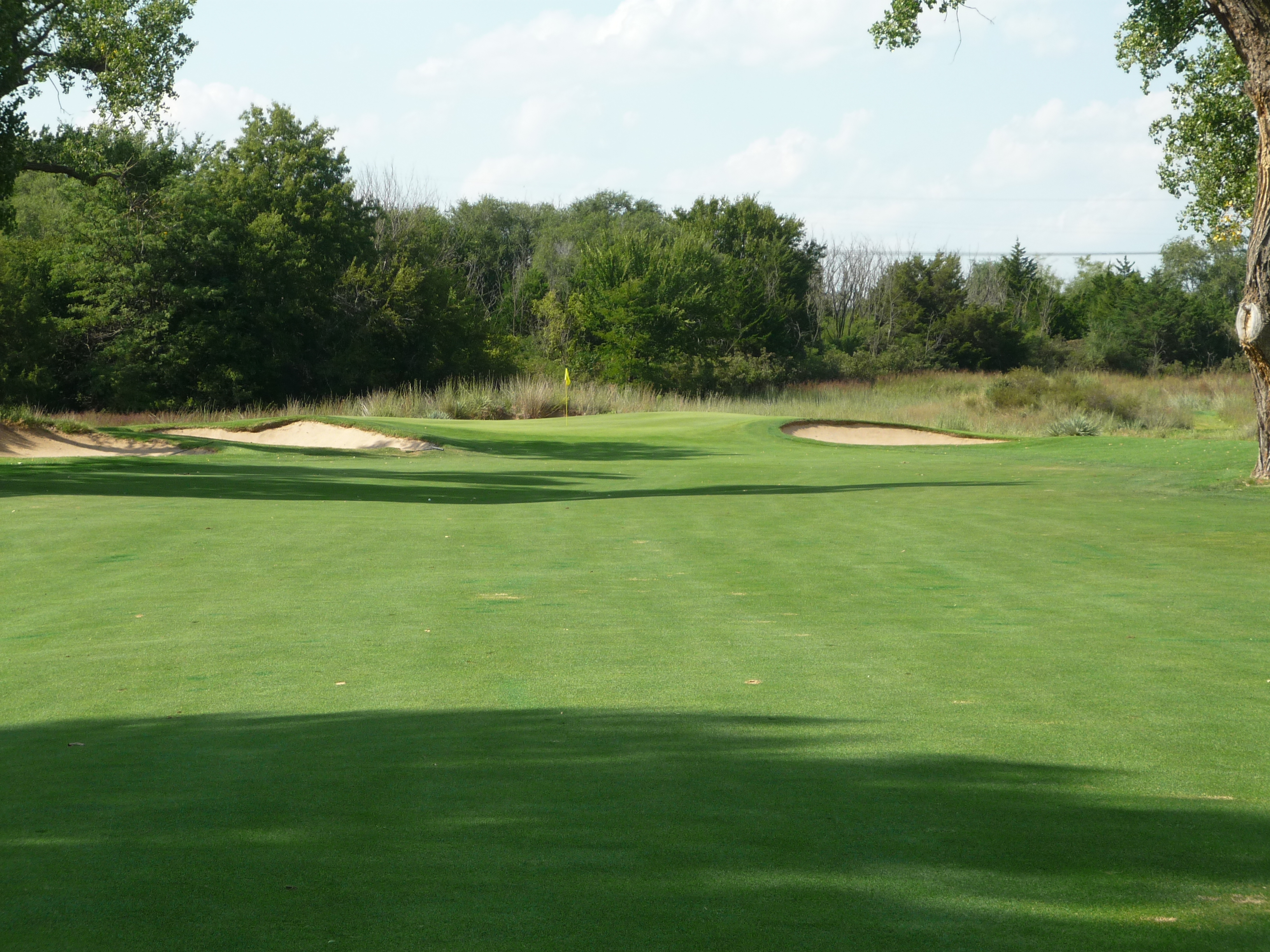
Some more Maxwell genius on this green. I can’t add much more than to say this surface makes you think when you are putting.
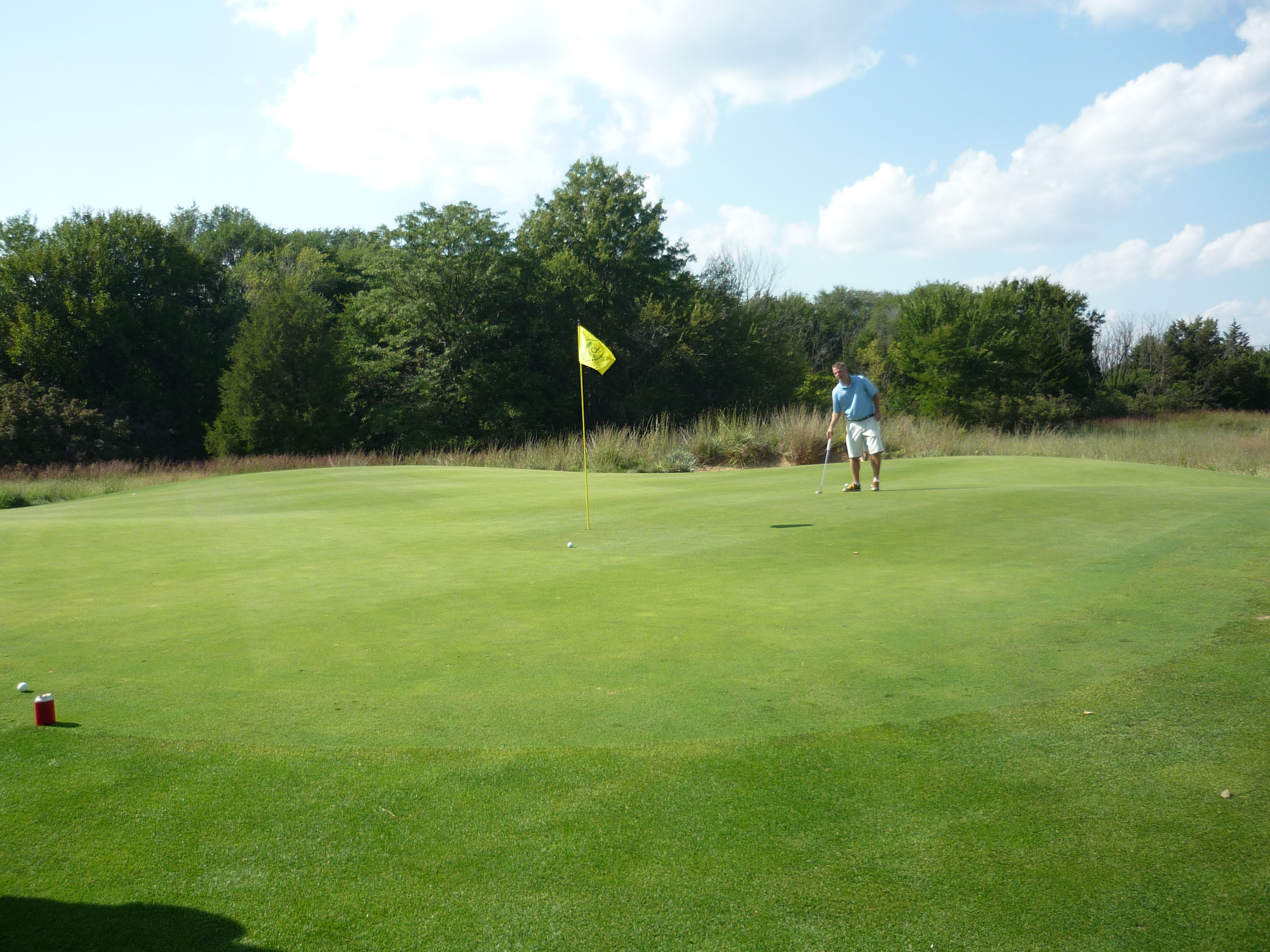
Hole 13 – 395 yards – Par 4 – Sumac
This tee shot plays to a landing area that you cannot see in its entirety. If you hit one just over where the cart path disappears you will be in great shape.
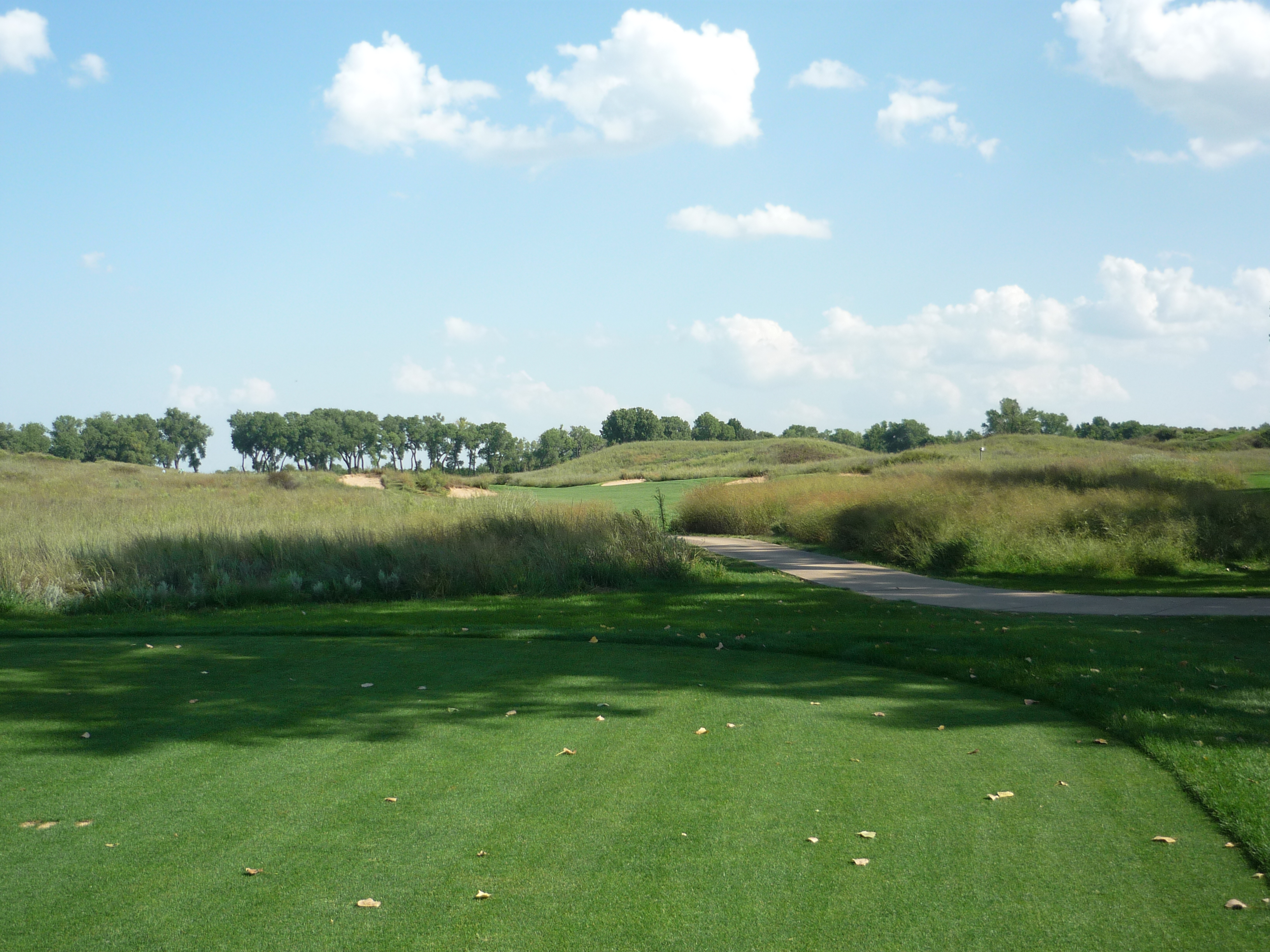
The second shot is uphill yet again. There is a false front on the green. Other than that there is not much to this shot.
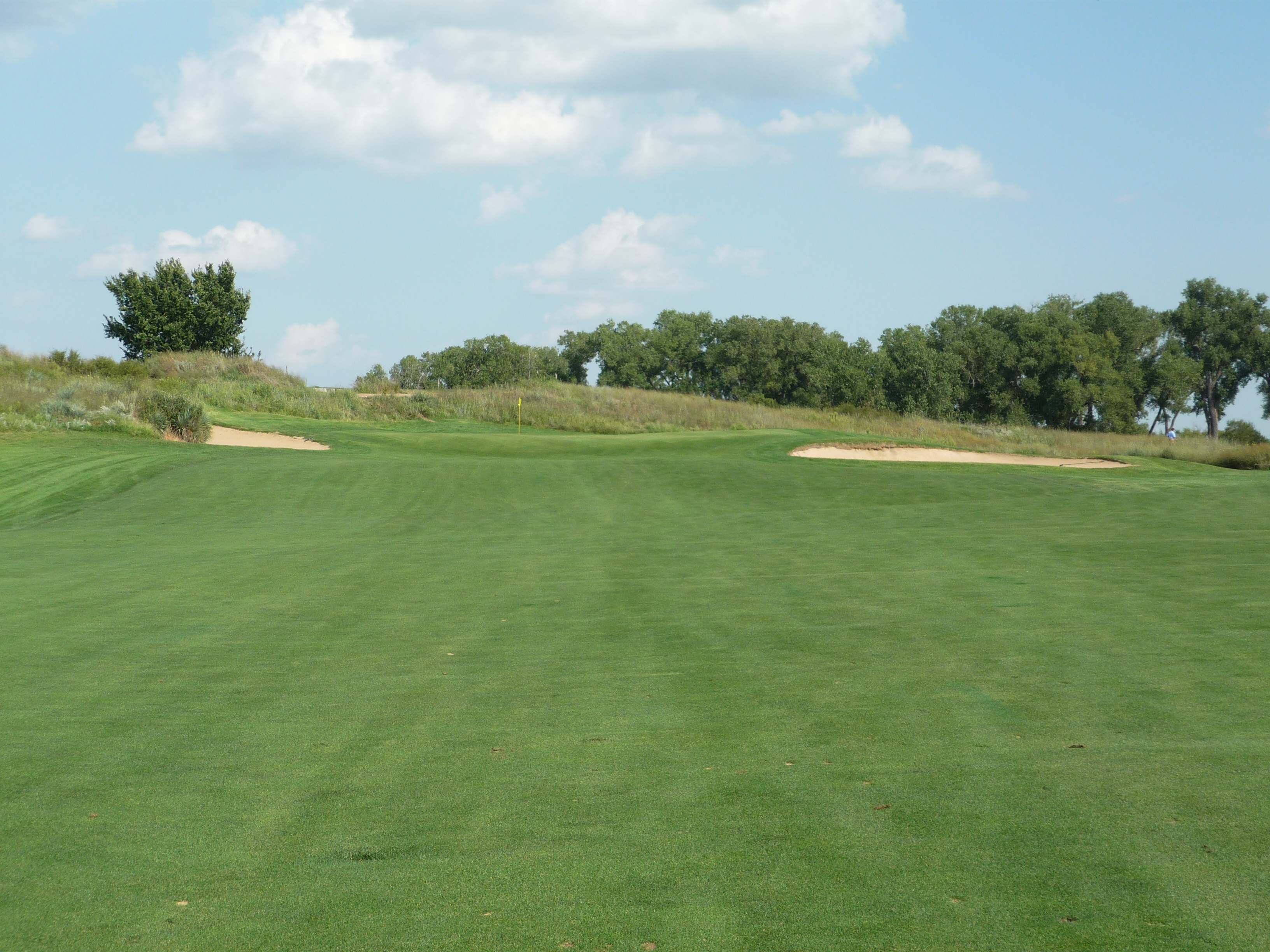
Here is a look at the green.
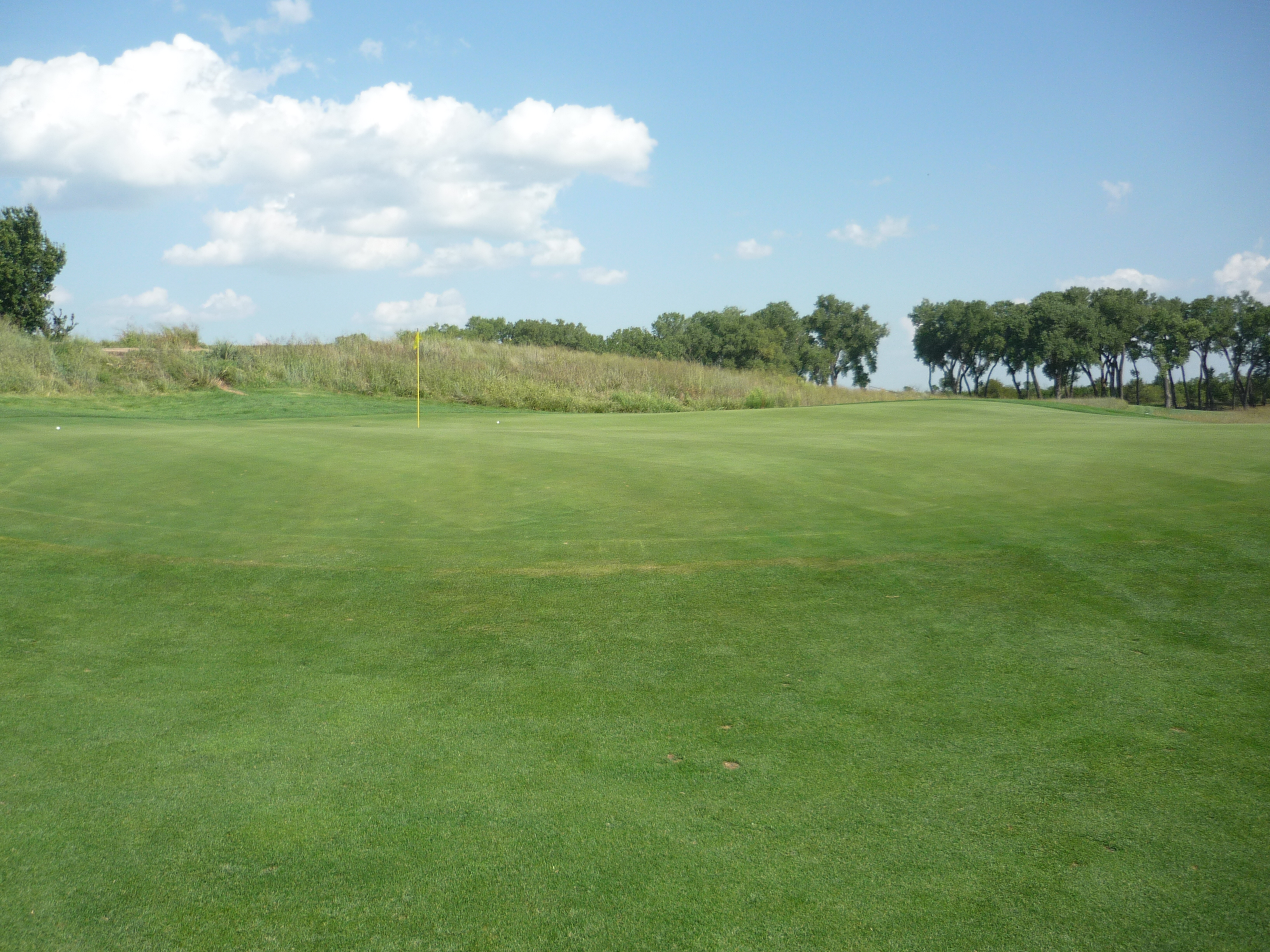
Here is another shot of the green from behind.
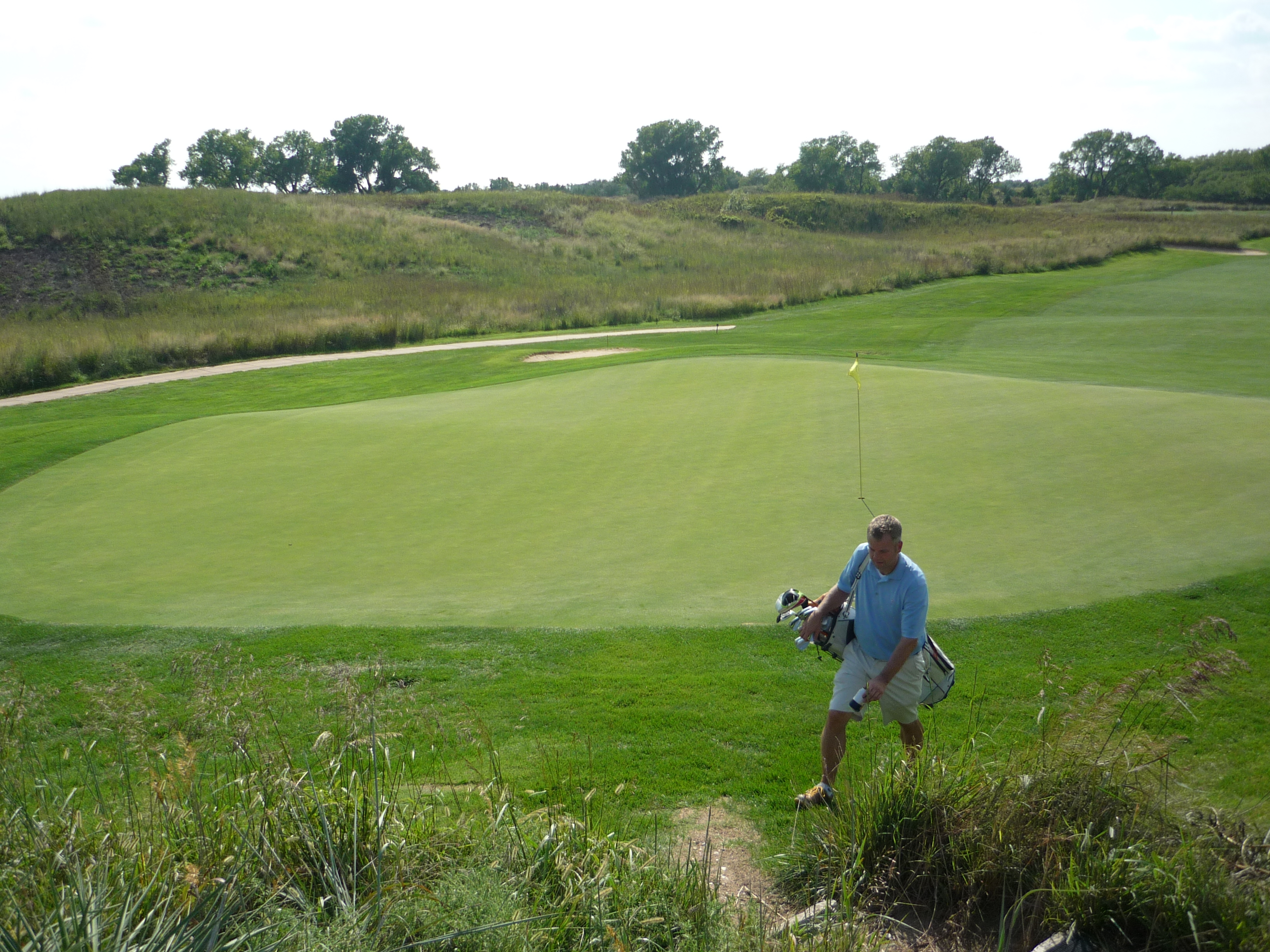
Hole 14 – 377 yards – Par 4 – Cotton Wood
This hole takes some strategy. You can take a direct line to the green and try to get it on. This is a long shot but could set up an easy birdie. The other option is taking a shorter club and playing out to the right.
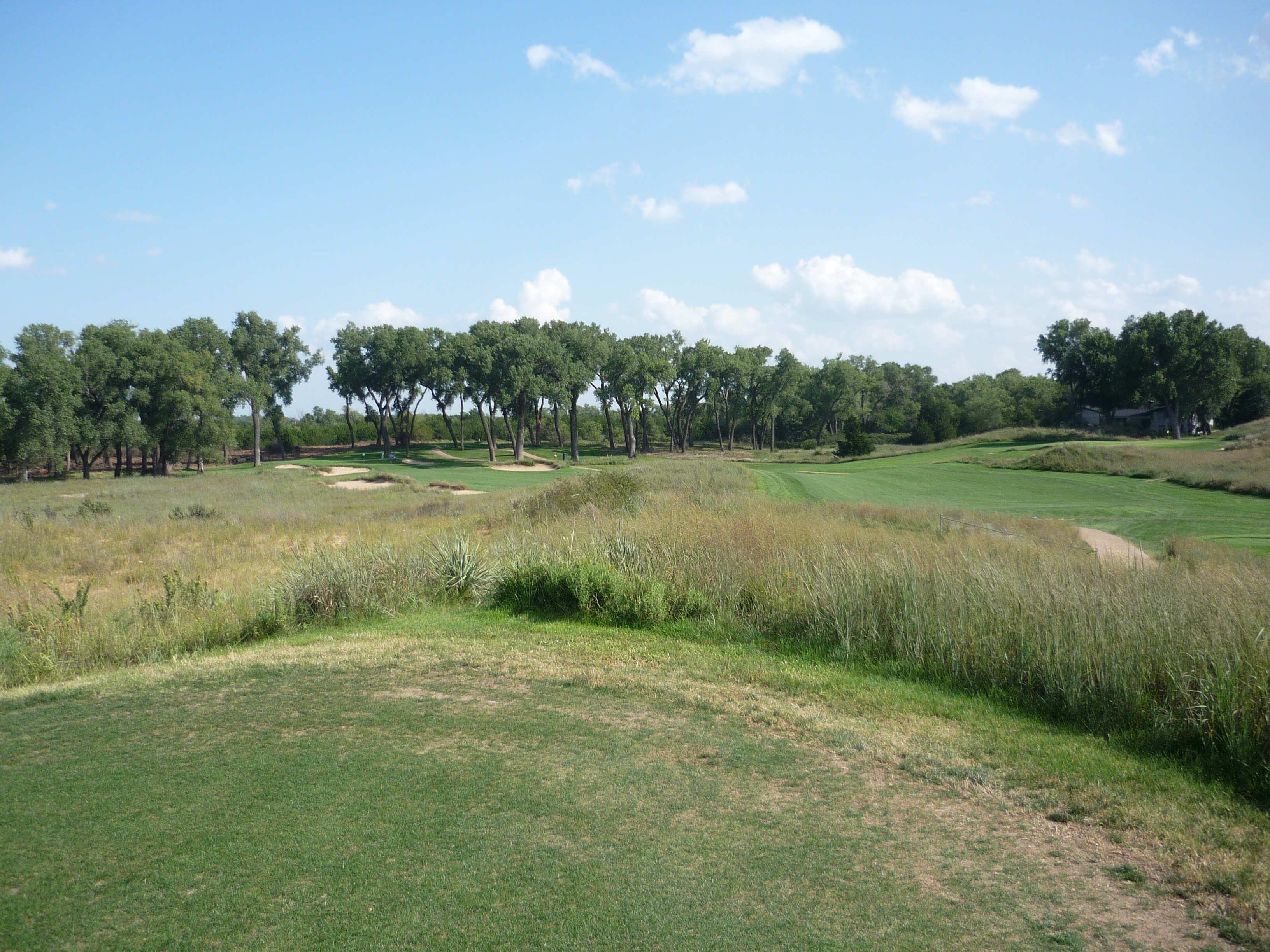
The approach shot is hemmed in by trees and bunkers. You can get a ball clattering around in there if your second shot is offline by a little bit.
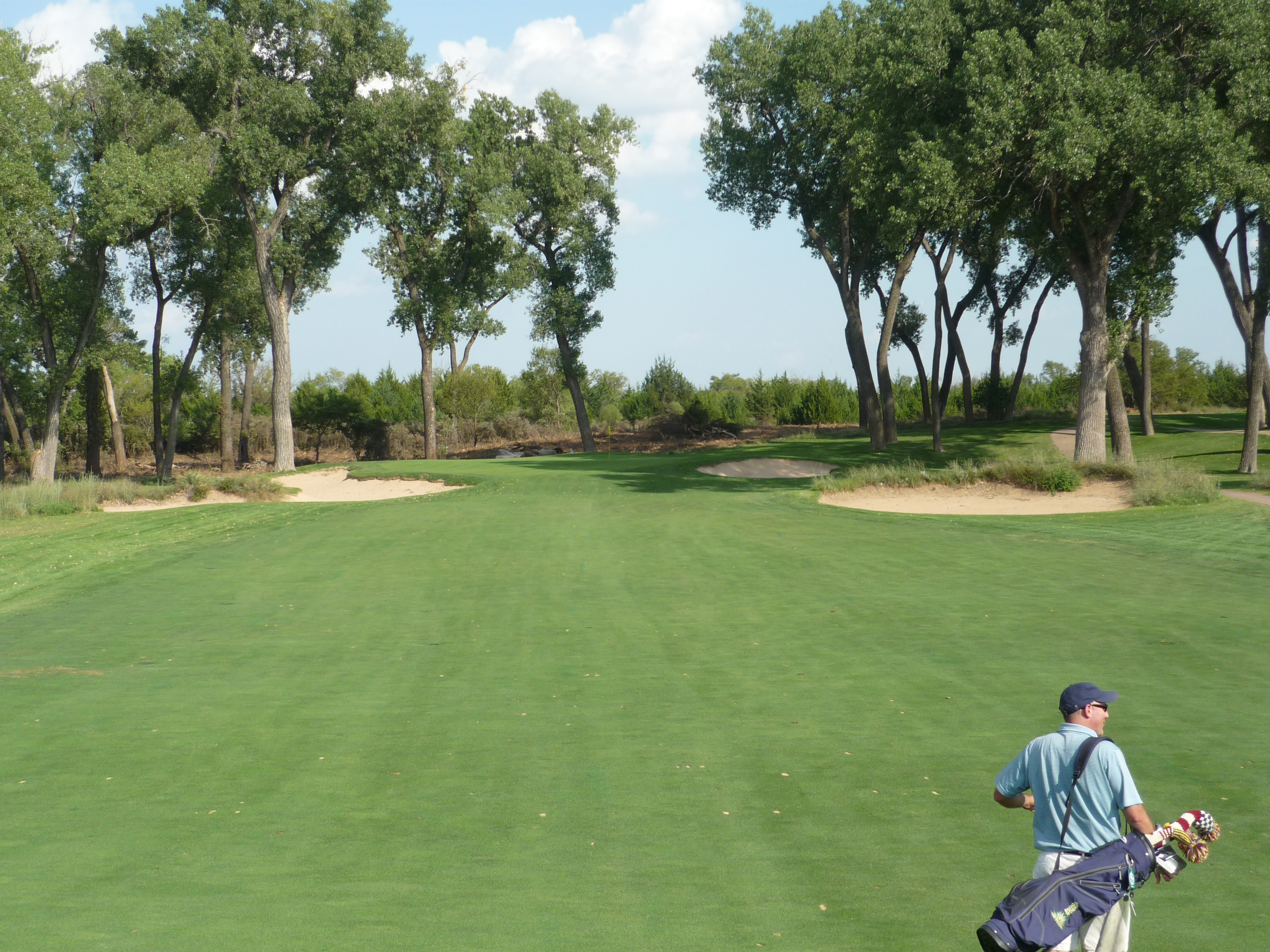
Here is a closer look from just short of the green.
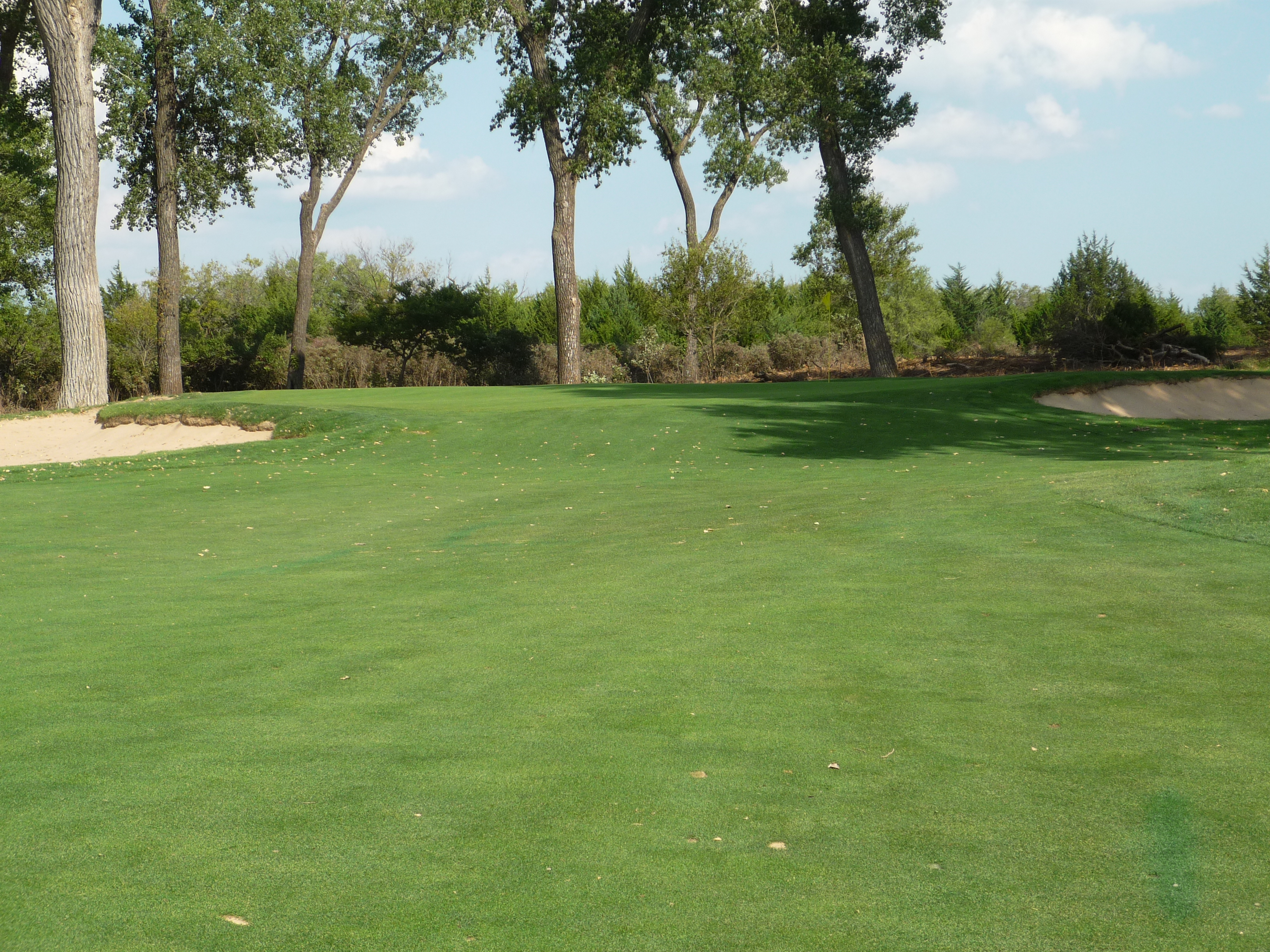
Here is a side view of the green that got a little washed out by the sun. Sorry about that.
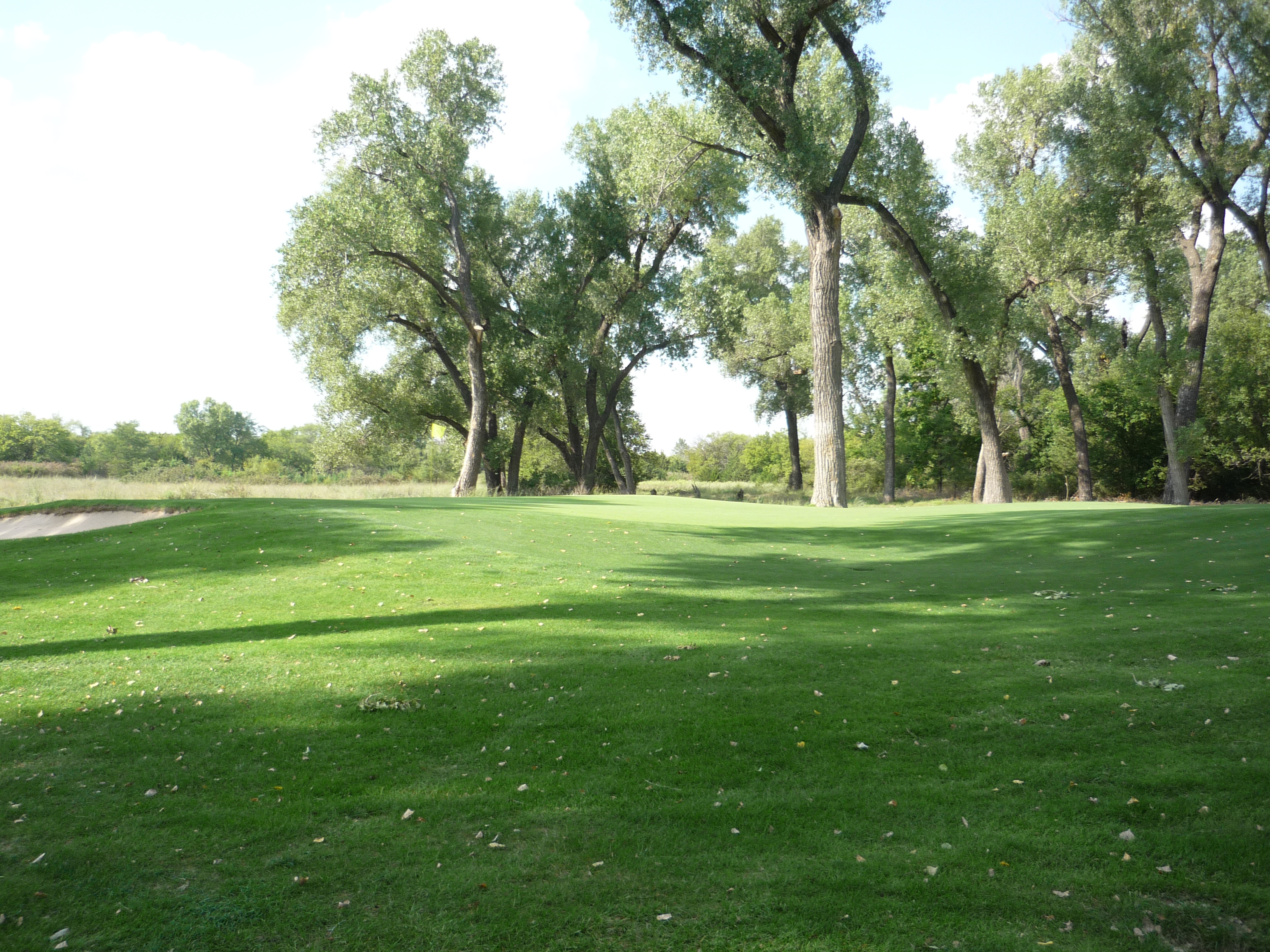
Hole 15 – 200 yards – Par 3 – The Chute
This is one of the only holes I didn’t like and it has nothing to do with the design. I think this hole is a poster child for the tree removal initiative. When playing the back tees you have to hit through a very narrow area. I hit a solid shot that would have been fine as a five-yard draw, but instead, it hit a tree 25 yards from the tee. This just doesn’t make sense to me.
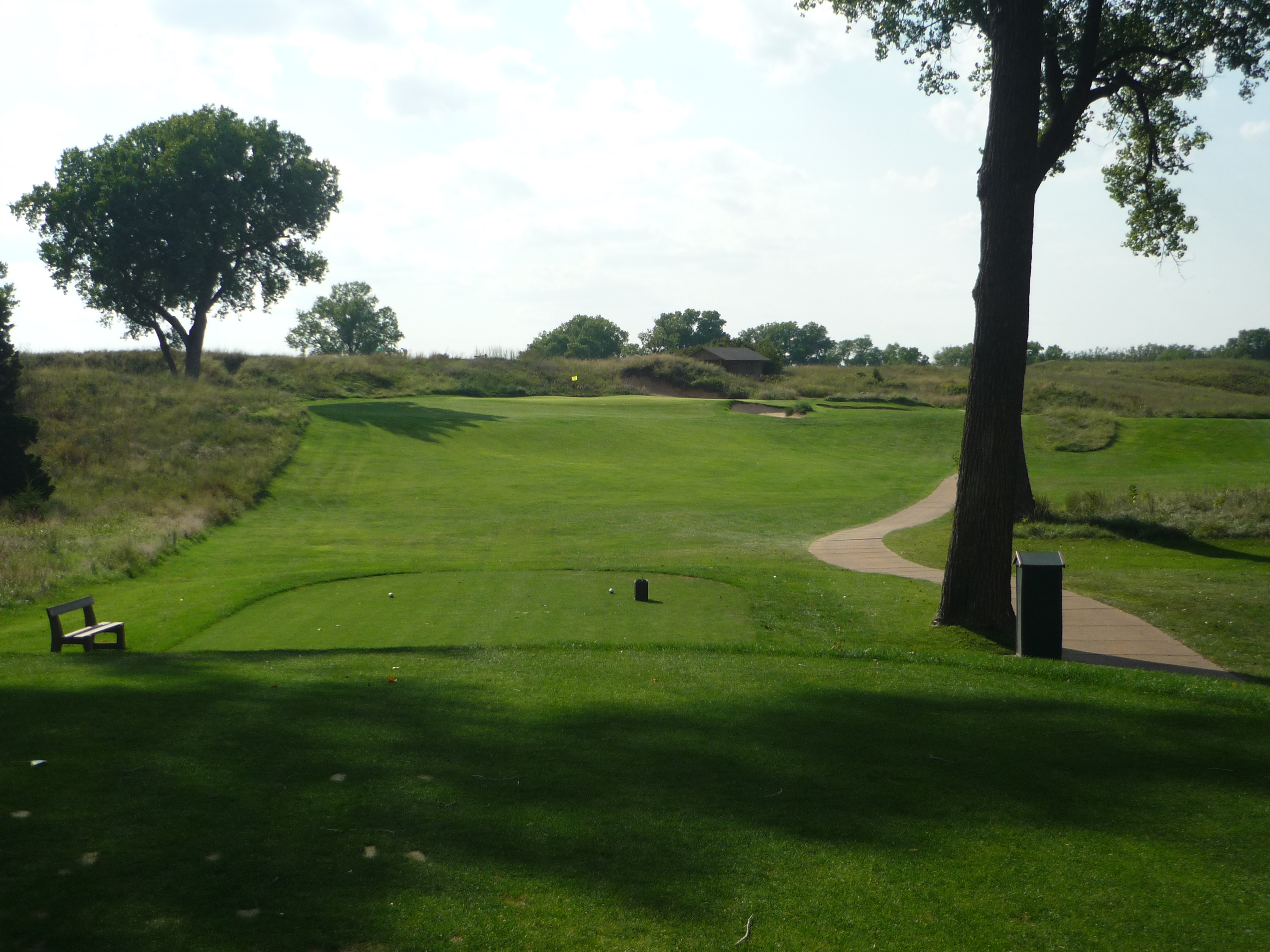
The green is another good one. Here it is below.
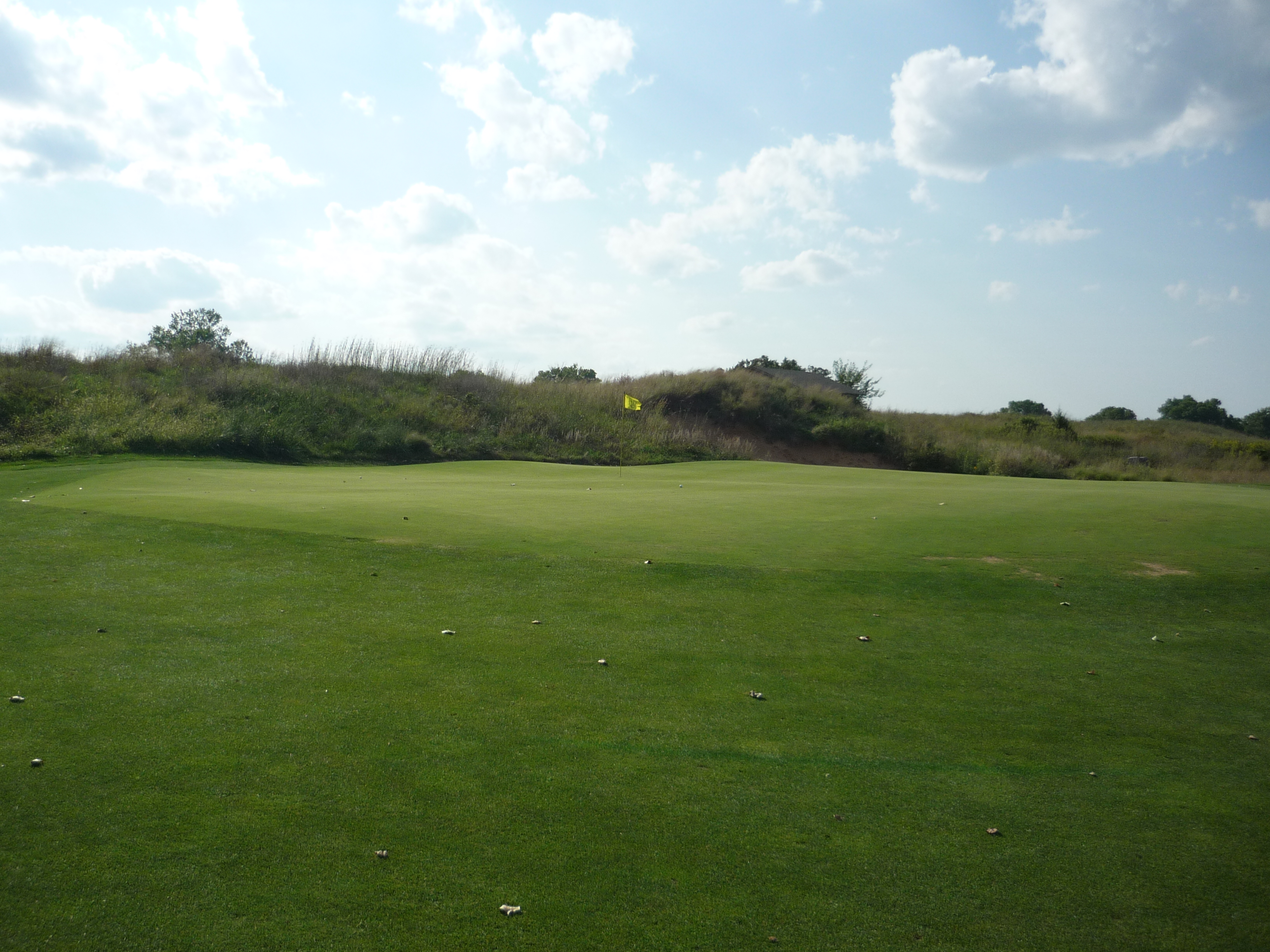
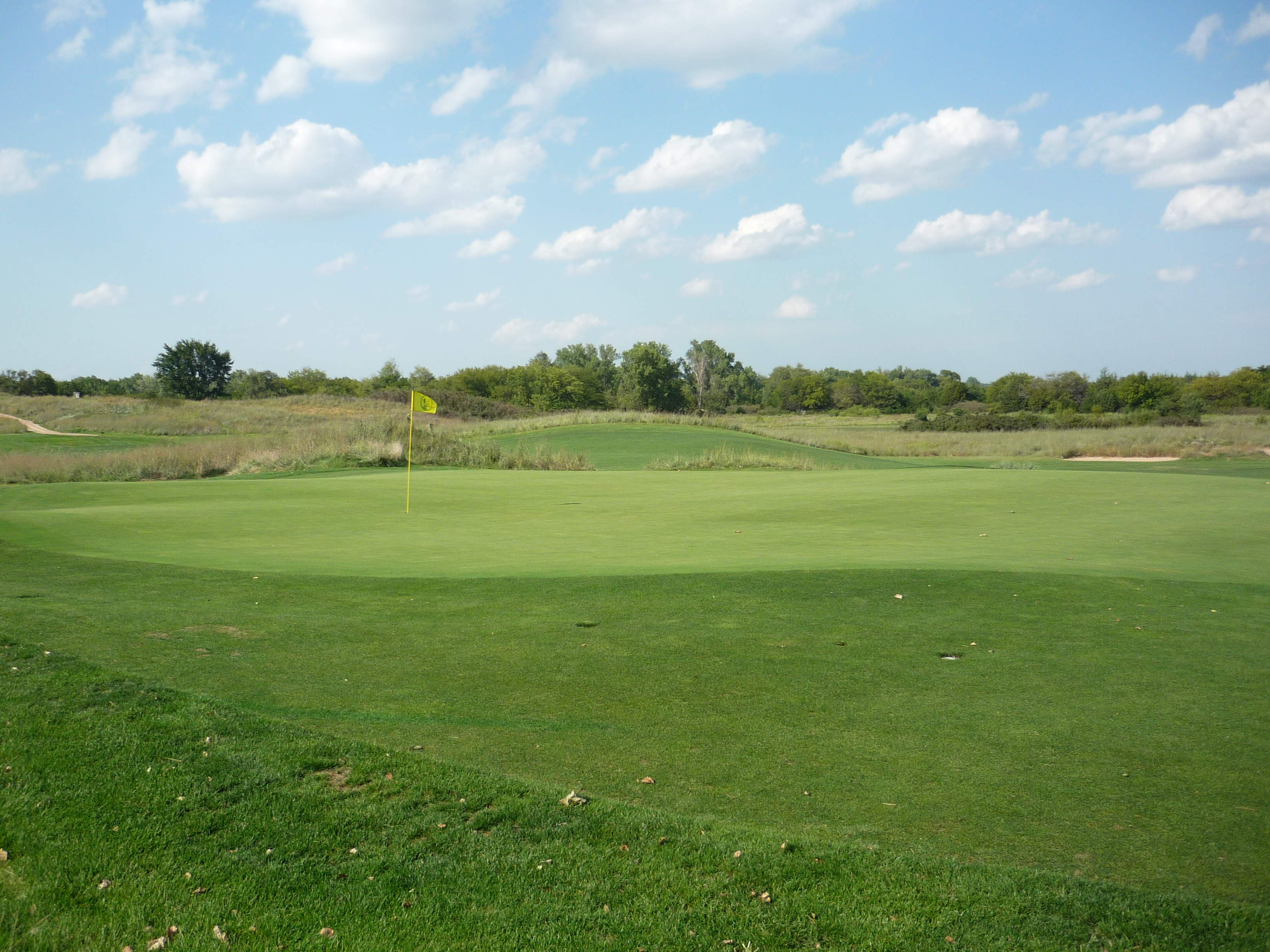
Hole 16 – 408 yards – Par 4 – Blue Stem
This is a demanding tee shot. The bunkers in the distance are in play and pinch in the landing area. You need a straight one here.
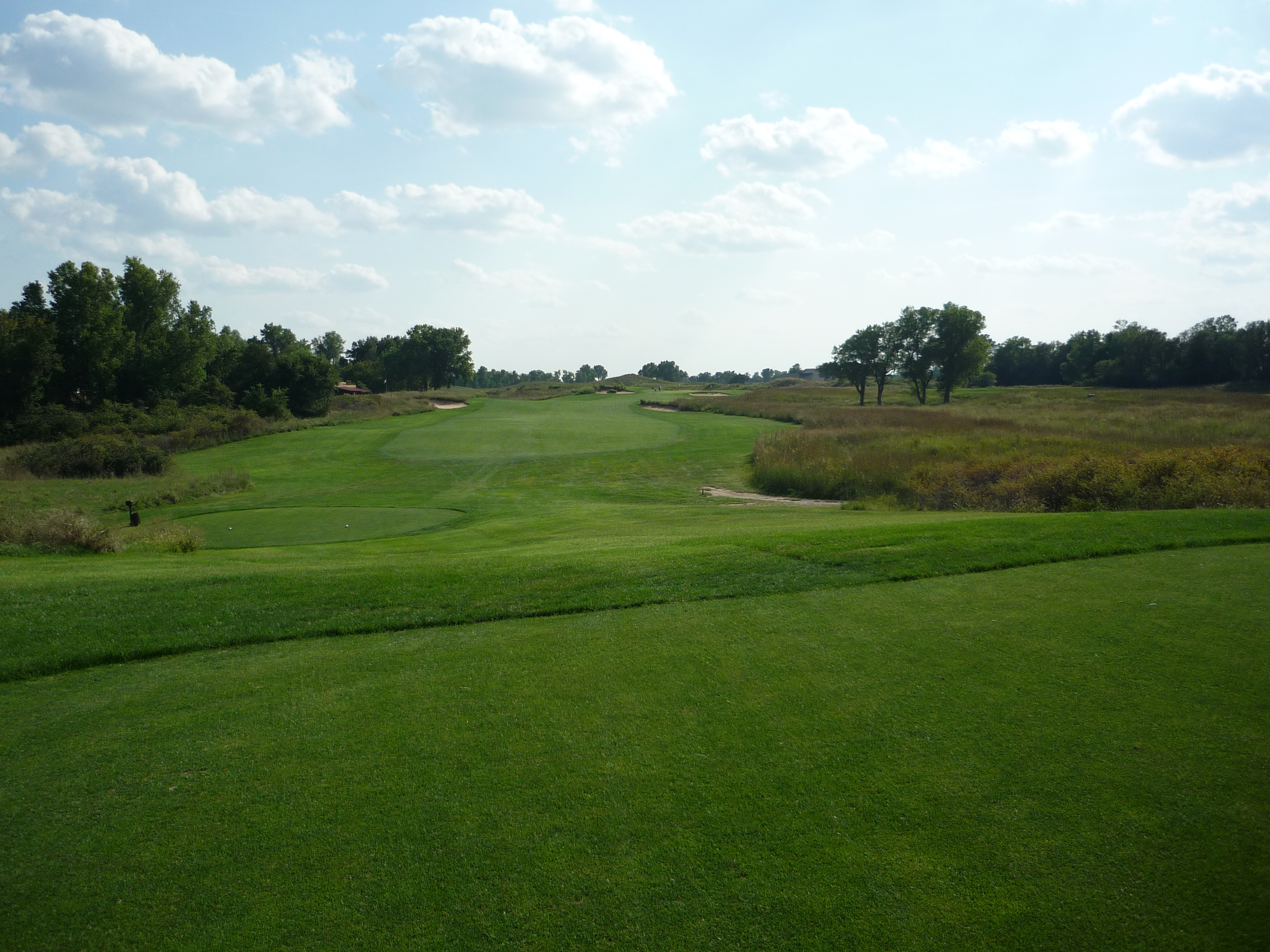
The approach is much easier than the tee shot in my opinion. The green is quite open and you must only avoid a couple of bunkers. This is one of the few green light shots here.
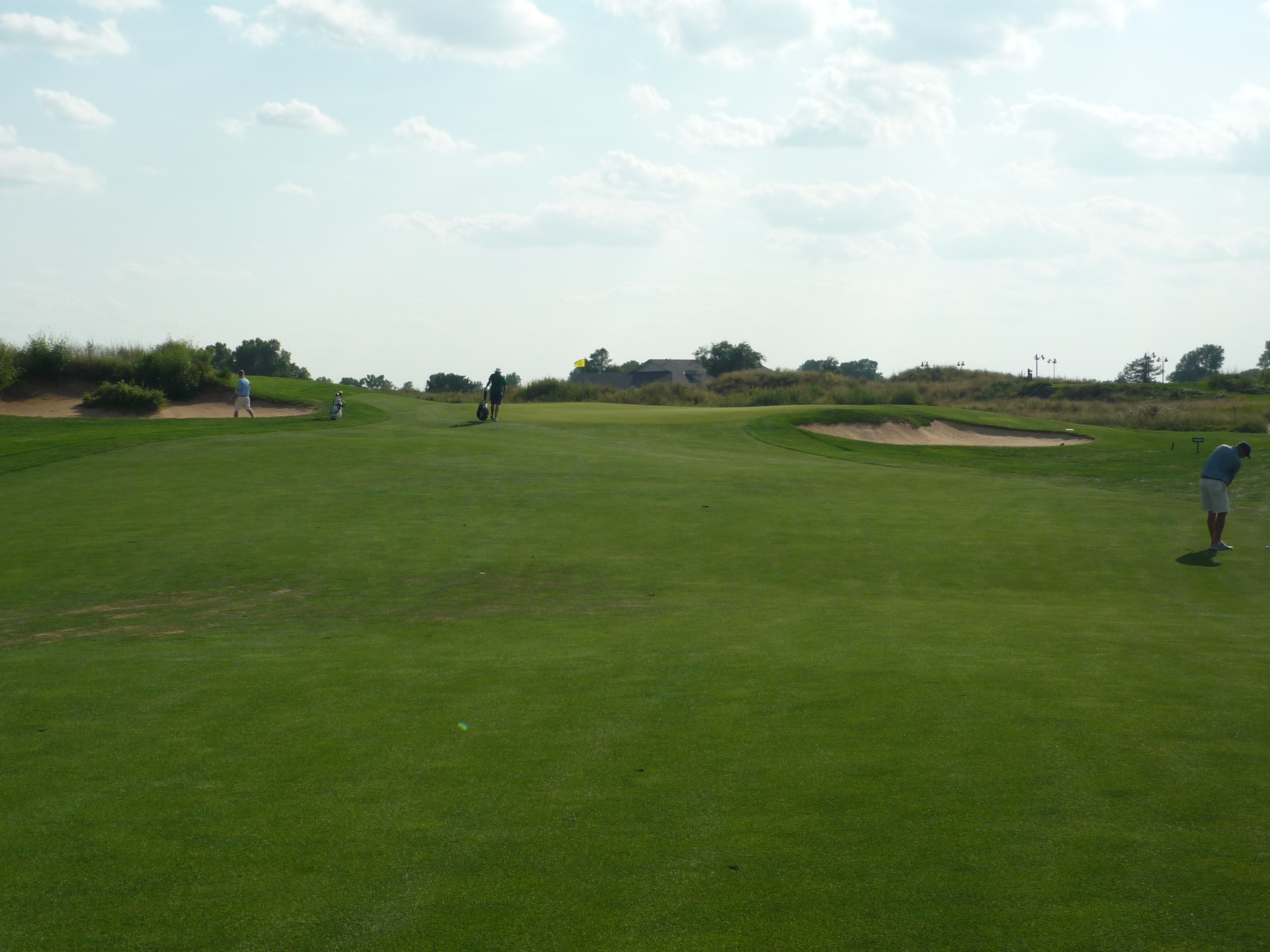
Here you can see the view of the green as you walk up to it.
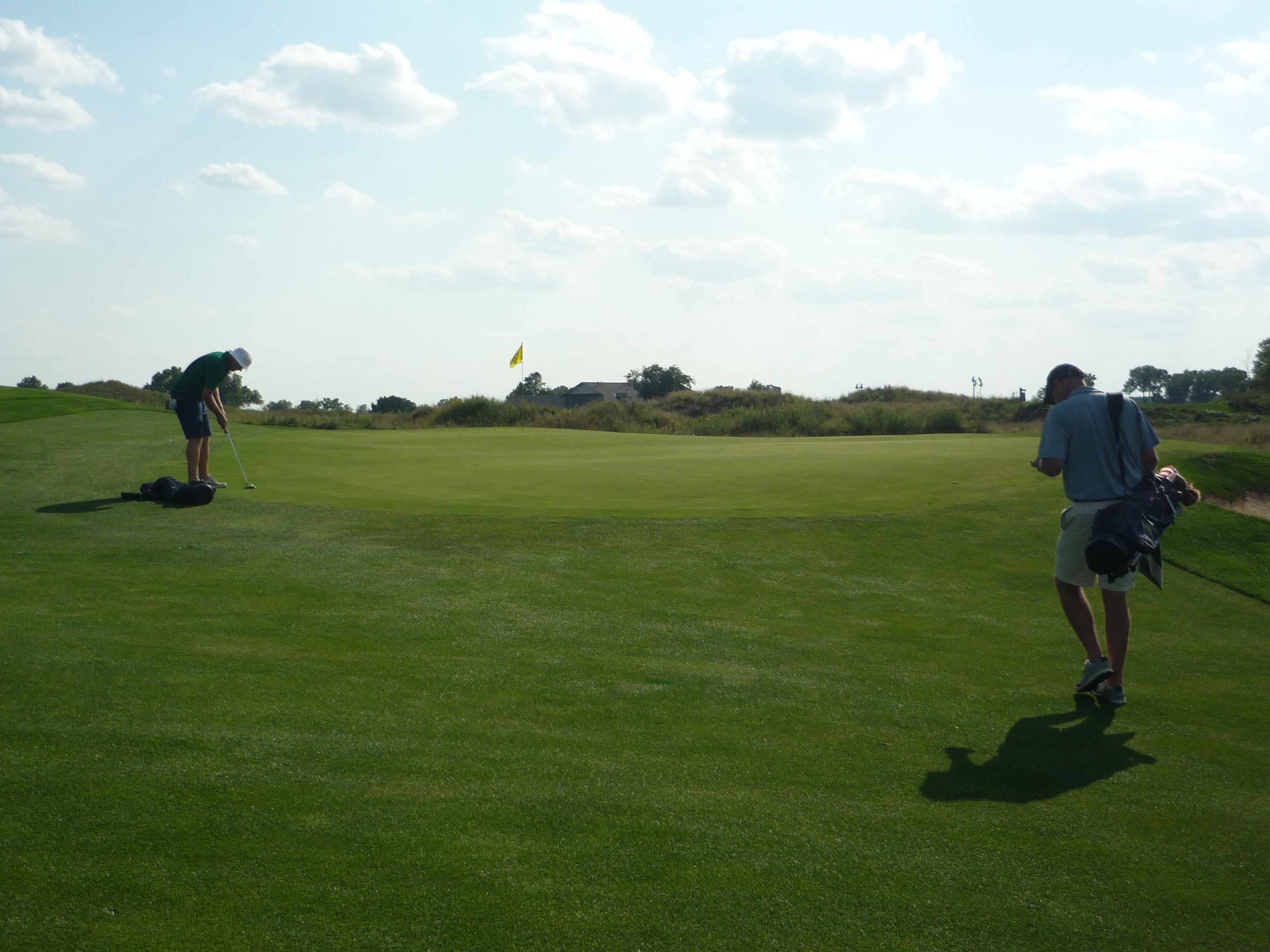
Here is another look at the back portion of the green.
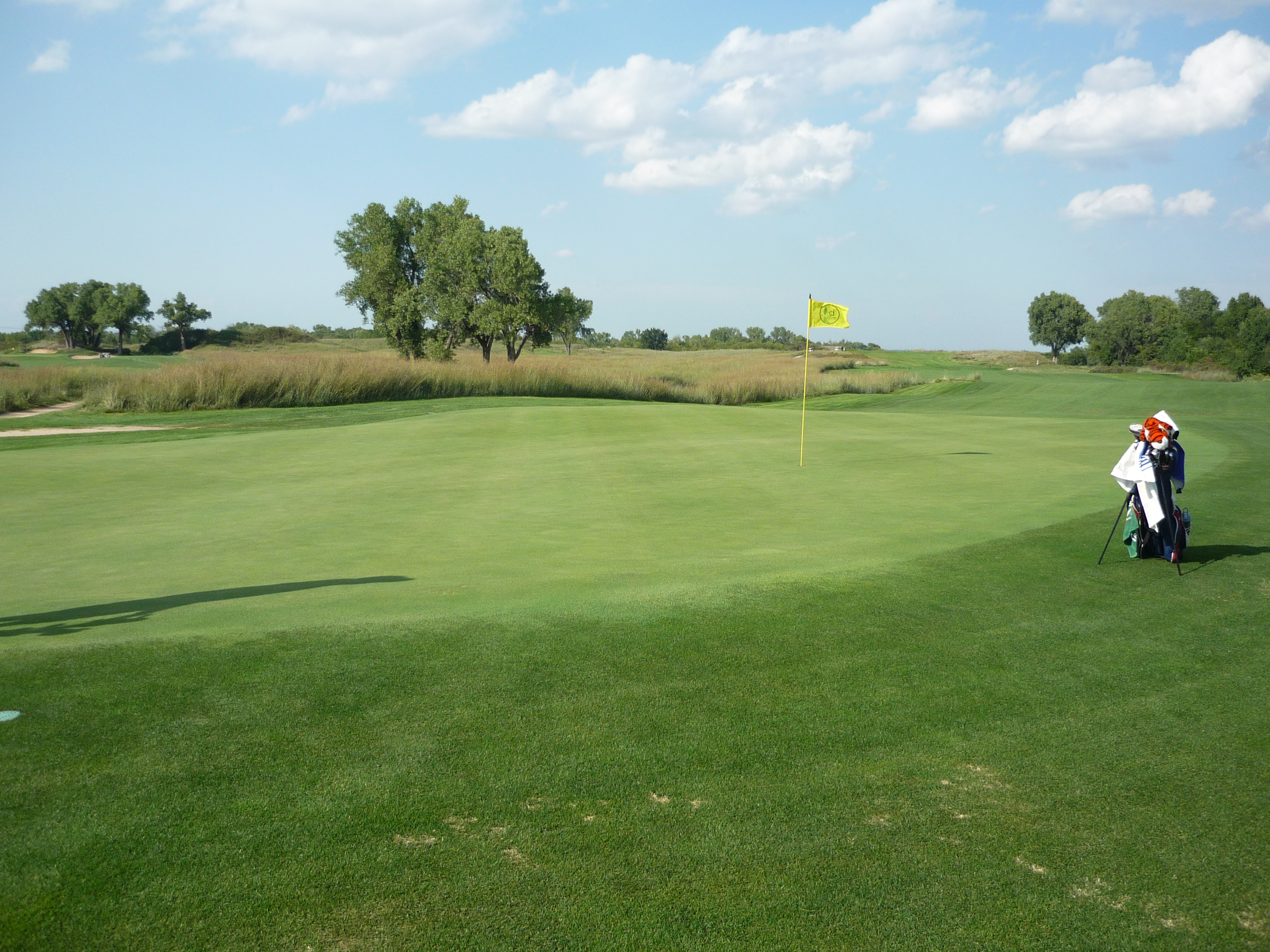
Hole 17 – 500 yards – Par 5 – Pheasant Hollow
This is one of the best holes on the property. A good drive can set you up to go for it in two. With the slope in the fairway, you want to be as straight as possible to avoid bouncing into the rough.
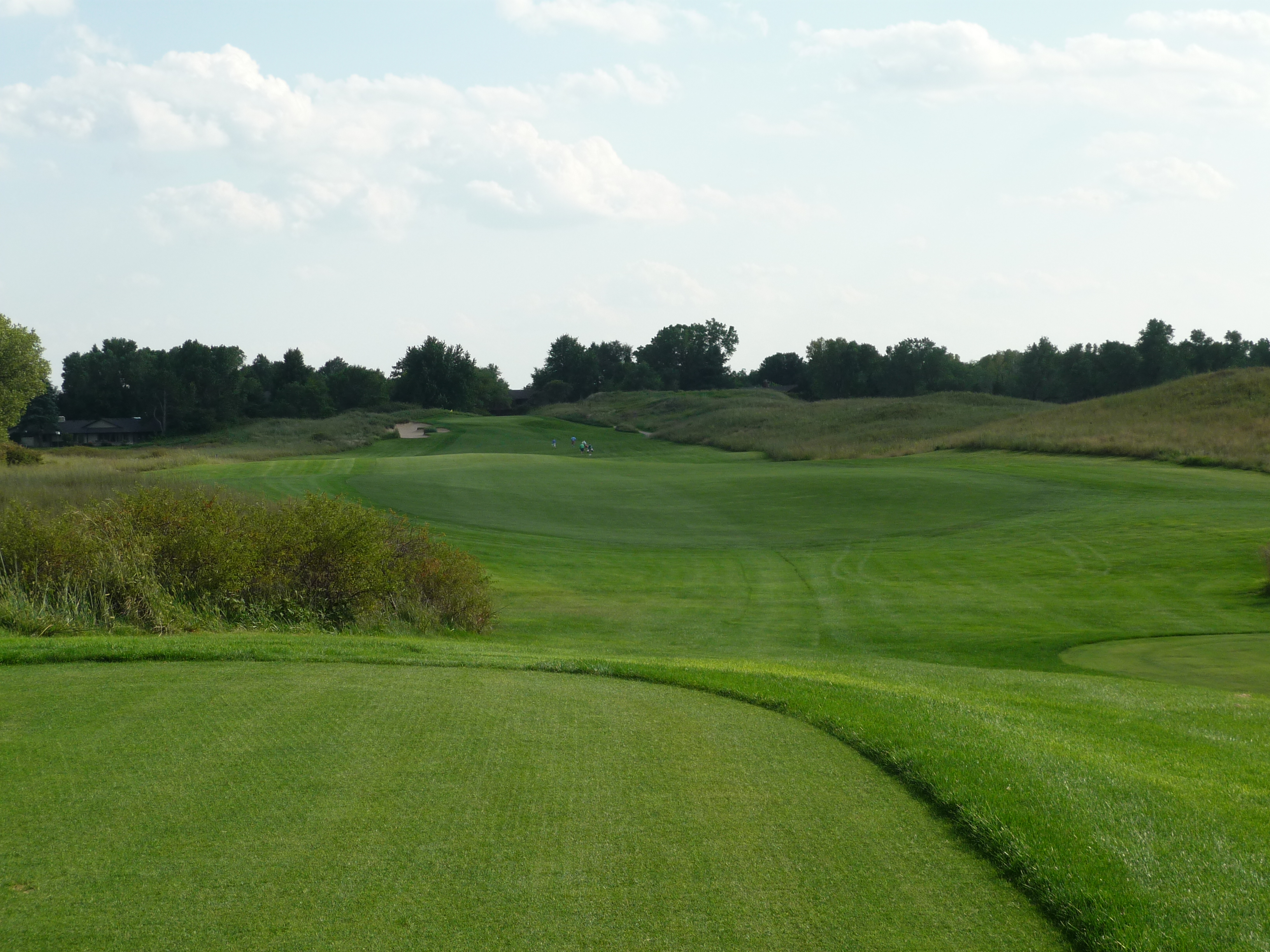
You can see that the second shot will play uphill.
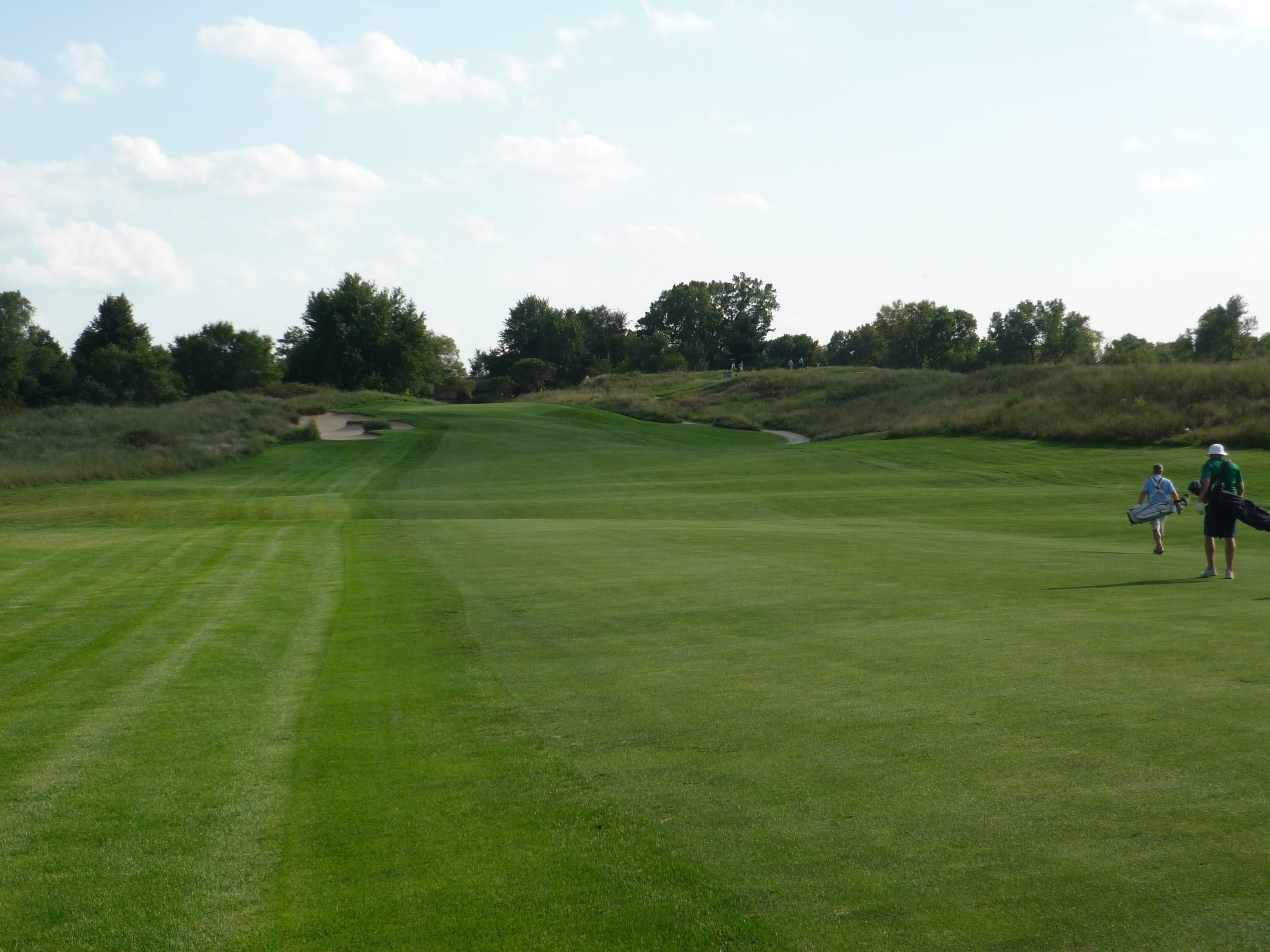
The approach plays to a crazy green. It falls off on the front and right side. You want to be sure of your yardage when you are playing the shot.
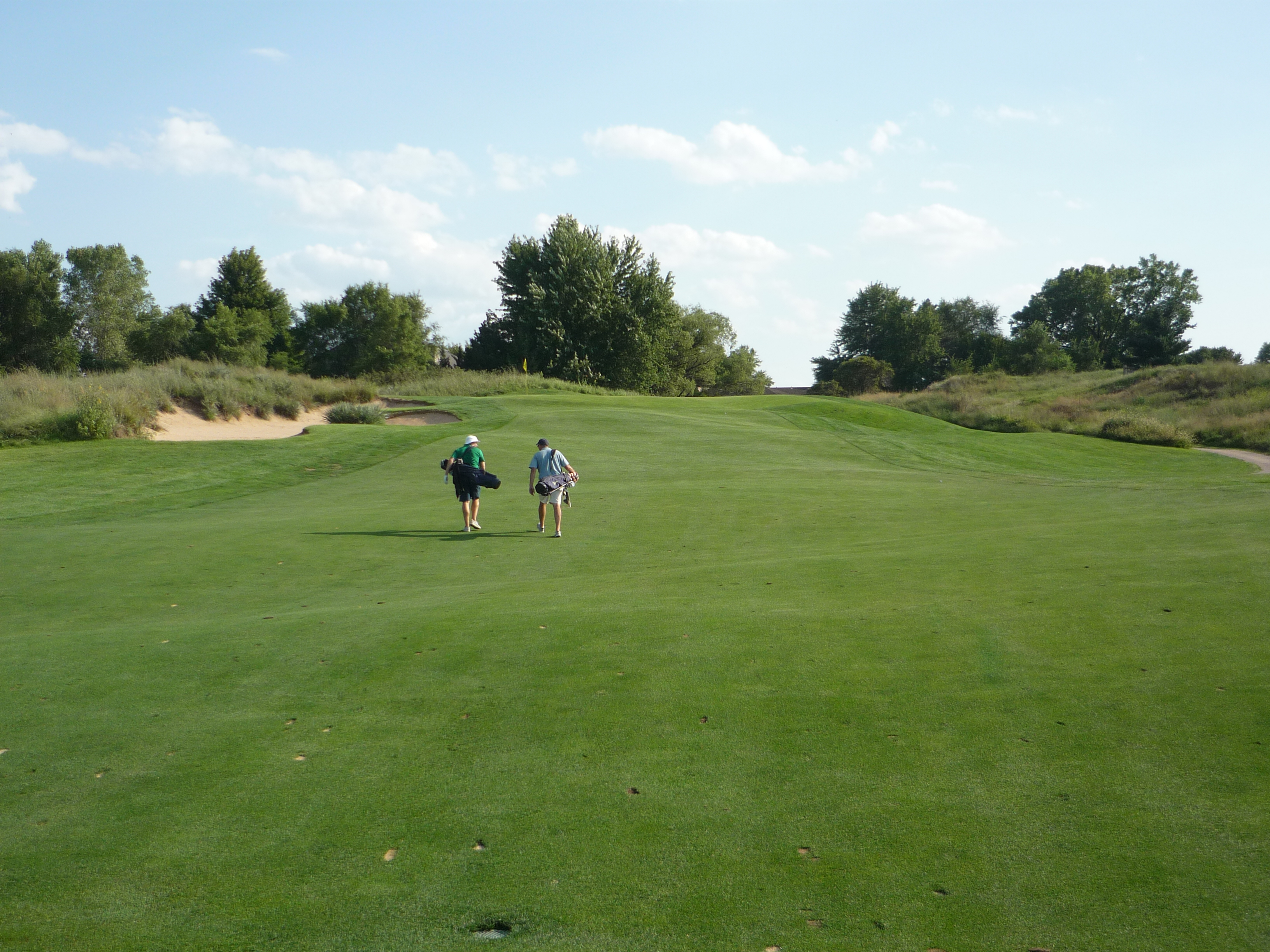
You can see the slope on the front of the green in the photo below. Anything hit in that area will definitely roll back off the green.
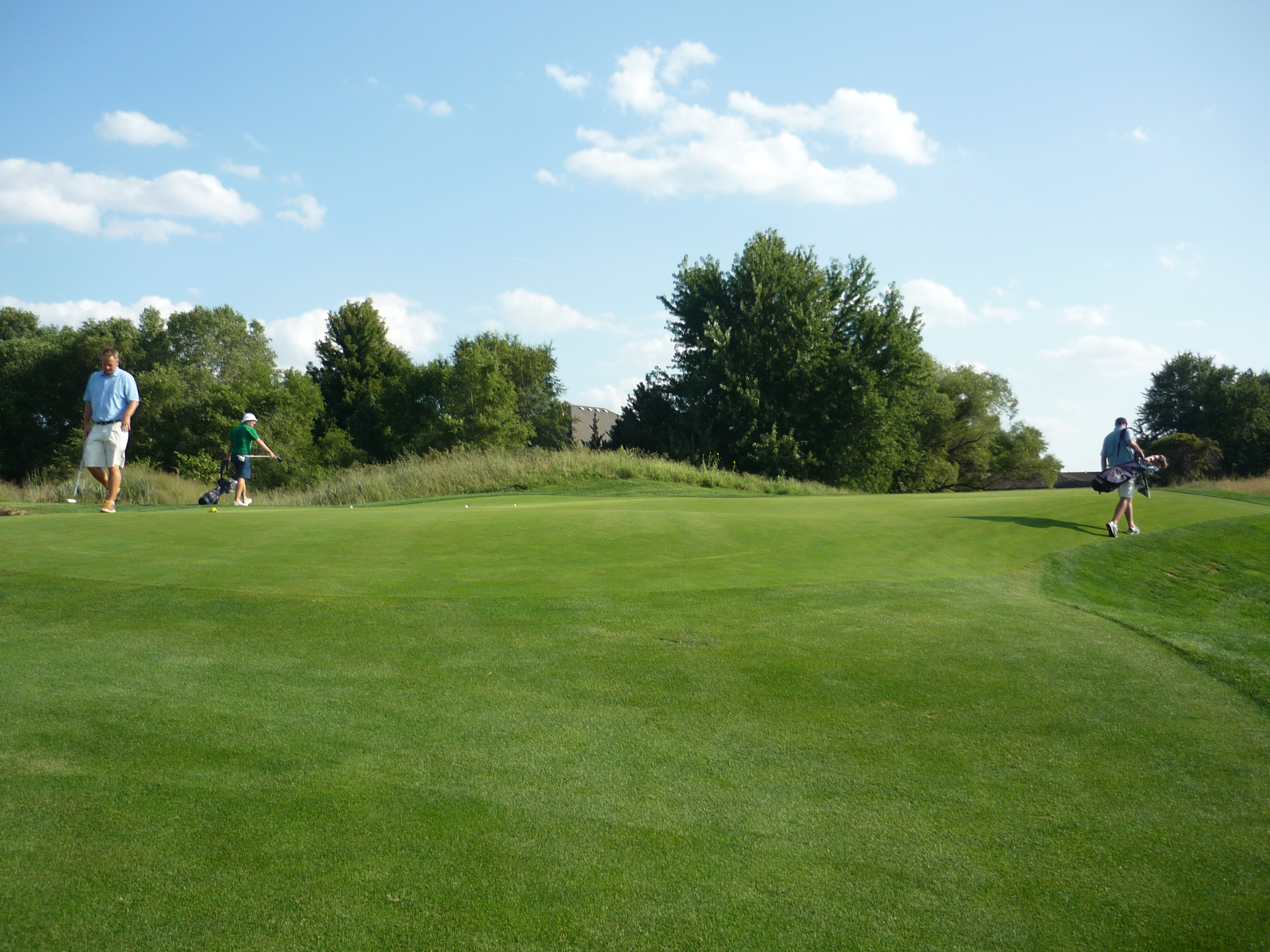
Here is another angle.
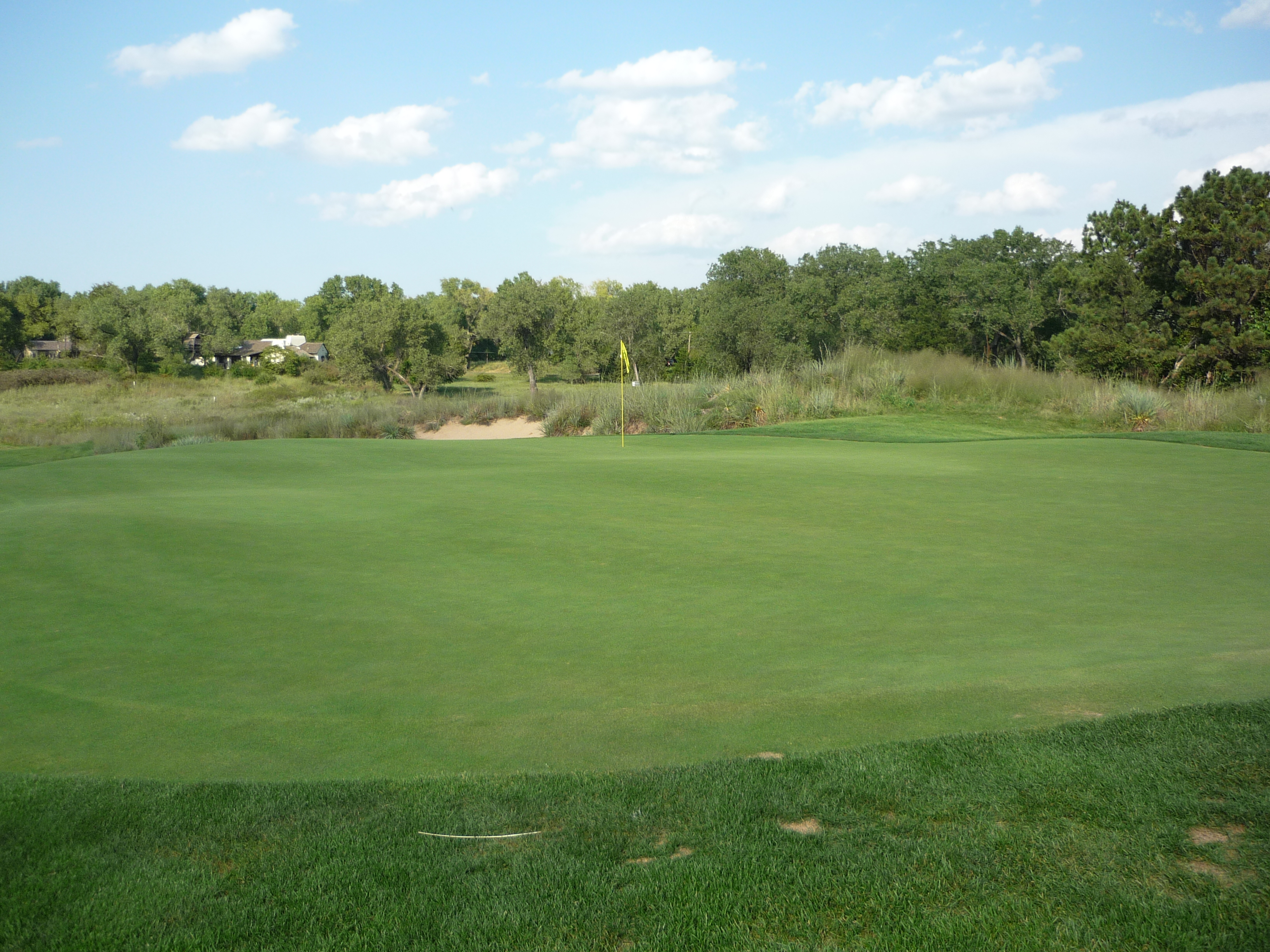
The photo below from the eighteenth tee really demonstrates the slope of the green. You can see the almost wave-like quality to the putting surface.
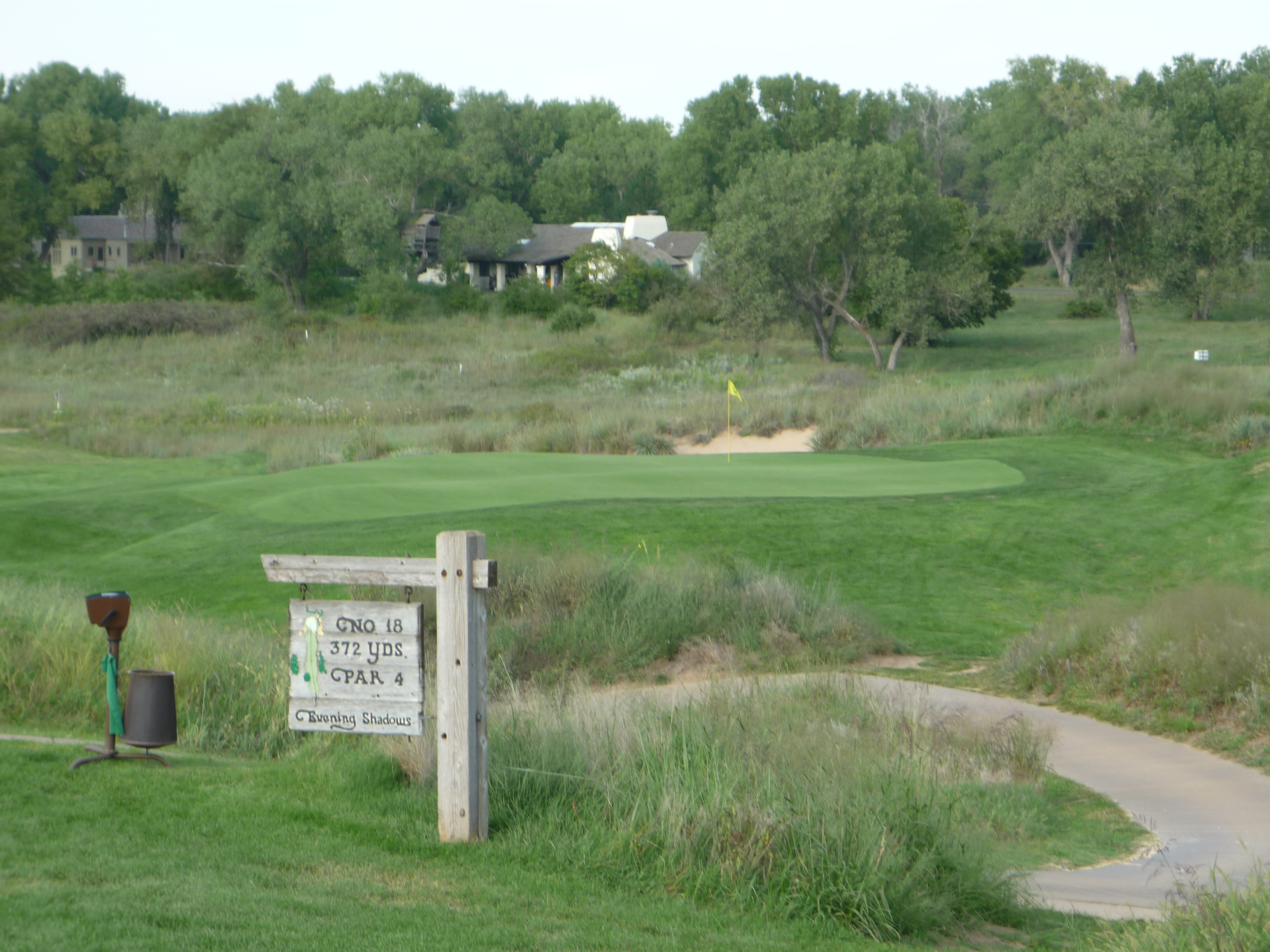
Hole 18 – 382 yards – Par 4 – Evening Shadow
The final hole gives you options. You can hit many clubs off this tee. The longer you go down the left side the more likely you are to run out of short grass. The shot can be a little awkward because the fairway is angled away from the tee.
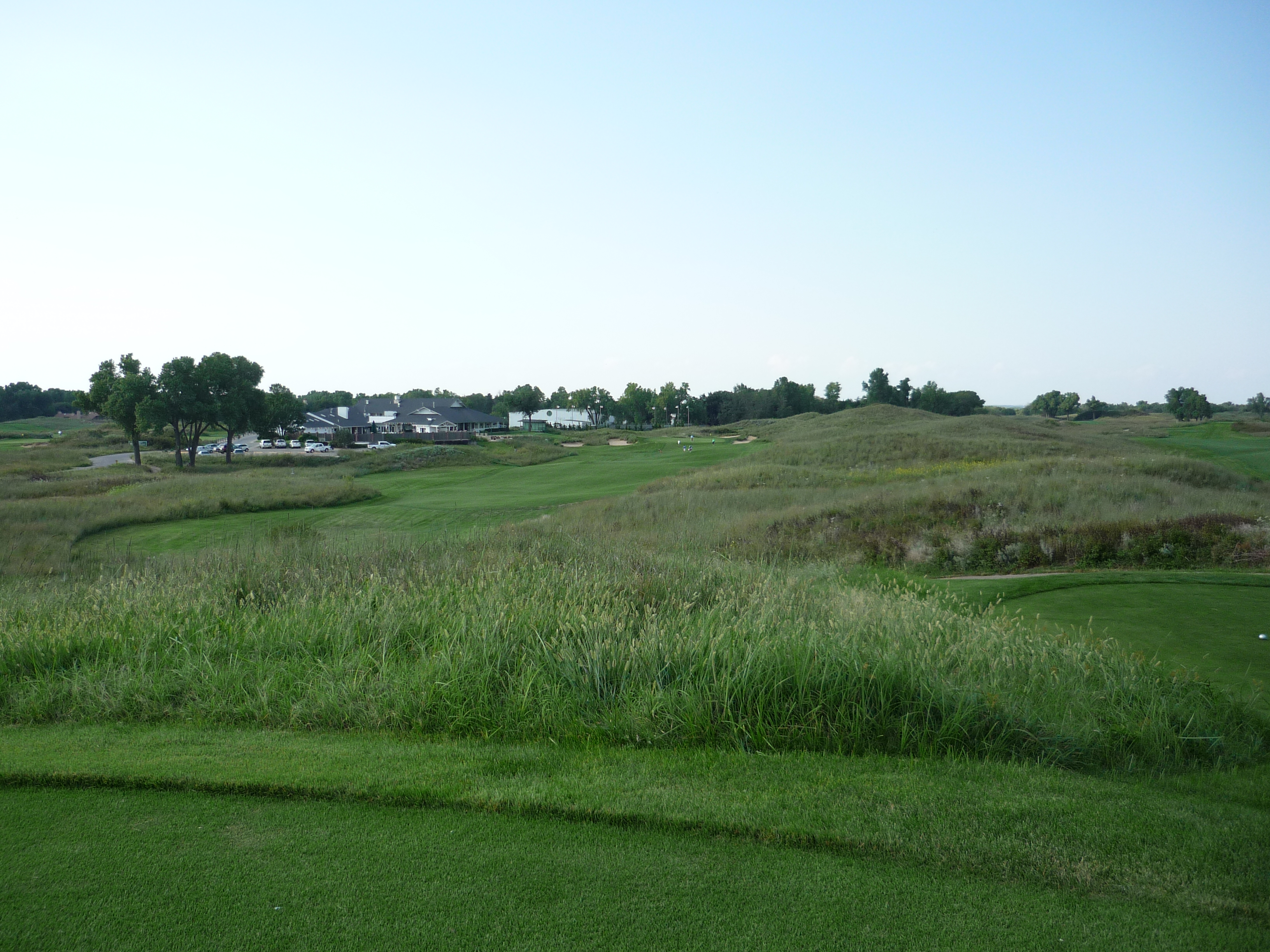
The approach shot can be seen below. There is not much to add that the picture doesn’t show.
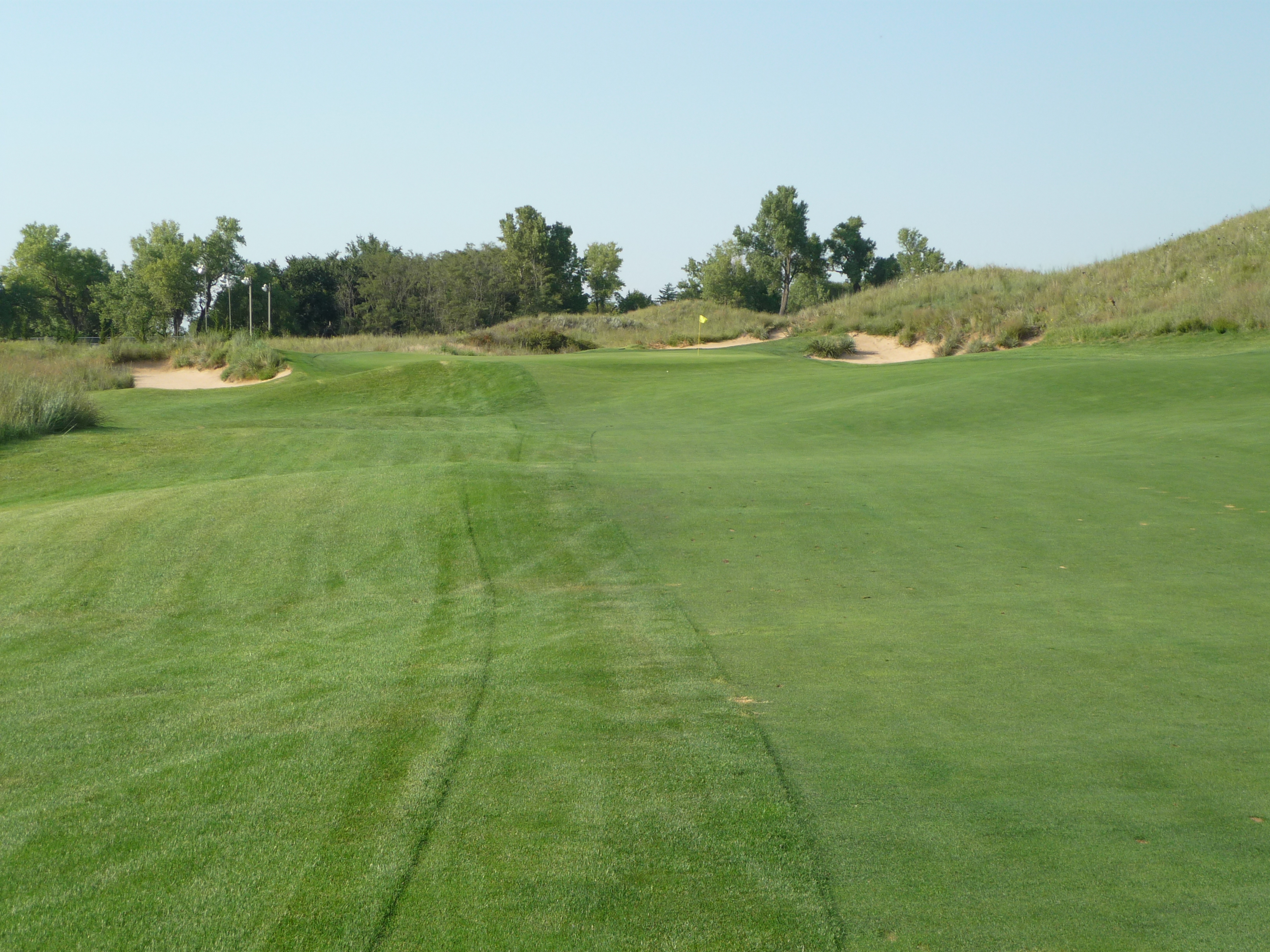
You can see the green has a false front like many others. You need to make sure you get the approach up onto the green a little bit or you’ll be chipping.
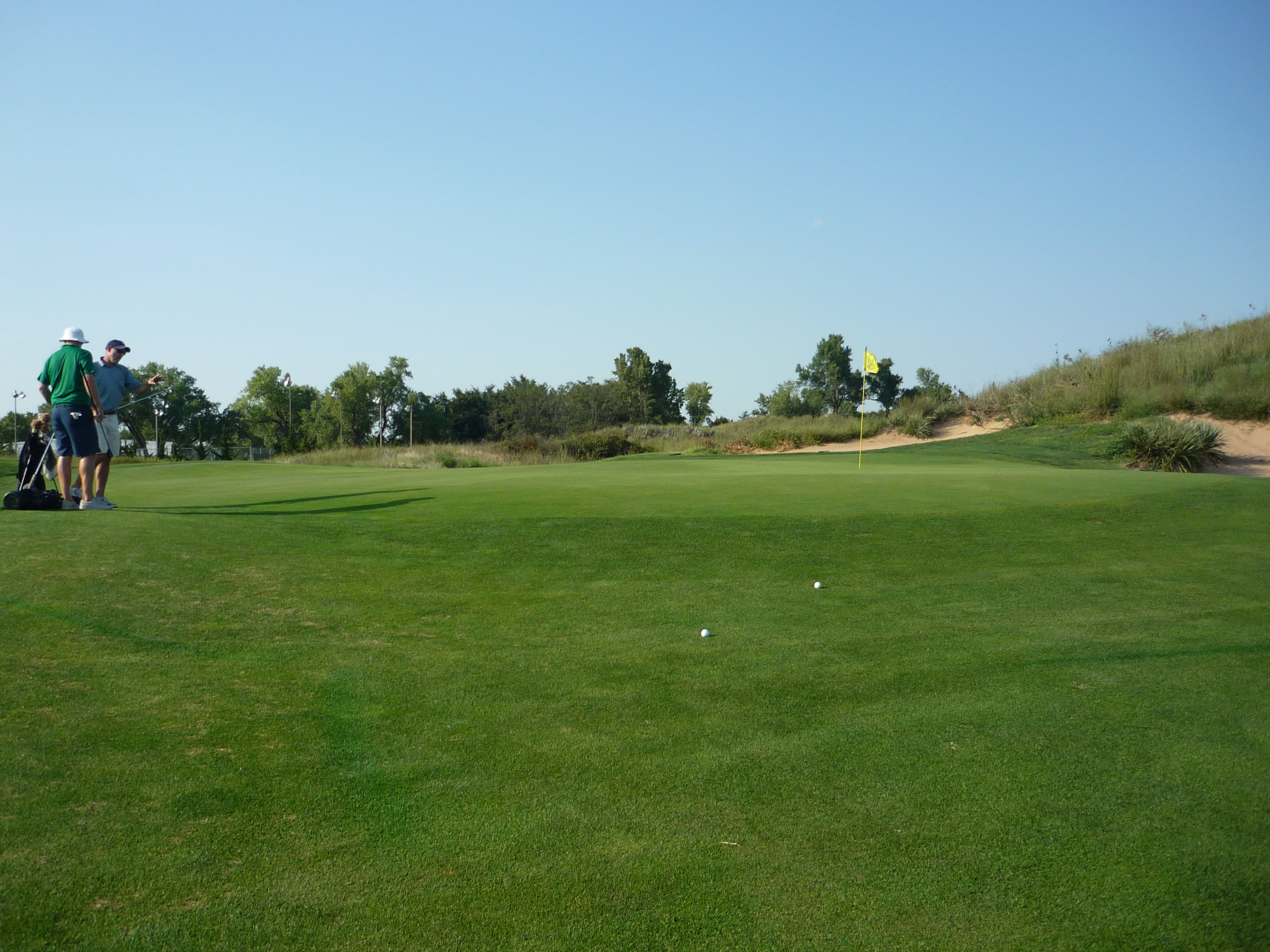
Put simply, the experience at Prairie Dunes is awesome. It has one of the best sets of greens I have ever seen. The variety of shots that I had to play was stimulating. The course was firm and fast. It felt well established on the site and it was a total joy from start to finish. If you have a chance to play it, do it! I know I say this a lot, but that is the case when you play Top 100’s. This was a special experience.

Jimmy,
Special sounding experience, and cool looking course! I love the look of the sloping, sometimes domed greens, they look very tough! In my experience, any course that has a big clock is legit.
Cheers
Josh
Haha thanks Josh. Yes it was a special time.
Aloha Jimmy,
Great post. I think I would enjoy Prairie Dunes – not score well but I would enjoy it. Long and straight are frequently different things in my hands, I would contribute to the burnt Titlists. Thanks.
A Hui Hou,
Wayne
It is quite a place Wayne! I contributed a few balls that will get burned up. Thanks for checking in!
Jimmy
Prairie Dunes looks awesome. Originally, it looked “flat” links style, but after seeing the pictures, I would surmise that it was anything but “flat”! Thanks for sharing!
Cheers
Jim
Correct Jim, it is not flat. It had wonderful, varying terrain. Quite a place.
Thanks for the tour and great pics! Prairie Dunes is one of my most desired stops. Such a great course. I’m with you completely on 15.
Thanks Criss. Glad you liked it!